Tyco Safety Canada 113G255SM Dual Alarm Communicator User Manual 29007848R001 Draft updated by MM DRAFT 02
Digital Security Controls Ltd. Dual Alarm Communicator 29007848R001 Draft updated by MM DRAFT 02
Contents
- 1. users manual 1
- 2. users manual 2
users manual 2

3G2055-SM-NA
HSPA/3G/2G Wireless Alarm Communicator
TL255-NA
Ethernet/Internet Alarm Communicator
TL2553G-SM-NA
Ethernet/Internet and HSPA/3G/2G Dual-Path Alarm Communicator
v3.0
Installation Manual
Warning: This manual contains information on limitations regarding product use and function and information on the limitations
as to liability of the manufacturer.
Security
Systems
®
DRAFT-02_by_MM
File Name: 29007848R001_Draft_updated_by_MM_DRAFT_02

Table of Contents Alarm Communicator Installlation Manual
2
Warning: Installer Please Read Carefully . . . . . . . . . . . . . . . . . . . . . . . . . . . . . . . . . . . . . . . . . . . . . . . . . . . . . . . . . . . . . . . . 3
General. . . . . . . . . . . . . . . . . . . . . . . . . . . . . . . . . . . . . . . . . . . . . . . . . . . . . . . . . . . . . . . . . . . . . . . . . . . . . . . . . . . . . . . . . 4
Technical Specifications . . . . . . . . . . . . . . . . . . . . . . . . . . . . . . . . . . . . . . . . . . . . . . . . . . . . . . . . . . . . . . . . . . . . . . . . . . . . 5
Features . . . . . . . . . . . . . . . . . . . . . . . . . . . . . . . . . . . . . . . . . . . . . . . . . . . . . . . . . . . . . . . . . . . . . . . . . . . . . . . . . . . . . . .5
UL/ULC Installation Requirements . . . . . . . . . . . . . . . . . . . . . . . . . . . . . . . . . . . . . . . . . . . . . . . . . . . . . . . . . . . . . . . . . . . .5
Ratings . . . . . . . . . . . . . . . . . . . . . . . . . . . . . . . . . . . . . . . . . . . . . . . . . . . . . . . . . . . . . . . . . . . . . . . . . . . . . . . . . . . . . . . .6
Hardware Compatibility . . . . . . . . . . . . . . . . . . . . . . . . . . . . . . . . . . . . . . . . . . . . . . . . . . . . . . . . . . . . . . . . . . . . . . . . . . . . 6
Software Compatability . . . . . . . . . . . . . . . . . . . . . . . . . . . . . . . . . . . . . . . . . . . . . . . . . . . . . . . . . . . . . . . . . . . . . . . . . . . . 6
Communicator Pre Installation Configuration. . . . . . . . . . . . . . . . . . . . . . . . . . . . . . . . . . . . . . . . . . . . . . . . . . . . . . . . . . . . 7
Connect24™ Account and SIM card Activation . . . . . . . . . . . . . . . . . . . . . . . . . . . . . . . . . . . . . . . . . . . . . . . . . . . . . . . . . . . 7
Encryption. . . . . . . . . . . . . . . . . . . . . . . . . . . . . . . . . . . . . . . . . . . . . . . . . . . . . . . . . . . . . . . . . . . . . . . . . . . . . . . . . . . . . . 7
Communicator Installation . . . . . . . . . . . . . . . . . . . . . . . . . . . . . . . . . . . . . . . . . . . . . . . . . . . . . . . . . . . . . . . . . . . . . . . . . . 7
Installing CAT 5 Cable (TL2553G-SM/TL255-SM only) . . . . . . . . . . . . . . . . . . . . . . . . . . . . . . . . . . . . . . . . . . . . . . . . . . . . . 7
Hardware Reset . . . . . . . . . . . . . . . . . . . . . . . . . . . . . . . . . . . . . . . . . . . . . . . . . . . . . . . . . . . . . . . . . . . . . . . . . . . . . . . . . . 8
Establishing a Communication Channel with the SCW Panel. . . . . . . . . . . . . . . . . . . . . . . . . . . . . . . . . . . . . . . . . . . . . . . . . .8
Label Programming for SMS Messages . . . . . . . . . . . . . . . . . . . . . . . . . . . . . . . . . . . . . . . . . . . . . . . . . . . . . . . . . . . . . . . . . 9
ETHERNET/Cellular Programming Options . . . . . . . . . . . . . . . . . . . . . . . . . . . . . . . . . . . . . . . . . . . . . . . . . . . . . . . . . . . . 9
System Options . . . . . . . . . . . . . . . . . . . . . . . . . . . . . . . . . . . . . . . . . . . . . . . . . . . . . . . . . . . . . . . . . . . . . . . . . . . . . . . . . . 9
Programming Options. . . . . . . . . . . . . . . . . . . . . . . . . . . . . . . . . . . . . . . . . . . . . . . . . . . . . . . . . . . . . . . . . . . . . . . . . . . . . 12
Communications Reporting Codes. . . . . . . . . . . . . . . . . . . . . . . . . . . . . . . . . . . . . . . . . . . . . . . . . . . . . . . . . . . . . . . . . . . . 15
Ethernet Receiver 1 Options . . . . . . . . . . . . . . . . . . . . . . . . . . . . . . . . . . . . . . . . . . . . . . . . . . . . . . . . . . . . . . . . . . . . . . . .16
Ethernet Receiver 2 Options . . . . . . . . . . . . . . . . . . . . . . . . . . . . . . . . . . . . . . . . . . . . . . . . . . . . . . . . . . . . . . . . . . . . . . . .17
Ethernet Options . . . . . . . . . . . . . . . . . . . . . . . . . . . . . . . . . . . . . . . . . . . . . . . . . . . . . . . . . . . . . . . . . . . . . . . . . . . . . . . . 18
Cellular Receiver 1 Options . . . . . . . . . . . . . . . . . . . . . . . . . . . . . . . . . . . . . . . . . . . . . . . . . . . . . . . . . . . . . . . . . . . . . . . . 18
Cellular Receiver 2 Options . . . . . . . . . . . . . . . . . . . . . . . . . . . . . . . . . . . . . . . . . . . . . . . . . . . . . . . . . . . . . . . . . . . . . . . . 18
Cellular Options. . . . . . . . . . . . . . . . . . . . . . . . . . . . . . . . . . . . . . . . . . . . . . . . . . . . . . . . . . . . . . . . . . . . . . . . . . . . . . . . . 19
Event Notification and Interactive Options . . . . . . . . . . . . . . . . . . . . . . . . . . . . . . . . . . . . . . . . . . . . . . . . . . . . . . . . . . . . . . 20
SMS Notification . . . . . . . . . . . . . . . . . . . . . . . . . . . . . . . . . . . . . . . . . . . . . . . . . . . . . . . . . . . . . . . . . . . . . . . . . . . . . . . .20
Area Label Programming . . . . . . . . . . . . . . . . . . . . . . . . . . . . . . . . . . . . . . . . . . . . . . . . . . . . . . . . . . . . . . . . . . . . . . . . . . 21
User Label Programming . . . . . . . . . . . . . . . . . . . . . . . . . . . . . . . . . . . . . . . . . . . . . . . . . . . . . . . . . . . . . . . . . . . . . . . . . .21
Zone Label Programming . . . . . . . . . . . . . . . . . . . . . . . . . . . . . . . . . . . . . . . . . . . . . . . . . . . . . . . . . . . . . . . . . . . . . . . . . . 21
Panel Event Label Programming . . . . . . . . . . . . . . . . . . . . . . . . . . . . . . . . . . . . . . . . . . . . . . . . . . . . . . . . . . . . . . . . . . . . . 21
Communicator Event Label Programming . . . . . . . . . . . . . . . . . . . . . . . . . . . . . . . . . . . . . . . . . . . . . . . . . . . . . . . . . . . . . . 22
SMS Command and Control Functions. . . . . . . . . . . . . . . . . . . . . . . . . . . . . . . . . . . . . . . . . . . . . . . . . . . . . . . . . . . . . . . . . 22
SMS Command and Control Response. . . . . . . . . . . . . . . . . . . . . . . . . . . . . . . . . . . . . . . . . . . . . . . . . . . . . . . . . . . . . . . . . 24
Diagnostic Testing . . . . . . . . . . . . . . . . . . . . . . . . . . . . . . . . . . . . . . . . . . . . . . . . . . . . . . . . . . . . . . . . . . . . . . . . . . . . . . . 24
System Information (Read Only) . . . . . . . . . . . . . . . . . . . . . . . . . . . . . . . . . . . . . . . . . . . . . . . . . . . . . . . . . . . . . . . . . . . . . 25
System Reset Defaults . . . . . . . . . . . . . . . . . . . . . . . . . . . . . . . . . . . . . . . . . . . . . . . . . . . . . . . . . . . . . . . . . . . . . . . . . . . . 25
ETHERNET/Cellular Programming Worksheets . . . . . . . . . . . . . . . . . . . . . . . . . . . . . . . . . . . . . . . . . . . . . . . . . . . . . . . . 27
System Options . . . . . . . . . . . . . . . . . . . . . . . . . . . . . . . . . . . . . . . . . . . . . . . . . . . . . . . . . . . . . . . . . . . . . . . . . . . . . . . . . 27
Programming Options. . . . . . . . . . . . . . . . . . . . . . . . . . . . . . . . . . . . . . . . . . . . . . . . . . . . . . . . . . . . . . . . . . . . . . . . . . . . . 27
Ethernet Receiver 1 Options . . . . . . . . . . . . . . . . . . . . . . . . . . . . . . . . . . . . . . . . . . . . . . . . . . . . . . . . . . . . . . . . . . . . . . . .28
Ethernet Receiver 2 Options . . . . . . . . . . . . . . . . . . . . . . . . . . . . . . . . . . . . . . . . . . . . . . . . . . . . . . . . . . . . . . . . . . . . . . . .28
Ethernet Options . . . . . . . . . . . . . . . . . . . . . . . . . . . . . . . . . . . . . . . . . . . . . . . . . . . . . . . . . . . . . . . . . . . . . . . . . . . . . . . . 28
Cellular Receiver 1 Options . . . . . . . . . . . . . . . . . . . . . . . . . . . . . . . . . . . . . . . . . . . . . . . . . . . . . . . . . . . . . . . . . . . . . . . . 28
Cellular Receiver 2 Options . . . . . . . . . . . . . . . . . . . . . . . . . . . . . . . . . . . . . . . . . . . . . . . . . . . . . . . . . . . . . . . . . . . . . . . . 28
Cellular Options. . . . . . . . . . . . . . . . . . . . . . . . . . . . . . . . . . . . . . . . . . . . . . . . . . . . . . . . . . . . . . . . . . . . . . . . . . . . . . . . .29
Event Notification and Interactive Options . . . . . . . . . . . . . . . . . . . . . . . . . . . . . . . . . . . . . . . . . . . . . . . . . . . . . . . . . . . . . . 29
Area Label Programming . . . . . . . . . . . . . . . . . . . . . . . . . . . . . . . . . . . . . . . . . . . . . . . . . . . . . . . . . . . . . . . . . . . . . . . . . . 30
User Label Programming . . . . . . . . . . . . . . . . . . . . . . . . . . . . . . . . . . . . . . . . . . . . . . . . . . . . . . . . . . . . . . . . . . . . . . . . . .30
Zone Label Programming . . . . . . . . . . . . . . . . . . . . . . . . . . . . . . . . . . . . . . . . . . . . . . . . . . . . . . . . . . . . . . . . . . . . . . . . . . 31
Panel Event Label Programming . . . . . . . . . . . . . . . . . . . . . . . . . . . . . . . . . . . . . . . . . . . . . . . . . . . . . . . . . . . . . . . . . . . . . 33
Communicator Event Label Programming . . . . . . . . . . . . . . . . . . . . . . . . . . . . . . . . . . . . . . . . . . . . . . . . . . . . . . . . . . . . . . 35
SMS Command and Control Functions. . . . . . . . . . . . . . . . . . . . . . . . . . . . . . . . . . . . . . . . . . . . . . . . . . . . . . . . . . . . . . . . . 36
SMS Command and Control Response. . . . . . . . . . . . . . . . . . . . . . . . . . . . . . . . . . . . . . . . . . . . . . . . . . . . . . . . . . . . . . . . . 36
Diagnostic Testing . . . . . . . . . . . . . . . . . . . . . . . . . . . . . . . . . . . . . . . . . . . . . . . . . . . . . . . . . . . . . . . . . . . . . . . . . . . . . . . 36
System Information (Read Only) . . . . . . . . . . . . . . . . . . . . . . . . . . . . . . . . . . . . . . . . . . . . . . . . . . . . . . . . . . . . . . . . . . . . . 36
System Reset Defaults . . . . . . . . . . . . . . . . . . . . . . . . . . . . . . . . . . . . . . . . . . . . . . . . . . . . . . . . . . . . . . . . . . . . . . . . . . . . 37
End User Licence Agreement . . . . . . . . . . . . . . . . . . . . . . . . . . . . . . . . . . . . . . . . . . . . . . . . . . . . . . . . . . . . . . . . . . . . . . . 38
Limited Warranty. . . . . . . . . . . . . . . . . . . . . . . . . . . . . . . . . . . . . . . . . . . . . . . . . . . . . . . . . . . . . . . . . . . . . . . . . . . . . . . . 39
TABLE OF CONTENTS
DRAFT-02_by_MM

Alarm Communicator Installlation Manual Warning: Installer Please Read Carefully
3
WARNING: INSTALLER PLEASE READ CAREFULLY
Note to Installers
The Warnings on this page contain vital information. As the only individual in
contact with system users, it is the installer’s responsibility to bring each item in
this Warning to the attention of all users of this system.
System Failures
This system has been carefully designed to be as effective as possible. There are
circumstances, however, involving fire, burglary, or other types of emergencies
where it may not provide protection. Any alarm system of any type may be com-
promised deliberately or may fail to operate as expected for a variety of reasons.
Some, but not all, of the reasons may be:
Access by Intruders
Intruders may enter through an unprotected access point, circumvent a sensing
device, evade detection by moving through an area of insufficient coverage, dis-
connect a warning device, or interfere with or prevent the proper operation of the
system.
Component Failure
Although every effort has been made to make this system as reliable as possible,
the system may fail to function as intended due to the failure of a component.
Compromise of Radio Frequency (Wireless) Devices
Signals may not reach the receiver under all circumstances which could include
metal objects placed on or near the radio path or deliberate jamming or other
inadvertent radio signal interference.
Criminal Knowledge
This system contains security features which were known to be effective at the
time of manufacture. It is possible for persons with criminal intent to develop
techniques which reduce the effectiveness of these features. It is important that
your security system be reviewed periodically to ensure that its features remain
effective and that it is updated or replaced if it is found that it does not provide
the protection expected.
Failure of Replaceable Batteries
This system’s wireless transmitters have been designed to provide several years
of battery life under normal conditions. The expected battery life is a function of
the device environment, usage, and type. Ambient conditions such as high
humidity, high or low temperatures, or large temperature fluctuations may reduce
the expected battery life. While each transmitting device has a low battery moni-
tor which identifies when the batteries need to be replaced, this monitor may fail
to operate as expected. Regular testing and maintenance will keep the system in
good operating condition.
Inadequate Installation
A security system must be installed properly in order to provide adequate protec-
tion. Every installation should be evaluated by a security professional to ensure
that all access points and areas are covered. Locks and latches on windows and
doors must be secure and operate as intended. Windows, doors, walls, ceilings
and other building materials must be of sufficient strength and construction to
provide the level of protection expected. A reevaluation must be done during and
after any construction activity. An evaluation by the fire and/or police depart-
ment is highly recommended if this service is available.
Inadequate Testing
Most problems that would prevent an alarm system from operating as intended
can be found by regular testing and maintenance. The complete system should be
tested weekly and immediately after a break-in, an attempted break-in, a fire, a
storm, an earthquake, an accident, or any kind of construction activity inside or
outside the premises. The testing should include all sensing devices, keypads,
consoles, alarm indicating devices, and any other operational devices that are
part of the system.
Insufficient Time
There may be circumstances when the system will operate as intended, yet the
occupants will not be protected from an emergency due to their inability to
respond to the warnings in a timely manner. If the system is remotely monitored,
the response may not occur in time to protect the occupants or their belongings.
Motion Detectors
Motion detectors can only detect motion within the designated areas as shown in
their respective installation instructions. They cannot discriminate between
intruders and intended occupants. Motion detectors do not provide volumetric
area protection. They have multiple beams of detection and motion can only be
detected in unobstructed areas covered by these beams. They cannot detect
motion which occurs behind walls, ceilings, floor, closed doors, glass partitions,
glass doors or windows. Any type of tampering whether intentional or uninten-
tional such as masking, painting, or spraying of any material on the lenses, mir-
rors, windows or any other part of the detection system will impair its proper
operation.
Passive infrared motion detectors operate by sensing changes in temperature.
However their effectiveness can be reduced when the ambient temperature rises
near or above body temperature or if there are intentional or unintentional
sources of heat in or near the detection area. Some of these heat sources could be
heaters, radiators, stoves, barbeques, fireplaces, sunlight, steam vents, lighting
and so on.
Power Failure
Control units, intrusion detectors, smoke detectors and many other security
devices require an adequate power supply for proper operation. If a device oper-
ates from batteries, it is possible for the batteries to fail. Even if the batteries have
not failed, they must be charged, in good condition and installed correctly. If a
device operates only by AC power, any interruption, however brief, will render
that device inoperative while it does not have power. Power interruptions of any
length are often accompanied by voltage fluctuations which may damage elec-
tronic equipment such as a security system. After a power interruption has
occurred, immediately conduct a complete system test to ensure that the system
operates as intended.
Security and Insurance
Regardless of its capabilities, an alarm system is not a substitute for property or
life insurance. An alarm system also is not a substitute for property owners, rent-
ers, or other occupants to act prudently to prevent or minimize the harmful
effects of an emergency situation.
Smoke Detectors
Smoke detectors that are a part of this system may not properly alert occupants of
a fire for a number of reasons, some of which follow. The smoke detectors may
have been improperly installed or positioned. Smoke may not be able to reach
the smoke detectors, such as when the fire is in a chimney, walls or roofs, or on
the other side of closed doors. Smoke detectors may not detect smoke from fires
on another level of the residence or building.
Every fire is different in the amount of smoke produced and the rate of burning.
Smoke detectors cannot sense all types of fires equally well. Smoke detectors
may not provide timely warning of fires caused by carelessness or safety hazards
such as smoking in bed, violent explosions, escaping gas, improper storage of
flammable materials, overloaded electrical circuits, children playing with
matches, or arson.
Even if the smoke detector operates as intended, there may be circumstances
when there is insufficient warning to allow all occupants to escape in time to
avoid injury or death.
Telephone Lines
If telephone lines are used to transmit alarms, they may be out of service or busy
for certain periods of time. Also an intruder may cut the telephone line or defeat
its operation by more sophisticated means which may be difficult to detect.
Warning Devices
Warning devices such as sirens, bells, horns, or strobes may not warn people or
waken someone sleeping if there is an intervening wall or door. If warning
devices are located on a different level of the residence or premise, then it is less
likely that the occupants will be alerted or awakened. Audible warning devices
may be interfered with by other noise sources such as stereos, radios, televisions,
air conditioners, other appliances, or passing traffic. Audible warning devices,
however loud, may not be heard by a hearing-impaired person.
DRAFT-02_by_MM
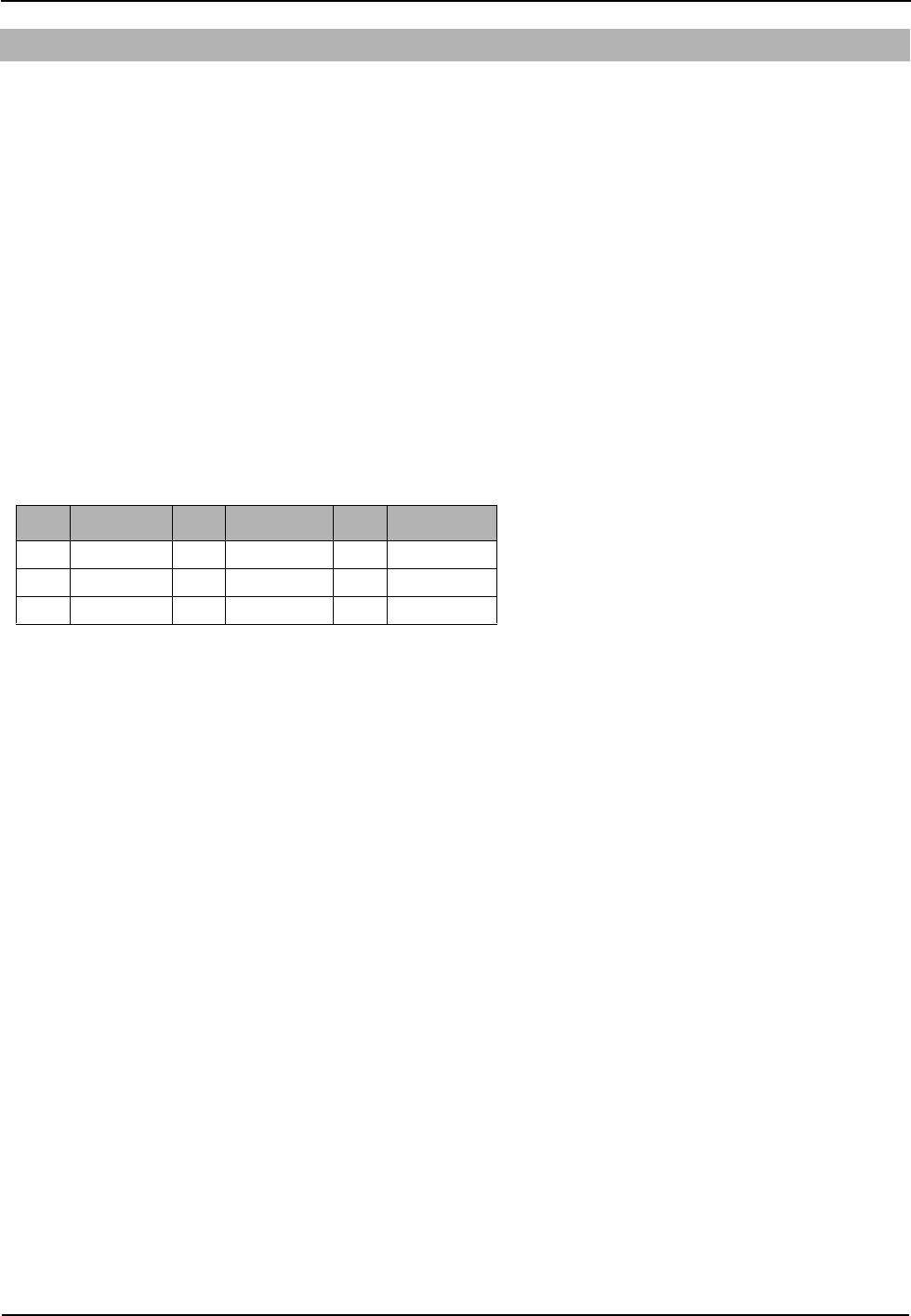
Keypad Data Display Alarm Communicator Installlation Manual
4
Domain Name Service (DNS) programming is not permitted in UL/ULC listed systems.
KEYPAD DATA DISPLAY
•Section-Toggle Options: The number is displayed when Toggle is ON, the number is not displayed when Toggle is OFF. (e.g., Tog-
gle Options displays: “[
--
3
--
6
--
]”. Options 3 and 6 are ON, all others are OFF). Pressing keys 1 through 8 will alternately turn
the Toggle ON and OFF.
•HEX/Decimal Data: Values that are provided with two defaults, separated by a / character, use the format: hexadecimal followed by
decimal equivalent (e.g., Default [0BF5/3061]). Hexadecimal numbers are shown, with all leading zeroes, to the full field length
defined for the number.
ENTERING DATA FROM KEYPAD
To enter data at the keypad, press the number key, from the table below, to select the character that you want. Pressing the number key
repeatedly will scroll through the characters available for that key. Press the [*] key and use
[<] [>] keys to scroll to one of the following
selections: (Press [*] to select the Option.)
•ASCII Entry. Use this mode to enter ASCII characters from the keypad.
•Clear to End. This selection will clear the remainder of the display.
•Clear Display.This selection will completely erase all entries on the display.
•Change Case. Toggles between upper/lower depending on current selection.
NOTE: The “0” on the keypad is used to delete characters.
ENTERING ASCII CHARACTERS
To enter American Standard Code for Information Interchange (ASCII) characters at the keypad, perform the following:
1. Press [*] and use [<] [>] keys to scroll to “ASCII Entry”.
2. Press [*] to select ASCII entry mode.
3. Use the
[<] [>] keys to scroll to display the ASCII character you want to use and press [*] to accept.
4. Press [*] to exit ASCII character entry mode and return to normal entry.
NOTE: Authorized access to Connect24 (3G2055-SM/TL2553G-SM) or DLS IV (TL255-SM) is required to modify any Ethernet/Cel-
lular Programming Section. Specific panel Sections must be configured for proper operation of the Communicator with the
panel.
MOUNTING CONSIDERATIONS
The Cellular/Ethernet Communicator is fixed, wall-mounted unit and shall be installed in the location specified in these instructions.
The equipment enclosure must be fully assembled and closed, with all the necessary screws/tabs and it must be secured to a wall before
operation.
Internal wiring must be routed in a manner that prevents:
• Excessive strain on wire and on terminal connections,
• Interference between power limited and non power limited wiring,
• Loosening of terminal connections, or
• Damage of conductor insulation.
WARNING: NEVER INSTALL THIS EQUIPMENT DURING A LIGHTNING STORM!
The Installer must instruct the System user on each of the following items:
• This manual shall be used in conjunction with the Alarm controller manual; All the safety instructions specified within that manual
shall be observed. (or equivalent)
• Do not attempt to service this product. Opening or removing covers may expose the user to dangerous
voltages or other risks.
• Any servicing shall be referred to trained service personnel only.
• Use authorized accessories only with this equipment.
General
Table 1:Data Entry at Keypad
Key Value Key Value Key Value
1 1-A-B-C 4 4-J-K-L 7 7-S-T-U
2 2-D-E-F 5 5-M-N-O 8 8-V-W-X
3 3-G-H-I 6 6-P-Q-R 9 9-Y-Z-0
DRAFT-02_by_MM
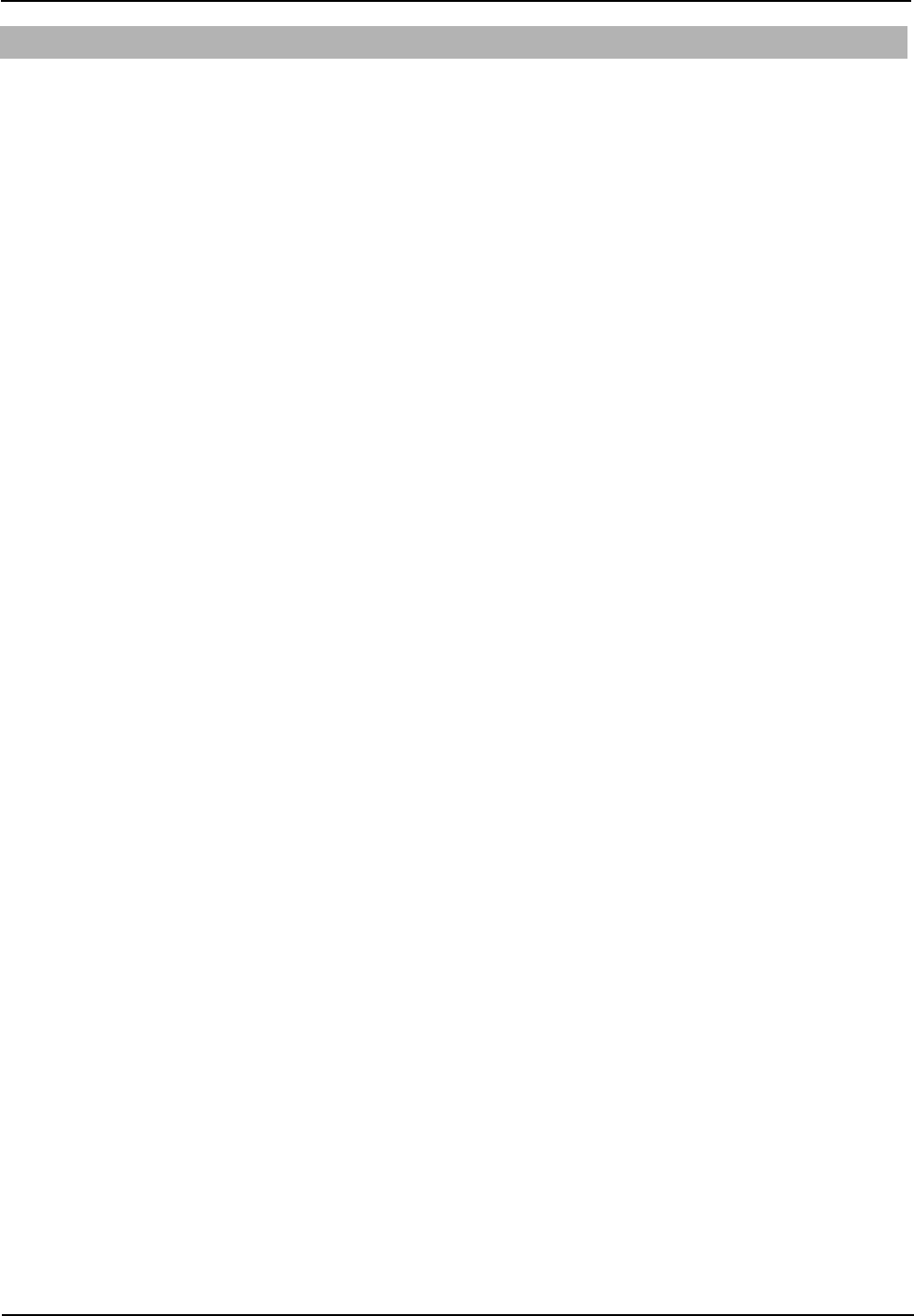
Alarm Communicator Installlation Manual Features
5
3G2055-SM: A HSPA/3G/2G wireless Alarm Communicator that sends alarm communication to Sur-Gard System I, II, III (SG-
DRL3IP), and IV (SG-DRL4IP) central station receivers via a HSPA/3G/2G digital cellular network. The 3G2055-SM uses an internal
antenna for radio coverage.
TL2553G-SM: A dual-path HSPA/3G/2G/Ethernet Alarm Communicator that sends alarm communication to Sur-Gard System I, II,
III, and IV central station receivers through Ethernet/Internet or a HSPA/3G/2G digital cellular network.
The dual path Communicator can be used as either a backup or primary Communicator. The Communicator supports Internet Protocol
(IP) transmission of panel and internal events over Ethernet/Internet and/or HSPA/3G/2G. The TL2553G-SM uses an internal antenna
for radio coverage.
TL255-SM: An Ethernet only Alarm Communicator that send alarm communication to Sur-Gard System I, II, III, and IV central sta-
tion receivers through Ethernet/Internet networks.
The HSPA/3G/2G performance of the 3G2055-SM and TL2553G-SM Alarm Communicators depends greatly on HSPA/3G/2G net-
work coverage. The unit should not be mounted in the final location without first ensuring that HSPA/3G/2G radio reception is ade-
quate.
• Do not stay close to the equipment during device operation and to do not touch the antenna, (or equivalent) and,
• Recycle the battery according to the local rules and regulations.
NOTE: Prior to installation of the 3G2055-SM or TL2553G-SM Communicator, confirm with your carrier that the HSPA/3G/2G net-
work is available and active in the area where the Communicator will be installed and that radio signal strength is adequate for
uninterrupted service.
FEATURES
UL/ULC INSTALLATION REQUIREMENTS
• For ULC Residential fire and burglary applications the 3G2055-SM/TL2553G-SM/TL255-SM can be used as primary communica-
tion channel via either HSPA/3G/2G or Ethernet (as applicable) or as a back-up in conjunction with the Digital Alarm Communicator
Transmitter (DACT). Test transmission every 24hours shall be enabled on each channel.
• For UL Residential fire and burglary applications the 3G2055-SM/TL2553G-SM/TL255-SM can be used as primary communica-
tion channel via either HSPA/3G/2G or Ethernet, or as a back-up in conjunction with the DACT. (30 day test transmission is required
on each channel).
Technical Specifications
• 128-bit Advanced Encryption Standard (AES) encryption via HSPA/3G/2G and Ethernet/Internet.
• Activating, initializing and remote programming through Connect 24.
• Back up or primary 3G alarm communication.
• Does not require an external 3G antenna.
• Ethernet LAN/WAN 10/100 BaseT (TL2553G-SM/TL255-SM only).
• Full event reporting to central station.
• Fully redundant Ethernet/Internet and 3G Dual-path Alarm Communication (TL2553G-SM only).
• Individual Ethernet and/or Cellular Periodic test transmission.
• 2-way audio (listen-in feature) provided over Cellular and over the IP - Dan Nita suggested it in his comments. Ask if the other
manual needs this line and update other manual.
• Integrated call routing.
• Panel remote uploading/downloading support via 3G and Ethernet/Internet.
• Programmable Labels (Zone and Partition Labels autosync with the panel.)
• Quad-Band Operation: 850 MHz, 900 MHz, 1800 MHz, and 1900 MHz.
• CID and SIA format reporting.
• Subscriber Identity Module (SIM) card included with Communicator (NA only).
• Supervision heartbeats via HSPA/3G/2G and/or Ethernet/Internet.
DRAFT-02_by_MM
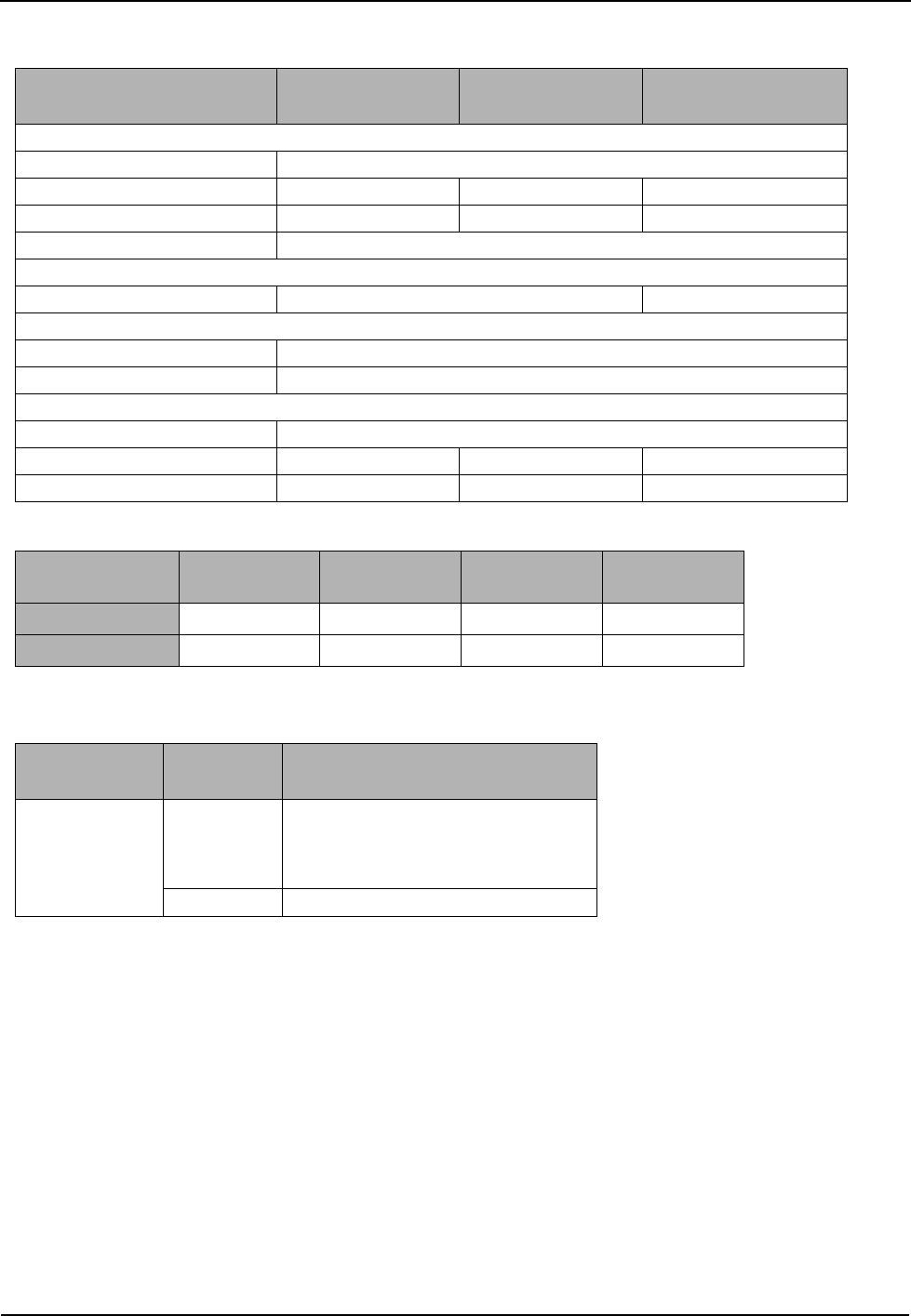
Ratings Alarm Communicator Installlation Manual
6
RATINGS
HARDWARE COMPATIBILITY
Products or components of products, which perform communications functions only shall comply with the requirements applicable to
communications equipment as specified in UL60950 or CAN/CSA-C22.2 No. 60950-1, Information Technology Equipment - Safety -
Part 1: General Requirements. Where network interfaces are internal to the control unit or receiver, compliance to CAN/CSA-C22.2
No. 950-1 is adequate. Such components include, but are not limited to: hubs; routers; NIDs; Third party communications service pro-
viders; DSL modems; and Cable modems.
SOFTWARE COMPATABILITY
The Communicator is compatible with the following software:
• Connect24 (using SMS Protocol).
• Connect24 Remote Flash. (IP using TFTP).
• System Administrator.
Table 2: Communictor Electrical Ratings
Model 3G2055-SM
Cellular Only TL2550GS
Ethernet and Cellular TL255-SM
Ethernet Only
Power Supply Ratings
Input Voltage 3.5 / 3.9 / 4.2 VDC (min / NOM / MAX) from the SCW panel
Current Consumption 75 mA 100 mA 75 mA
Standby Current (@ 3.7V) 75 mA 100 mA 75 mA
Alarm (Transmitting) Current) 400 mA @ 3.7V during transmission
Antenna Specifications
Dual band Antenna See Table 2 and Table 3 N/A
Environmental Specifications
Operating Temperature 0°C - 49°C (32°F- 120°F)
Humidity 5% ~ 85% relative humidity, non-condensing
Mechanical Specifications
Board Dimensions (mm) 109 x 110
Weight (grams) 60 65 45
Current Consumption 75 mA 100 mA 75 mA
Table 3: Quad Band Antenna Frequencies
Transmit
Direction ECellular 900
International DCS 1800
International Cellular 850
North America PCS 1900
North America
TX Frequency 880 ~ 915 MHz 1710 ~ 1785 MHz 824 ~ 849 MHz 1850 ~ 1910 MHz
RX Frequency 925 ~ 960 MHz 1805 ~ 1880 MHz 869 ~ 894 MHz 1930 ~ 1990 MHz
Table 4: Compatibility
Communicator Receiver/
ControlPanel Description
3G2055-SM
TL255-SM-NA
TL2553G-SM
Receiver
Sur-Gard System I Receiver, version 1.10+
Sur-Gard System II Receiver, version 2.00+
Sur-Gard DRL3IP, version 2.20+
Sur-Gard DRL4IP, version 1.10+
Control Panel SCW9055/SCW9057 V1.00
DRAFT-02_by_MM

Alarm Communicator Installlation Manual Connect24™ Account and SIM card Activation
7
CONNECT24™1 ACCOUNT AND SIM CARD ACTIVATION
(Before Installation)
Installation of the Communicator requires activation with Connect24 before operation. Dealer application forms and additional infor-
mation on the Connect24 Voice Response Unit (VRU) and graphical user interface (GUI) can be found at http://www.Connect24.com
or by telephone at: USA 1-888-251-7458 or CANADA 1-888-955-5583.
IMPORTANT: Prior to installing a 3G2055-SM/TL2553G-SM/TL255-SM Communicator, contact your monitoring station to deter-
mine if it is a master re-seller or visit http://www.Connect24.com to become an authorized dealer. In either instance, you will receive
a Profile Number, Installer ID Number, and an Installer Password. Perform the following pre installation:
1. Retrieve the installer account and password from the master reseller, or from Connect24 directly.
2. Connect your browser to the Connect 24 website at: http://www.Connect24.com or call VRU number.
3. Log in to the Connect24 website using your installer account and password.
4. Perform the following steps in a Connect24 session to activate the SIM card and initialize programming:
a. Navigate to the Initialize an account section.
b. Select Profile (This information will be provided by the master reseller or by Connect24).
c. Select Product Module.
d. Enter the SIM card number.
e. Click Next then enter in all relevant information as required.
f. Confirm all information is entered correctly before submitting.
5. Repeat Step 4 to program another SIM card (i.e. another Subscriber), or log out from Connect24.
6. When you are at the physical installation site, the Communicator will automatically connect and download its programming from
Connect24 once the unit is initialized.
NOTE: Following initial installation, you can log in to the Connect24 website at any time to re-configure the Communicator remotely,
using the account created for this installation. For more information, refer to the Connect24 website.
Before leaving the installation site, the Communicator TL2553G-SM/TL255-SM shall be connected via an APPROVED
(acceptable to the local authorities) Network Interface Device (NID) (e.g., for UL Installations, U60950 listed NID). All wiring
shall be performed according to the local electrical codes.
ENCRYPTION
The Communicator uses 128 Bit AES Encryption. Encryption can only be enabled from the monitoring station receiver. Each receiver
can independently have encryption enabled or disabled. When encryption is enabled, the central station will configure the device to
encrypt communications the next time the Communicator module performs a communication to that receiver.
NOTE: Packets will start being encrypted only after the next event is sent to that receiver, or if the unit is restarted.
INSTALLATION LOCATION
The Communicator shall be installed in an indoor location, within the Self Contained Wireless (SCW) unit, and near the main entrance
or on the main floor of the dwelling.
This 3G/Ethernet Communicator shall be installed by Service Personnel only. (Service Person is defined as a person having the appro-
priate technical training and experience necessary to be aware of hazards to which that person may be exposed in performing a task and
can also take measures to minimize the risks to that person or other persons). The Communicator shall be installed and used within an
environment that provides the pollution degree max 2, over voltages category II, in non-hazardous, indoor locations only. This manual
shall be used with the Installation Manual of the alarm control panel which is connected to the 3G/Ethernet Communicator. All instruc-
tions specified within the panel manual must be observed.
All the local rules imposed by local electrical codes shall be observed and respected during installation.
INSTALLING CAT 5 CABLE (TL2553G-SM/TL255-SM ONLY)
A Category 5 (CAT 5) ethernet cable must be run from a source with Ethernet/Internet connectivity to the Communicator module,
inside the Self Contained Wireless Control Panel cabinet. The Communicator end of the cable must have an RJ45 plug, which connects
to the Communicator’s RJ45 jack. All requirements for installation of CAT5 ethernet cable must be observed for correct operation of
the Communicator, including, but not limited to, the following:
• Do NOT strip off cable sheathing more than required for proper termination.
• Do NOT kink/knot cable.
• Do NOT crush cable with cable ties.
• Do NOT untwist CAT5 pairs more than 1.2cm (½”).
• Do NOT splice cable.
• Do NOT bend cable at right angles or make any other sharp bends.
NOTE: CAT5 specification requires that any cable bend must have a minimum 5 cm (2 in.) bend radius. Do NOT exceed maximum
15cm (6 in.) from center of ferrite to T-Link Network Connector. Maximum length of CAT 5 cable is 100m (328 ft.).
Communicator Pre Installation Configuration
1. Connect24, DSC, and DLS IV are Registered Trademarks of Tyco International Ltd. and its respective Companies. All Rights Reserved.
Communicator Installation
DRAFT-02_by_MM
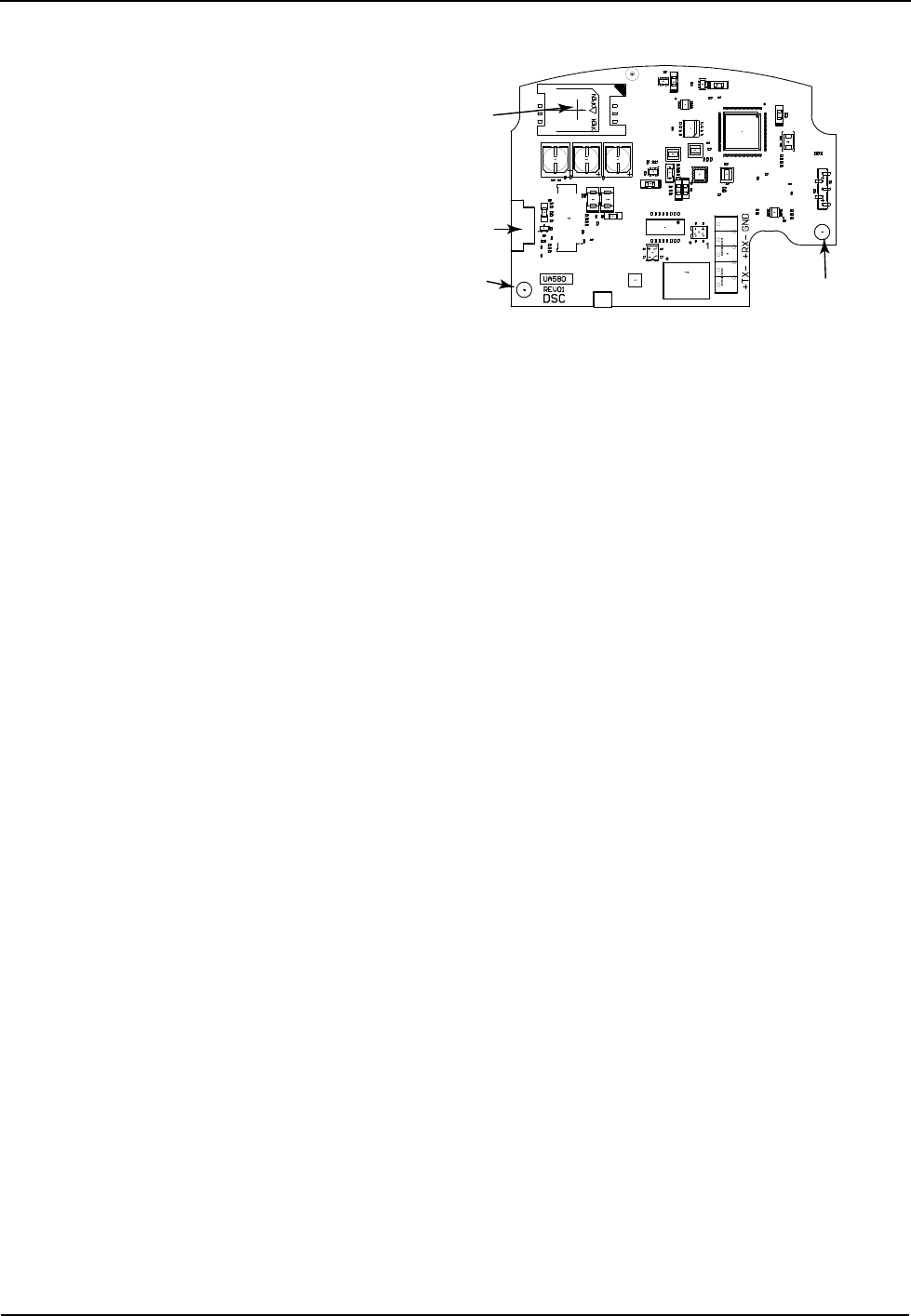
Inserting the SIM Card Alarm Communicator Installlation Manual
8
Mounting
Hole
Mounting
Hole
SIM Card Holder
RJ-45
Connector
(TL255 and
TL2553G only)
INSERTING THE SIM CARD
1. Remove the front cover of the SCW Control Panel to access
SIM holder.
2. Power down the panel and disconnect the backup battery
connections.
3. On the SIM card holder push gently to slide the cover
towards OPEN as indicated by the arrow on SIM holder.
This will unlatch the SIM card holder on the side furthest
from edge of the Communicator.
4. Lift up the SIM card holder from the side that is not hinged.
NOTE: The SIM card can be damaged by bending or scratching
contacts. Use caution when handling the SIM card.
5. Insert or remove the SIM card, noting the orientation of the
notches on the SIM card and the SIM card holder.
6. When inserting a SIM card, insert the card in the proper ori-
entation and gently push the SIM card holder down and slide the holder as indicated by the arrow on SIM holder, to LOCK.
7. Apply AC power to panel, and replace the panel cover.
HARDWARE RESET
The Communicator can be hardware reset by installing a jumper between Pins 4 and 5 on the AUDIO/DEFAULT connector.
ESTABLISHING A COMMUNICATION CHANNEL WITH THE SCW PANEL.
Establishing a communication channel between the Communicator and the SCW is critical to ensuring the desired operation of the two
units. The following steps must be completed during the on-site installation. Program the followingto ensure that the Communicator
and the panel will work together as intended.
NOTE: Panel Sections must be programmed at the panel keypad.
1. Enter
[*][8][Installer Code] [Section Number]
for panel programming. Record any values that are modified from their default, in the
appropriate Programming Worksheets.
NOTE: When programming Toggle Options, the toggle is ON when the number is displayed and OFF when the number is not dis-
played. (e.g., [1---5---], Toggle Options 1 and 5 are ON, all others are OFF).
2. Panel Section [167] Cellular/Ethernet Interface Communications ‘Wait for ACK’: Program value as: 060 (seconds).
3. When the communicator is installed with the SCW panel, 4 telephone number are available to backup one another. You can set up
these 4 telephone numbers to perform in one of two ways: Backup dialling or Alternate dialling.
a. Backup dialling: each of the 4 telephone numbers will make 5 dialling attempts in turn, before an FTC trouble is displayed on the
keypad.
b. Alternate dialling: each telephone number makes 1 dialling attempt before moving on to the next number, cycling through each
of the 4 numbers for a total of 5 times each. If all 4 numbers fail the 5 attempts, an FTC trouble is displayed on the keypad.
4. Panel Sections [301], [302], [303], and [305] can be configured as Primary communication paths.
a. Panel Sections [302], [303], and [305] may also be configured for backup or redundant communications by using Panel Section(s)
[383] or [351] - [376]. Refer to the SCW panel Installation Manual for more information.
b. If a valid telephone number is programmed, communications will use Public Switched Telephone Network (PSTN). Entering a 4
digit hexadecimal value for a telephone number will change the call routing to the Communicator, as determined by the number
programmed:
DCAAF: Internal (All Receivers). Signals will be routed depending on Section [851] [006] programming.
DCBBF: Ethernet Receiver 1 (Primary). (Not available for 3G2055-SM).
DCCCF: Ethernet Receiver 2 (Backup). (Not available for 3G2055-SM).
DCDDF: Cellular Receiver 1 (Primary). (Not available for TL255-SM-NA).
DCEEF: Cellular Receiver 2 (Backup). (Not available for TL255-SM-NA).
NOTE: Add a single ‘F’ as a suffix to the 4 digit hex number to populate the unused remainder of the 32 character field.
5. Panel Section [350]: If any of the phone numbers have been programmed as DCAA, DCBB, DCCC, DCDD, or DCEE, panel Sec-
tion [350] must be set to [04] if SIA format or [03] if Contact ID (CID) format.
6. Panel Section [382]: Toggle Option [5], ‘GS/IP Module Enabled’, must be set to ON.
7. Panel Section [401]: Toggle Option [1] must be set to ON in order to perform panel DLS session through Cellular or Ethernet.
NOTE: Keep a record of the SIM card telephone number, it is required by users for SMS Command and Control functions. Due to the
nature of the SIM card activation process with 3G network carriers, it can take up to 24 hours for SIM card activation to be
complete.
Figure 1: Layout of UA580
DRAFT-02_by_MM
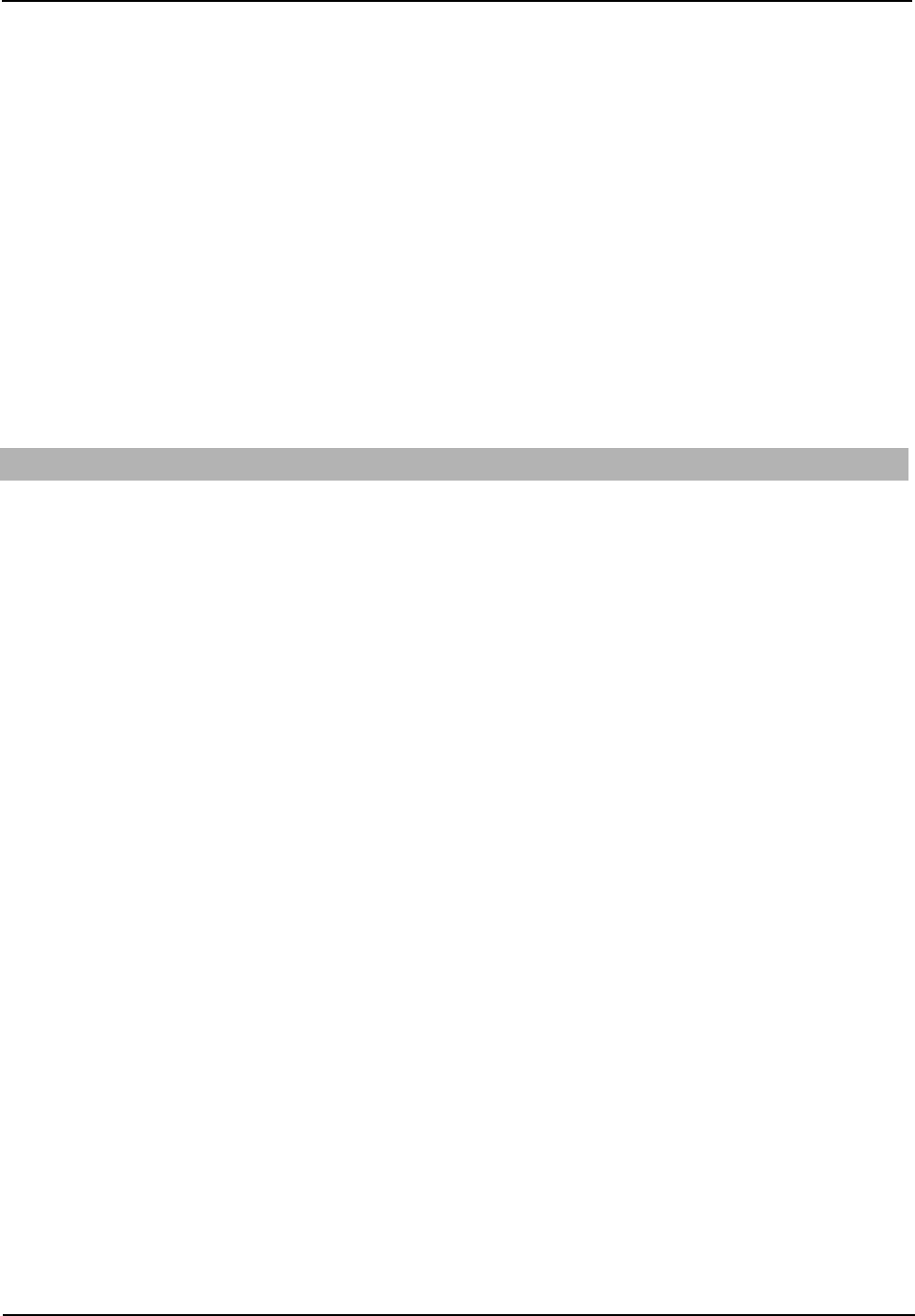
Alarm Communicator Installlation Manual Label Programming for SMS Messages
9
LABEL PROGRAMMING for SMS MESSAGES
Programmable Labels can not be modified in Connect24, use DLS IV for label programming only, if labels need to be modified. Before
initiating remote programming, record your network’s Public IP Address and port for incoming DLS IV connections.
1. Run the DLS IV software on your computer. DLS IV will connect to the unit, using the Public IP address, and make an Ethernet con-
nection. If the Ethernet connection fails, DLS IV will report an error and prompt you to connect using Cellular.
NOTE: If required, download the DLS IV software from DSC: http://www.dsc.com/index.php?n=library#self. If you select the Cel-
lular connection, DLS will request Connect24 to send an outgoing SMS message to the unit.
2. Connect24 will confirm that the account has DLS service and will provide the Public IP address and port number of the DLS server
in an SMS message.Type the SMS message text into your cell phone and send it to the Communicator’s 3G telephone number. Click
OK.
NOTE: The 3G phone number can be read from Communicator Section [851][996].
3. SMS message will establish a connection to your computer’s DLS IV software (to change programming labels only).
4. Create an account for the panel/Communicator, select the Communicator type (e.g., SMS - TL2553G-SM) and enter all relevant
information in SMS section.
NOTE: The 3G telephone number will also be required by the user, to send SMS Interactive messages to their system.
5. Program the account information, then click Global Download and choose SMS as the Connection Type. Click OK.
6. The download path configured in Programming Section [005] Toggle Option[4] determines the Cellular or Ethernet path to be used.
The Programming Sections described in this document can be viewed through the panel Section for Ethernet/Cellular Programming.
Enter: [*][8][installer code] [851][###], Where # # # is the 3 digit Section number referenced in this section. The Programming
Worksheets at the end of this document can be used to record the new values when programming changes have been made from the
default values.
Programming Sections are accessed through Connect24. Installers may review/record programming Options at the panel.
NOTE: Ethernet/Cellular Programming Sections accessed through the panel are for display purposes only. Configuration changes
must be done using Connect24.
SYSTEM OPTIONS
[001] Ethernet IP Address
Default (000.000.000.000); (TL255-SM/TL2553G-SM only)
Enter the IP address of the dual Communicator. Ensure that the IP address is unique to your Communicator on the local network. For-
mat is 4 fields, each field is a 3 digit decimal number. Valid range: 000-255. If an IP address is programmed in this Section, the unit will
operate with Static IP (DHCP disabled). Sections [002] and [003] must also be programmed when using Static IP addresses.
NOTE: Default for this Section is Dynamic Host Configuration Protocol (DHCP) enabled. When enabled, the DHCP Server will set
values for: IP Address [001], Subnet Mask [002], and Gateway [003]. Programming an IP address in this Section will disable
DHCP (Static IP ).
[002] Ethernet IP Subnet Mask
Default (255.255.255.000); (TL255-SM/TL2553G-SM only)
Enter the Ethernet IP Subnet Mask of the dual Communicator. Format is 4 fields, each field is a 3 digit decimal number. Valid range:
000-255.
NOTE: If DHCP is enabled, the DHCP Server will assign the subnet mask for this Section and the programmed value will be ignored.
[003] Ethernet Gateway IP Address
Default (000.000.000.000); (TL255-SM/TL2553G-SM only)
Enter the Ethernet Gateway IP address of the dual Communicator. The gateway IP address is required when a router is used on the local
network to reach the destination IP address specified in Section [001]. Format is 4 fields, each field is a 3 digit decimal number. Valid
range: 000-255.
NOTE: If DHCP is enabled, the DHCP Server will assign the Gateway IP address for this Section and the programmed value will be
ignored.
[004] Receiver Supervision Interval
Default (0087/135);
When receiver supervision is enabled (ON) in Section [005] Toggle Option [3], the unit sends heartbeats to Ethernet Receiver 1 or Cel-
lular Receiver 1 to test the communication path. Use this Section to set the interval time (in seconds) when heartbeats will be sent. Valid
range 000A-FFFF seconds. If the programmed value is less than (000A/10) seconds, supervision is disabled.
ETHERNET/Cellular Programming Options
DRAFT-02_by_MM
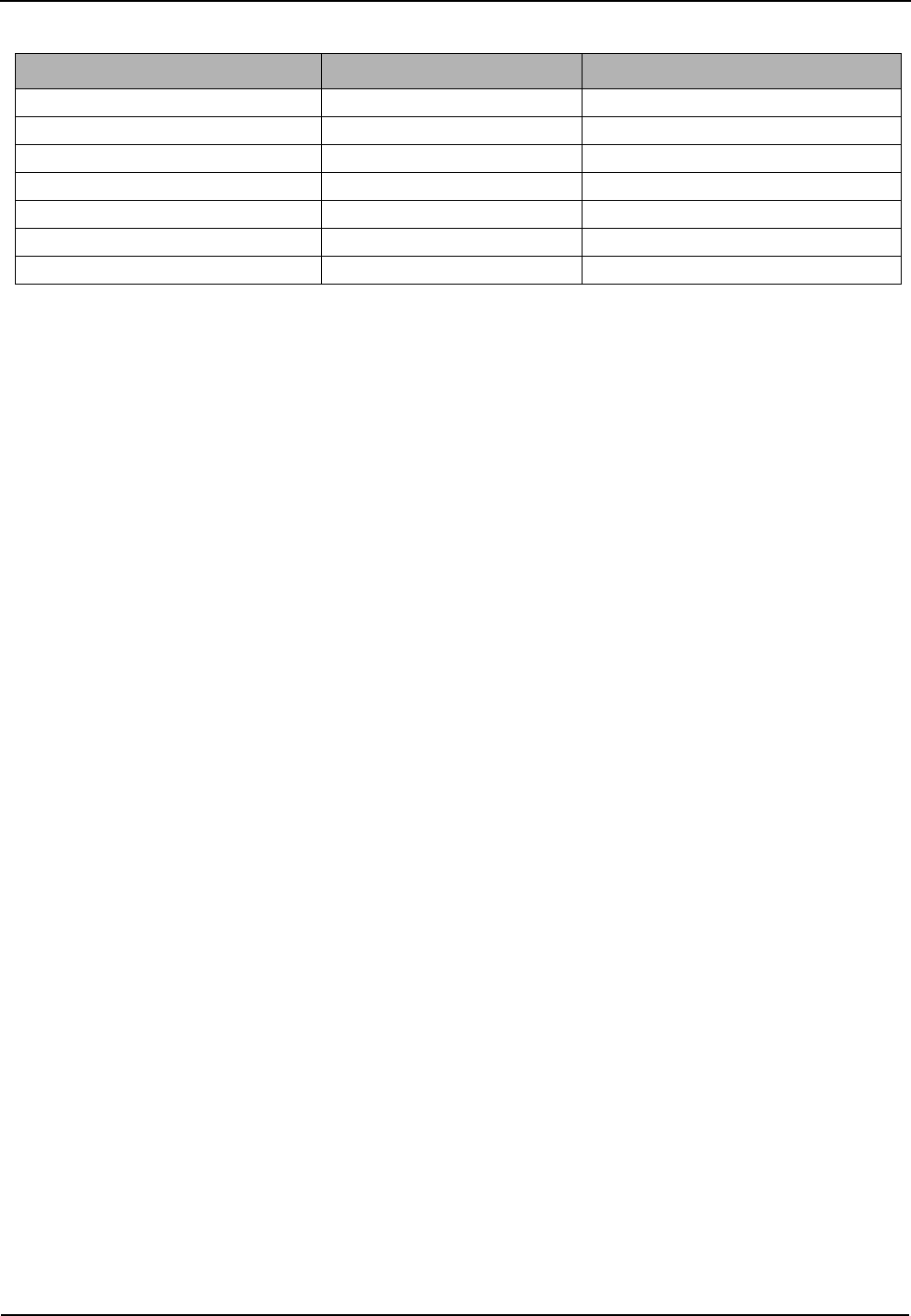
System Options Alarm Communicator Installlation Manual
10
•Receiver Window: This is the supervision timeout that needs to be configured at the central station receiver.
•Recommended Values: This is the recommended heartbeat interval that should be programmed into the Communicator module.
• For ULC passive systems (not using heartbeat supervision), the daily test transmission must be enabled over each available communication
channel Section [125] and [225]. When programming with Connect24, the recommended intervals will be programmed automatically
when the required window is selected.
[005] System Toggle Options
[1] Ethernet Receiver 1 Supervised
Default (OFF)
(TL255-SM-NA/TL2553G-SM only).
ON: Ethernet Receiver 1 will be supervised and heartbeats will be sent to Ethernet Receiver 1 based on the supervision interval
programmed in Section [004].
OFF: Ethernet Receiver 1 will not be supervised. When disabled, heartbeat 1 is sent to the Ethernet receiver once every hour,
regardless of supervision type (heartbeat 1 or 2). The heartbeat is resent every 5 seconds until ACK. If no event or heartbeat ACK
is received after (Receiver Supervision Interval + 75 seconds), Supervisory trouble is indicated.
NOTE: Ethernet Receiver 2 can not be supervised.
[2] Cellular Receiver 1 Supervised
Default (OFF)
(3G2055-SM/TL2553G-SM only)
ON: Cellular Receiver 1 will be supervised and heartbeats will be sent to Cellular Receiver 1 based on the supervision interval
programmed in Section [004]. If ACK to heartbeat is not received, it is retransmitted every 5 seconds. Failure to ACK 2 consec-
utive heartbeats will reset the radio.
OFF: Cellular Receiver 1 will not be supervised. When disabled, heartbeat is not sent to the receiver.
NOTE: Cellular Receiver 2 can not be supervised.
[3] Supervision Type
Default (OFF)
ON: Heartbeat 1 (Commercial Supervision). This supervision type is suitable for applications where swap detection is required
on the supervisory packet.
OFF: Heartbeat 2 (Residential Supervision). This supervision type is suitable for applications where supervision of the commu-
nication path to the receiver is required. (no swap detection).
NOTE: Commercial supervision is more data intensive than residential supervision and should only be used when required to
meet the approval for the installation.
[4] Cellular Primary
Default (OFF - TL255-SM/TL2553G-SM) (ON - 3G2055-SM).
ON: Cellular channel is the primary path. Ethernet channel is the secondary path, if it exists.
OFF: Ethernet channel is the primary path in a dual Communicator. Cellular channel is the secondary path.
NOTE: When the Communicator receives a Short Message Service (SMS) request to connect to Downloading Software (DLS),
it will always use the primary path first to connect to DLS. If the primary path fails, it will use the secondary path.
[5] Redundant Communications
Default (OFF)
(TL2553G-SM only).
ON: Events will be communicated to Ethernet Receiver 1 and Cellular Receiver 1 at the same time. Events will be communi-
cated to Ethernet Receiver 2 and Cellular Receiver 2 at the same time. As long as the event is successfully communicated to 1 of
the 2 paths (Ethernet or Cellular) the Communicator will move on to the next event.
NOTE: Do not configure Ethernet Receiver 1 and Cellular Receiver 1 to communicate using a common receiver configuration
(i.e., identical Receiver IP address and Receiver Remote Port).
OFF: Events will be communicated to the receivers individually.
NOTE: This Toggle should be OFF for applications where guaranteed message delivery to both receivers is required.
[6] Remote Firmware Upgrade
Default (ON).
ON: The Communicator module firmware can be remotely upgraded using the Ethernet/Cellular paths.
Table 5: Receiver Supervision Intervals
Jurisdiction Receiver Window (Timeout) Recommended Supervision Interval
UL Commercial Burglary 200 seconds (0087/135) seconds
UL Residential Fire 30 days Panel Test Transmission
UL Residential Burglary 30 days Panel Test Transmission
ULC Commercial Burglary Active 180 seconds (005A/90) seconds
ULC Commercial Burglary Passive 24 hours Panel Test Transmission
ULC Commercial Fire Active 180 seconds (0073/115) seconds
ULC Commercial Fire Passive 24 hours Panel Test Transmission
DRAFT-02_by_MM
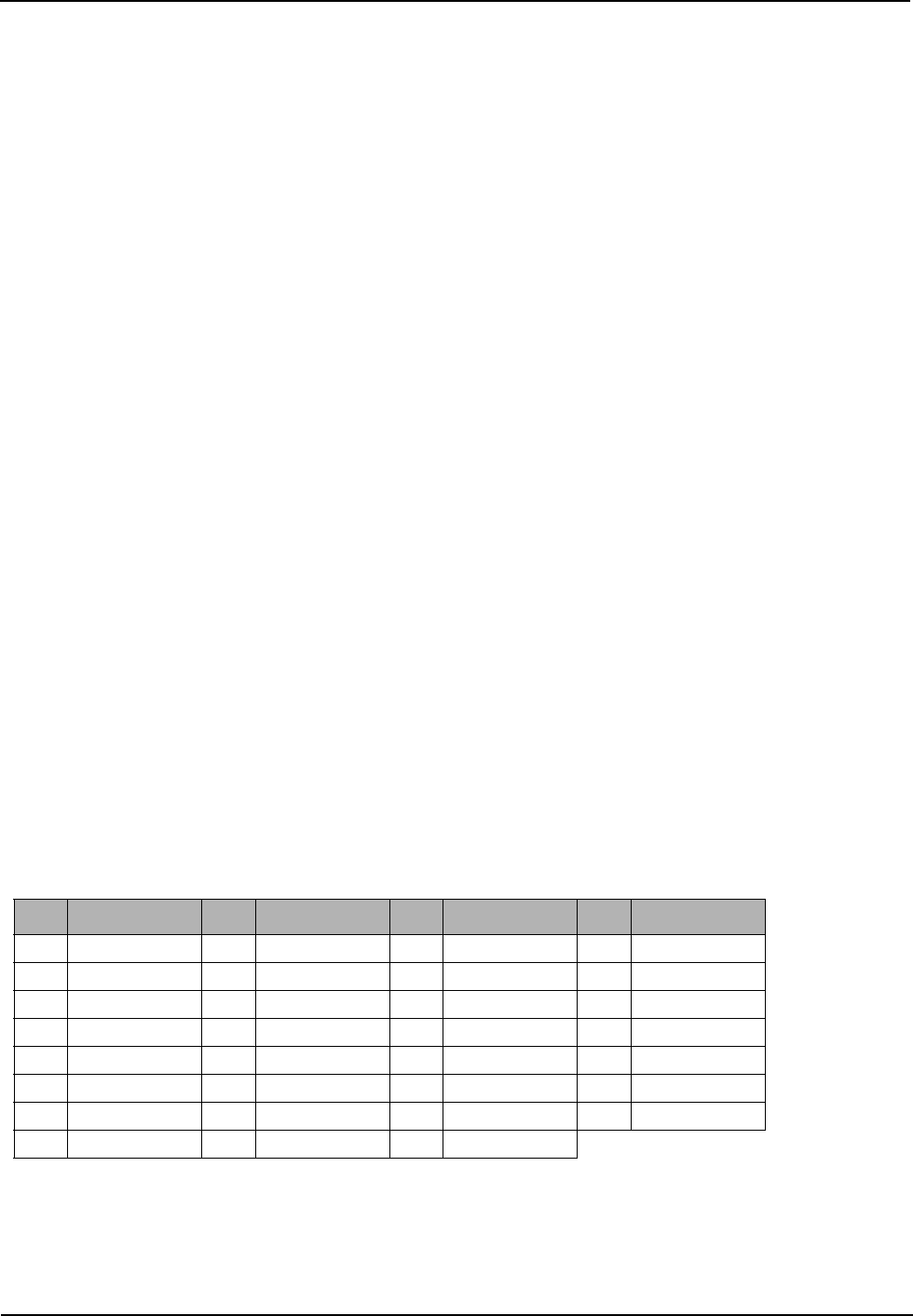
Alarm Communicator Installlation Manual System Options
11
OFF:The Communicator module firmware can not be remotely upgraded. Local firmware upgrade is still possible.
[7] Alternate Test Transmissions Default (OFF).
ON: When the periodic test transmission interval occurs, the test transmission will alternate between being sent to the primary
and secondary receivers with each test transmission interval.
OFF:When the periodic test transmission interval occurs, the test transmission will be sent to the programmed receivers, based
on the settings of the periodic test transmission reporting codes.
[8] Reserved. Default (OFF).
[006] System Toggle Options 2
[1] Ethernet 1 Receiver Enabled. Default (ON) [OFF 3G2055-SM].
ON: Ethernet Receiver 1 is enabled.
OFF: Ethernet Receiver 1 is disabled.
[2] Ethernet 2 Receiver Enabled. Default (ON) [OFF 3G2055-SM].
ON: Ethernet Receiver 2 is enabled.
OFF: Ethernet Receiver 2 is disabled.
[3] Reserved. (OFF).
[4] Cellular 1 Receiver Enabled. Default (ON).
ON: Cellular Receiver 1 is enabled.
OFF: Cellular Receiver 1 is disabled.
[5] Cellular 2 Receiver Enabled. Default (ON).
ON: Cellular Receiver 2 is enabled.
OFF: Cellular Receiver 2 is disabled.
[6] Reserved (OFF).
[7] DLS Over Cellular. Default (ON). [OFF TL255-SM]
NOTE: Program this toggle as OFF if you want to completely disable DLS from using the Cellular path.
ON: DLS is enabled on the Cellular path.
OFF: DLS is disabled on the Cellular path.
NOTE: If Toggle Option [7] is OFF, DLS sessions will occur on the Ethernet path only, regardless of Primary Path set in Section
[005] Toggle Option [4]. If it is ON then the Communicator will connect to the primary path first for DLS and if the ses-
sion fails, the secondary path will be used.
[8] Reserved. Default (ON).
[007] DNS Server IP 1
Default (000.000.000.000);
Programming this Section is not permitted on a UL/ULC listed system.
Enter the IP address for DNS Server 1. Format is 4 fields, each field is a 3 digit decimal. Valid range: 000-255.
NOTE: If no value is programmed and DHCP is used, the DHCP Server will configure the address. If an address is programmed and
DHCP is used, the address that you program will be used instead of the DHCP address.
[008] DNS Server IP 2
Programming this Section is not permitted on a UL/ULC listed system.
Default (000.000.000.000);
Enter the IP address for DNS Server 2. Format is 4 fields, each field is a 3 digit decimal. Valid range: 000-255.
NOTE: If no value is programmed and DHCP is used, the DHCP Server will assign this value. If an address is programmed and DHCP
is used, the address that you program will be used instead of the DHCP address.
[009] Language
Default (01);
NOTE: Immediately after programming this Section, perform a Default Languages in Section [999][11] to have programmable labels
available in the selected language. Programming this Section with an invalid language number will default to English [01].
Connect24 will automatically update all programmable language labels when this Section is changed.
Table 6: Label Languages
OPT Language OPT Language OPT Language OPT Language
00 Reserved 08 Czech 16 Turkish 24 Lithuanian
01 English 09 Finnish 17 Reserved 25 Ukrainian
02 Spanish 10 German 18 Croatian 26 Slovakian
03 Portuguese 11 Swedish 19 Hungarian 27 Serbian
04 French 12 Norwegian 20 Romanian 28 Estonian
05 Italian 13 Danish 21 Russian 29 Slovenian
06 Dutch 14 Hebrew 22 Bulgarian 30-99 Reserved
07 Polish 15 Greek 23 Latvian
DRAFT-02_by_MM
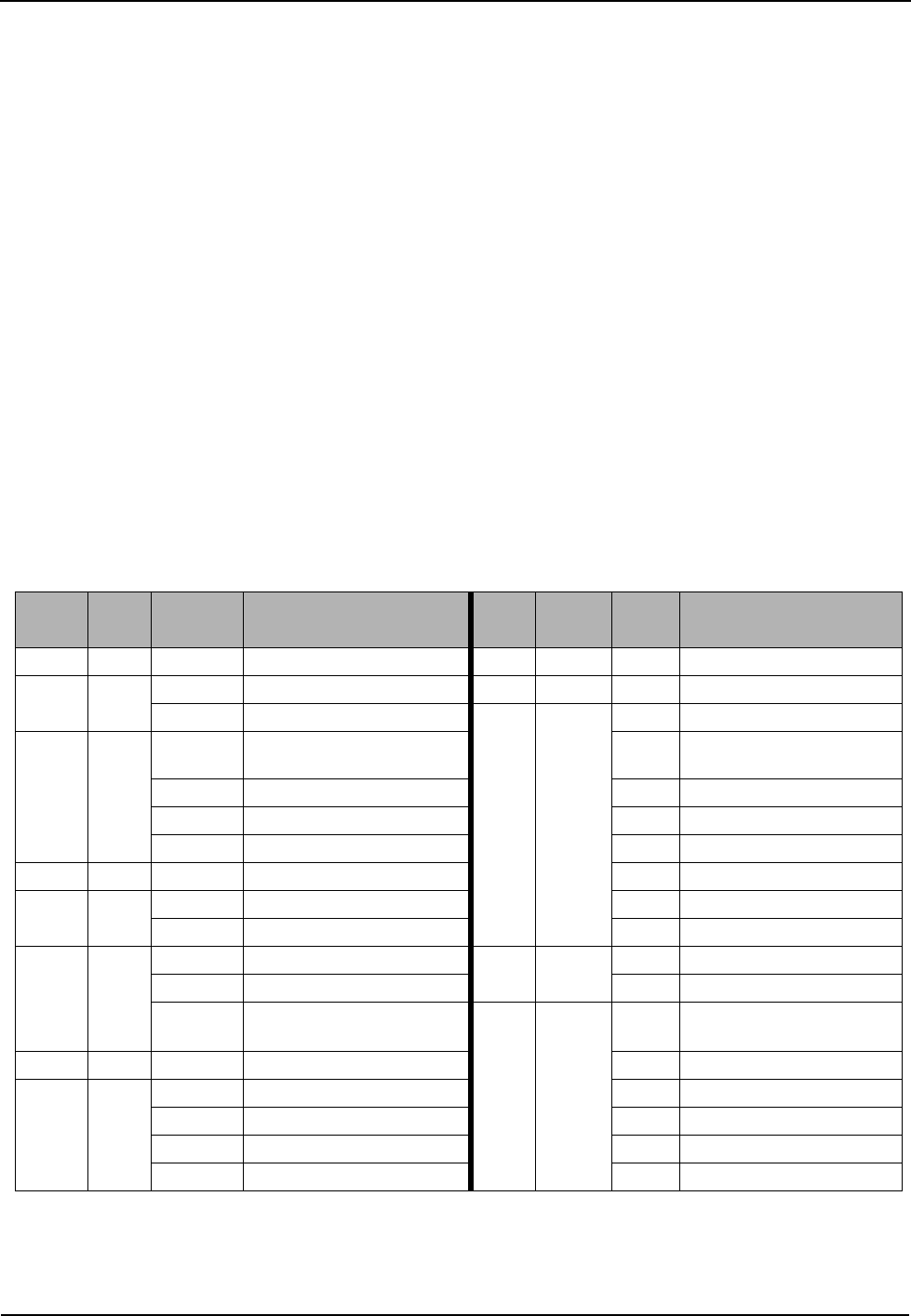
Programming Options Alarm Communicator Installlation Manual
12
[010] System Toggle Options 3
Default (OFF)
[1] Two way Audio over Cellular.
ON: Two way audio over the Cellular Voice channel is enabled.
OFF: Two way audio over the Cellular Voice channel is disabled.
[2]-[8] Reserved. Default (OFF)
PROGRAMMING OPTIONS
[011] Installer Code
Default (CAFE);
Program your installer code for this Communicator module. The installer code will be required when programming the Communicator
module. Valid range: 0000 - FFFF.
[012] DLS Incoming Port
Default (0BF6/3062);
The DLS Incoming Local Port (listening port) is the port DLS IV will use when connecting to the Communicator. If a router or gateway
is used, it must be programmed with a Transmission Control Protocol (TCP) port forward for this port to the Communicator module IP
address. Valid range: 0000-FFFF.
[013] DLS Outgoing Port
Default (0BFA/3066);
The DLS Outgoing Port is used for outgoing session to DLS IV after an SMS request has been sent to the Communicator. Use this Sec-
tion to set the value of the local outgoing port. The value must be changed if the Communicator is located behind a firewall and must be
assigned a particular port number, as determined by your network administrator. In most cases, changing the default value or configur-
ing your firewall with this port is not required. Valid range: 0000-FFFF.
NOTE: If Section [006] Toggle Option [7] is ON. DLS will use the primary path for session. If Section [006] Toggle Option [7] is OFF
DLS will use the Ethernet path, if available.
[020] Time Zone
Default (00)
Use Column 2 (Offset Hours) to find your local Time Zone. Record the two digit HEX value from Column 1 (HEX Value) on the same
row. Program this HEX value for your Time Zone. Valid range is 00 - FF.
Table 7: World Wide Time Zones
HEX
Value Offset
Hours Std
Abbrev Location HEX
Value Offset
Hours Std
Abbrev Location
01 -12 BIT Baker Island Time 47 5.5 IST Indian Standard Time
05 -11 NUT Niue Time 48 5.75 NPT Nepal Time
SST Somoa Standard Time
49 6
XJT Xinjiang Standard Time
09 -10
HAST Hawaii-Aleutian Standard Time EKST East Kazakhstan Standard
Time
THAT Tahiti Time LKT Sri Lanka Time
TKT Tokelau Time VOST Vostok Time
CKT Cook Island Time OMSK Omsk Standard Time
0B -9.5 MIT Marquesas Island Time NOVT Novosibirsk Time
0D -9 AKST Alaska Standard Time BTT Bhutan Time
GIT Gambier Island Time BIOT British Indian Ocean Time
11 -8
PST Pacific Standard Time 4B 6.5 CCT Cococ Islands Time
PST Pitcarirn Standard Time MMT Myanmar Time
CIST Clipperton Island Standard
Time
4D 7
CXT Christmas Island Time
15 -7 MST Mountain Standard Time KOVT Khovd Time
19 -6
CST Central Standard Time KRAT Krasnoyarsk Time
GALT Galapagos Time WIB Waktu Indonesia Bagian Barat
PIT Peter Island Time ICT Indochina Time
EAST Easter Island Standard Time BDT Bangladesh Standard Time
DRAFT-02_by_MM
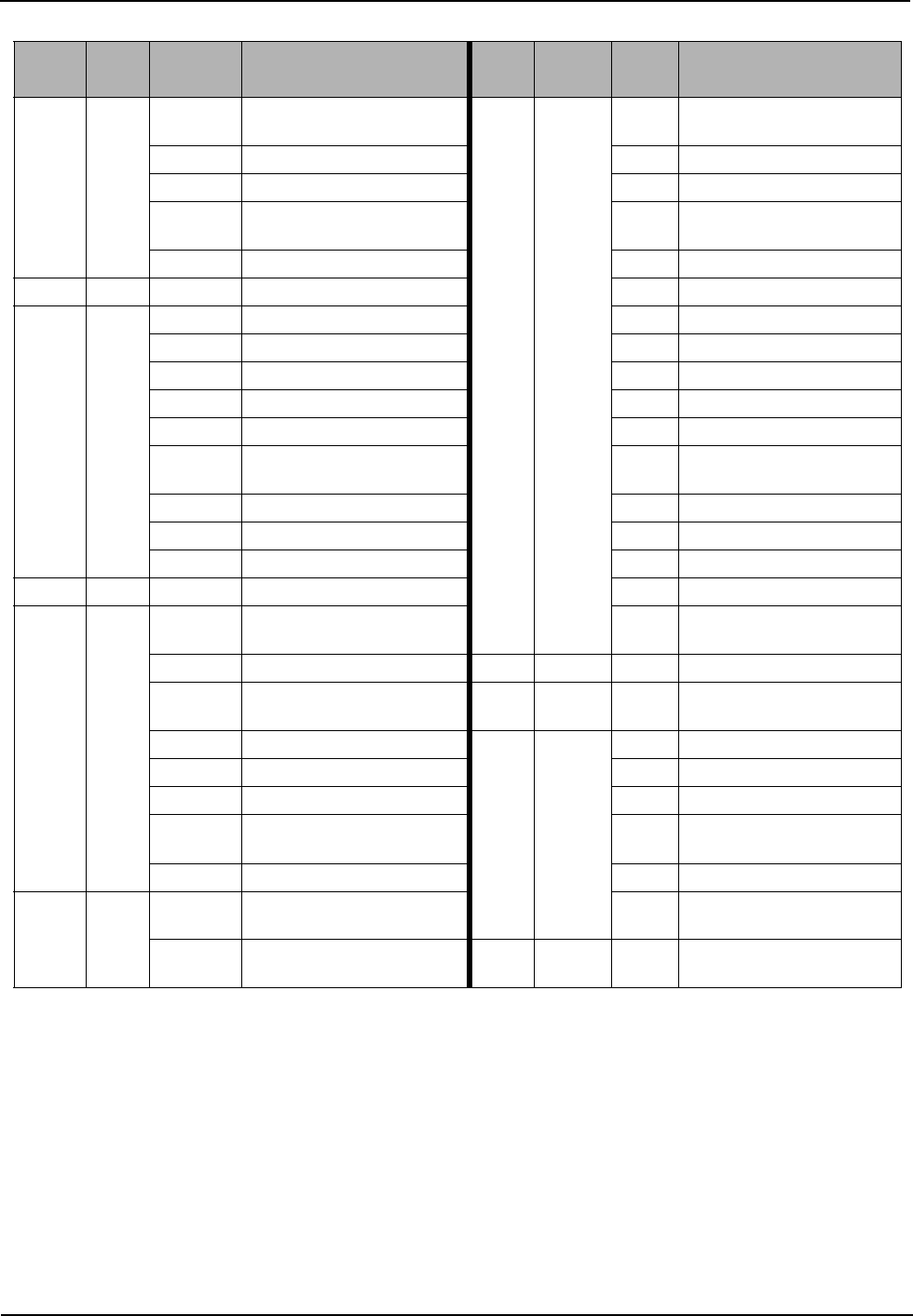
Alarm Communicator Installlation Manual Programming Options
13
1D -5
EST Eastern Standard Time
51 8
AWST Australian Western Standard
Time
COT Colombia Time CST China Standard Time
ECT Ecuador Time HKST Hong Kong Standard Time
PET Peru Time WITA Waktu Indonesia Bagian Ten-
gah
ACT Acre Time TWT Taiwan Time
1F -4.5 VST Venezuela Standard Time SST Scarborough Shoal Time
21 -4
AST Atlantic Standard Time SIT Spratly Island Time
CLST Chile Standard Time SGT Singapore Time
BWST Brazil Western Standard Time PST Philippine Standard Time
SLT San Luis Time PIT Pratas Islands
PYT Paraguay Time PIT Parcel Island Time
JFST Juan Fernandez Island Standard
Time MYT Malaysia Time
GYT Guyana Time MNT Mongolia Time
FKST Falkland Island Standard Time MBT Macclesfield Bank Time
BOT Bolivia Time IRKT Irkutsk Time
23 -3.5 NST Newfoundland Standard Time BDT Brunei Time
25 -3
CGT Central Greenland Time ACIT Ashmore and Cartier Island
Time
ART Argentina Time 52 8.25 APO Apo Island Time
BRT Brazilia Time 54 8.75 ACWS
T
Australian Central Western
Standard Time
UYT Uruguay Standard Time
55 9
YAKT Yakutsk Time
SRT Suriname Time JST Japan Standard Time
ROTT Rothera Time KST Korea Standard Time
PMST St. Pierre & Miquelon Standard
Time WIT Waktu Indonesia Bagian Timur
GFT French Guiana Time TPT East Timor Time
29 -2
GST South Georgia and the South
Sandwich Islands PWT Palau Time
BEST Brazil Eastern Standard Time 57 9.5 ACST Australian Central Standard
Time
Table 7: World Wide Time Zones
HEX
Value Offset
Hours Std
Abbrev Location HEX
Value Offset
Hours Std
Abbrev Location
DRAFT-02_by_MM
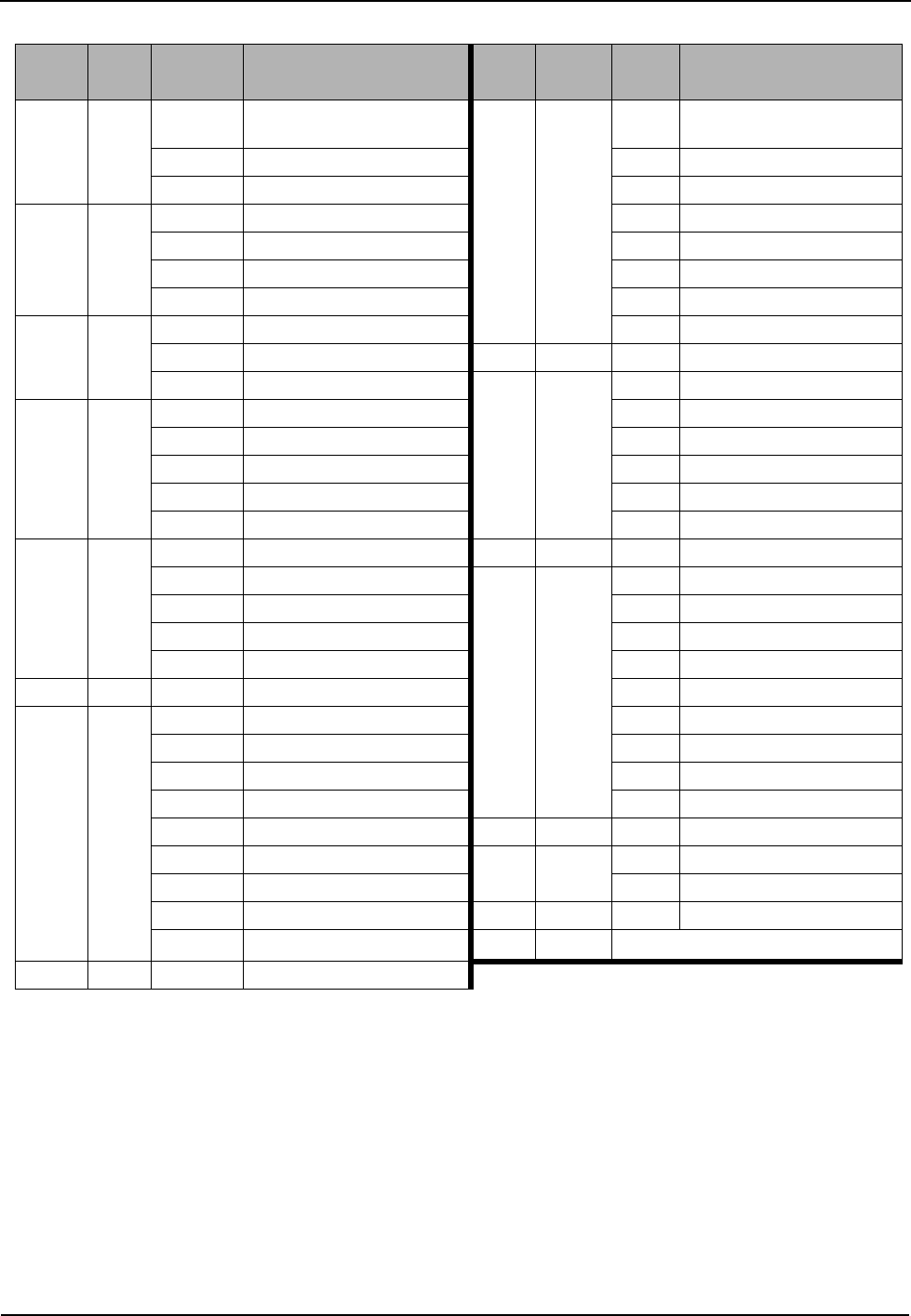
Programming Options Alarm Communicator Installlation Manual
14
2D -1
EGT Eastern Greenland Time
59 10
AEST Australian Eastern Standard
Time
CVT Cape Verde Time GST Guam Standard Time
AZOST Azores Standard Time YAPT Yap Time
31 0
WET Western Europian Time VLAT Vladivostok Time
GMT Greenwich Mean Time (UTC) TRUT Truk Time
SLT Sierra Leone Time PGT Papua New Guinea Time
IST Ireland Standard Time DTAT District de Terre Adelie Time
35 1
CET Central Europian Time ChST Chamorro Standard Time
WAT Western Africa Time 5B 10.5 LHST Lord Howe Standard Time
BST British Summer Time
5D 11
KOST Kosare Standard Time
39 2
EET Eastern Europian Time NCT New Caledonia Time
CAT Central Africa Time VUT Vanuatu Time
SYT Syrian Standard Time SBT Solomon Island Time
SAST South Africa Standard Time PONT Phonpei Standard Time
IST Israel Standard Time MAGT Magadan Island Time
3D 3
MSK Moscow Standard Time 5F 11.5 NFT Norfolk Island Time
EAT Eastern Africa Time
61 12
NZST New Zealand Standard Time
AST Arabic Standard Time FJT Fiji Time
AST Arabia Standard Time WFT Wallis and Futuna Time
AST Al Manamah Standard Time TVT Tuvalu Time
3F 3.5 IRST Iran Standard Time PETT Petropavlovsk Time
41 4
AMST Armenia Standard Time NRT Nauru Time
SCT Seychelles Time MHT Marshall Island Time
GST Gulf Standard Time GILT Gilbert Island Time
SAMT Samara Time ANAT Anadyr Time
RET Reunion Time 64 12.75 CHAST Chatham Island Standard Time
MUT Mauritius Time 65 13 PHOT Phoenix Island Time
ICT Iles Crozet Time TOT Tonga Time
GET Georgia Standard Time 69 14 LINT Line Island Time
AZT Azerbaijan Time 70 - FF N/A Reserved
43 4.5 AFT Afghanistan Time
Table 7: World Wide Time Zones
HEX
Value Offset
Hours Std
Abbrev Location HEX
Value Offset
Hours Std
Abbrev Location
DRAFT-02_by_MM
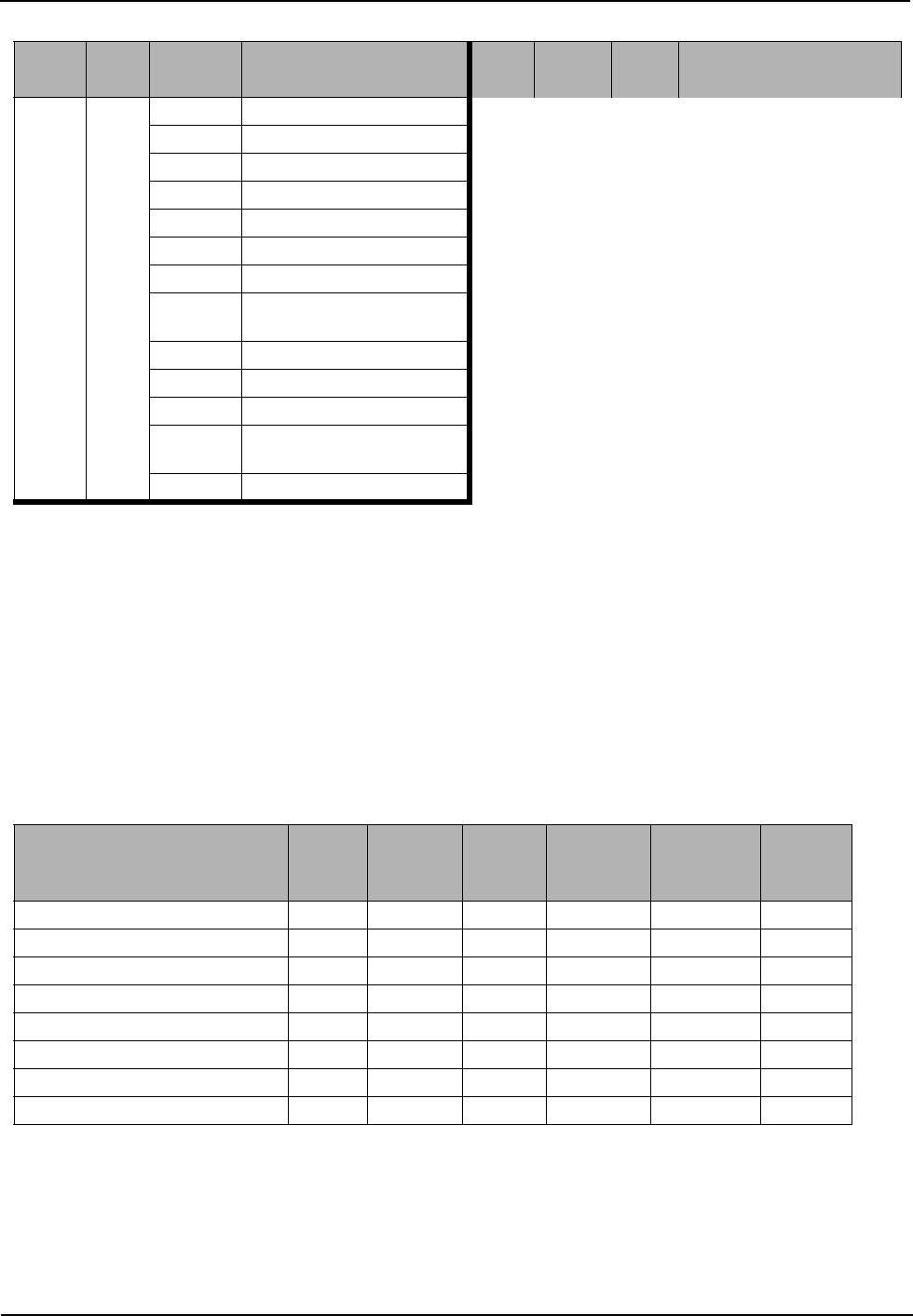
Alarm Communicator Installlation Manual Communications Reporting Codes
15
[021] Account Code
Default (FFFFFF);
The account code is included when transmitting any events generated by the Communicator. (e.g., Panel Absent Trouble). It is recom-
mended that the account code be the same as the control panel account number. Valid range: 000001-FFFFFE. If 4 digit account codes
are needed the 2 lowest digits shall be programmed as FF;( e.g., Account 1234 is programmed as:1234FF). Programming this Section
as all 0 or all F will cause a Module Configuration Trouble (yellow LED=12 flashes).
[022] Communications Format
Default (04);
Program 03 for Contact ID (CID). Program 04 for SIA. Communicator will synchronize with the panel and use the same communica-
tion format as the panel regardless of the value set in this Section.
The module can be configured to send internal events in SIA or CID format. The SIA communication format follows the level 2 speci-
fications of the SIA Digital Communication Standard - October 1997. This format will send the account code along with its data trans-
mission. The transmission will look similar to the following at the receiver: Nri0 ET001
Where: N = New Event; ri0 = Partition/Area identifier; ET = Panel Absent Trouble; 001 = Zone 001.
COMMUNICATIONS REPORTING CODES
[023] Panel Absent Trouble
Default (FF)
Program 00 to disable this event or FF to enable. This event will occur when communications with the panel have been lost for more
than 60 seconds.
[024] Panel Absent Trouble Restore
Default (FF);
Program 00 to disable this event or FF to enable. This event will occur when communications with the control panel have resumed.
45 5
CAST Chinese Atlantic Standard Time
WKST West Kazakhstan Standard Time
PKT Pakistan Time
YEKT Yekaterinburg Time
UZT Uzbekistan Time
TMT Turkmenistan Time
TJT Tajikistan Time
TFT French Southern and Antarctic
Time
MVT Maldives Time
MAWT Mawson Time
KGT Kyrgyzstan Time
HMT Heard and McDonald Island
Time
DAVT Davis Time
Table 8: Event Reporting Codes
Event SIA
Identifier
SIA
Reporting
Code
CID
Qualifier CID Event
Code
CID
Reporting
Code
CID User/
Zone
[023] Panel Absent Trouble ET 001 1 3 55 001
[024] Panel Absent Trouble Restore ER 001 3 3 55 001
[025] Radio Activation Restore RS 001 3 5 52 001
[026] Ethernet1 Test Transmission RP 001 1 6 A3 951
[027] Ethernet2 Test Transmission RP 002 1 6 A3 952
[028] Cellular1 Test Transmission RP 003 1 6 A3 955
[029] Cellular2 Test Transmission RP 004 1 6 A3 956
[030] FTC Restore YK 001 3 3 54 001
Table 7: World Wide Time Zones
HEX
Value Offset
Hours Std
Abbrev Location HEX
Value Offset
Hours Std
Abbrev Location
DRAFT-02_by_MM
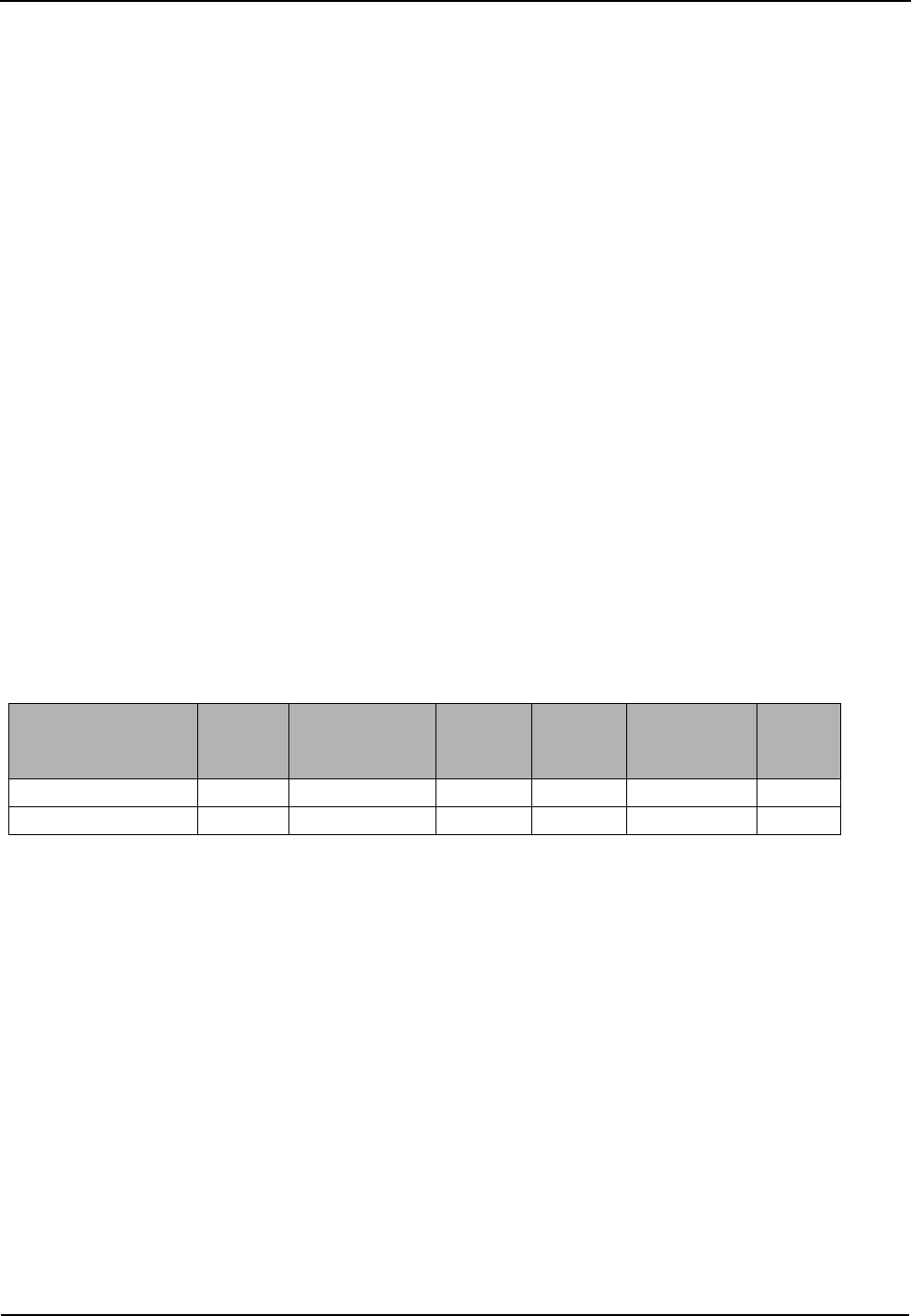
Ethernet Receiver 1 Options Alarm Communicator Installlation Manual
16
[025] Radio Activation Restore
Default (FF);
Program 00 to disable this event or FF to enable. This event will occur after any successful Connect24 programming session.
System Test Options [026 - 029]
Test Transmissions to Primary Receiver, with Backup to Secondary Receiver:
Set Ethernet Section [026] to (FF) and Section [027] to (00). Set Cellular Section [028] to (FF) and Section [029] to (00).
• If the test transmission fails to the primary receiver it will backup to the secondary receiver.
• If the test transmission fails to the secondary receiver an FTC trouble will be generated.
Test Transmission Unique to Primary and Secondary Receivers:
Set Ethernet Section [026] to (FF) and Section [027] to (FF). Set Cellular Section [028] to (FF) and Section [029] to (FF).
• The module will send periodic test transmissions to each receiver independently, with no backups.
• If the test transmission fails to any of the programmed receivers, an FTC trouble will be generated.
Alternate Test Transmission
Alternate Test Transmission can be enabled or disabled in Section [005] Toggle Option [7].
[026] Ethernet 1 Transmission
Default (FF);
Program 00 to disable this event transmission or FF to enable. See System Test Options (above) for details on settings.
[027] Ethernet 2 Transmission
Default (00);
Program 00 to disable this event transmission or FF to enable. See System Test Options (above) for details on settings.
[028] Cellular 1 Transmission
Default (FF);
Program 00 to disable this event transmission or FF to enable. See System Test Options (above) for details on settings.
[029] Cellular 2 Transmission
Default (00);
Program 00 to disable this event transmission or FF to enable. See System Test Options (above) for details on settings.
NOTE: Interval (in minutes) between periodic tests is programmed in Section [125] (Ethernet) and Section [225] (Cellular).
[030] FTC Restore
Default (FF);
Program 00 to disable or FF to enable. This event will occur when an FTC Trouble on the system restores.
[031] Panel Tamper Alarm
Default (FF);
Program 00 to disable this event transmission or FF to enable. This event will occur when a Panel Tamper occurs on the system.Setting
this option to 00 will disable monitoring of the tamper switch. See Table 12 for SIA and CID reporting codes.
[032] Panel Tamper Alarm Restore
Default (FF);
Program 00 to disable this event transmission or FF to enable. This event will occur when a Panel Tamper event on the system restores.
See Table 9 for SIA and CID reporting codes.
ETHERNET RECEIVER 1 OPTIONS
(TL255-SM/TL2553G-SM only)
[101] Ethernet Receiver 1 Account Code
Default (0000000000);
The account code is used by the central station to distinguish between transmitters. This account code is used when transmitting heart-
beat signals to the central station receiver. Signals received from the control panel will use the control panel account number. Valid
range: 0000000001-FFFFFFFFFE. Programming this Section as all 0 or all F will cause a Module Configuration Trouble (yellow
LED=12 flashes).
NOTE: If Ethernet Receiver 1 and Cellular Receiver 1 are programmed as the same receiver (IP and port number are identical), Ether-
net Receiver 1 account code will be used.
[102] Ethernet Receiver 1 DNIS
Default (000000);
The Dialled Number Information Service (DNIS) is used in addition to the Account Code to identify the Communicator module at the
central station. Valid range: 000000 - 099999. Value is entered as a leading 0 followed by the 5 digit DNIS. Format is Binary Coded
Decimal (BCD).
NOTE: Each Ethernet/Cellular receiver must be programmed with a unique DNIS.
Table 9: Panel Tamper Reporting Codes
Event SIA
Identifier SIA
Reporting Code CID
Qualifier CID
Event Code CID
Reporting Code
CID
User/
Zone
Panel Tamper ES 001 1 1 45 001
Panel Tamper Restore EJ 001 3 1 45 001
DRAFT-02_by_MM

Alarm Communicator Installlation Manual Ethernet Receiver 2 Options
17
[103] Ethernet Receiver 1 Address
Default (127.000.000.001);
The default address enables the Communicator to operate in Unattended Mode.
Unattended Mode is used when a receiver is not available and the unit is required to perform DLS sessions.Typically used where the
customer programs the control panel daily due to access control and still wants to receive alarms without buying extra hardware
(receiver) or software.
NOTE: When a valid IP address has been programmed, Ethernet Receiver 1 is enabled and will communicate events over the Ethernet
channel.
Ethernet Receiver 1 and Cellular Receiver 1 may be configured to communicate to the same central station receiver. To configure the
device to operate using this Common Receiver Mode functionality, program Ethernet Receiver 1 and Cellular Receiver 1, IP address
and port number with identical values.
NOTE: When operating in Common Receiver Mode, Ethernet Receiver 1 account code will be used for Ethernet/Cellular.
[104] Ethernet Receiver 1 Remote Port
Default (0BF5/3061);
This Section determines the remote port of Ethernet receiver 1. Valid range: 0000 - FFFF.
[105] Ethernet Receiver 1 Local Port
Default (0BF4/3060);
Use this Section to set the value of the local outgoing port. Set the value of this port when your installation is located behind a firewall
and must be assigned a particular port number as determined by your central station system administrator. Valid range: 0000 - FFFF.
[106] Ethernet Receiver 1 Domain Name
Default ( );
Enter the Domain Name as 32 ASCII characters.
Programming this Section is not permitted on a UL/ULC listed system.
ETHERNET RECEIVER 2 OPTIONS
(TL255-SM/TL2553G-SM only)
[111] Ethernet Receiver 2 Account Code
Default (0000000000);
The account code is used by the central station to distinguish between transmitters. The account code is used when transmitting heart-
beat signals to the central station receiver. Signals received from the control panel will use the control panel account number. Valid
range: 0000000001- FFFFFFFFFE. Programming this Section as all 0 or all F will cause a Module Configuration Trouble (yellow
LED=12 flashes).
NOTE: If both Ethernet Receiver 2 and Cellular Receiver 2 are the same receiver (IP and port number are identical), Ethernet Receiver
2 account will be used for Ethernet and Cellular.
[112] Ethernet Receiver 2 DNIS
Default (000000);
The DNIS is used in addition to the account code to identify the Communicator module at the central station. Valid range: 000000 -
099999. Value is entered as leading 0 followed by 5 digit DNIS. Format is BCD.
NOTE: Each Ethernet/Cellular receiver must be programmed with a unique DNIS.
[113] Ethernet Receiver 2 Address
Default (000.000.000.000);
Programming the Ethernet receiver 2 IP address with 000.000.000.000 will disable Ethernet.
Enter the Ethernet receiver 2 IP address. This address will be provided by your central station system administrator. Format is 4 fields,
each field is a 3 digit decimal. Valid range: 000-255.
NOTE: When a valid IP address has been programmed, Ethernet Receiver 2 is enabled and will communicate events over the Ethernet
channel.
Ethernet Receiver 2 and Cellular Receiver 2 may be configured to communicate to the same central station receiver.
To configure the device to operate using this common receiver mode functionality, program the Ethernet Receiver 2 and Cellular
Receiver 2, IP address and port number with the same values. When operating in common receiver mode the Ethernet Receiver 2
account code will be used for communications over Ethernet and Cellular.
NOTE: Do not program Ethernet Receiver 1 and Ethernet Receiver 2 to communicate to the same receiver.
[114] Ethernet Receiver 2 Remote Port
Default (0BF5/3061);
This Section is used to program the port number used by Ethernet Receiver 2. Set the value of this port when your installation is located
behind a firewall, and must be assigned a particular port number as determined by your central station system administrator. Valid
range: 0000 - FFFF.
NOTE: Do not program Ethernet Receiver 1 and Ethernet Receiver 2 Port with the same value.
[115] Ethernet Receiver 2 Local Port
Default (0BF9/3065);
Use this Section to program the value of the local outgoing port. You can set the value of this port when your installation is located
behind a firewall and must be assigned a particular port number as determined by your network administrator. Valid range: 0000 -
FFFF.
NOTE: Do not program Ethernet Receiver 1 and Ethernet Receiver 2 Port with the same value.
DRAFT-02_by_MM
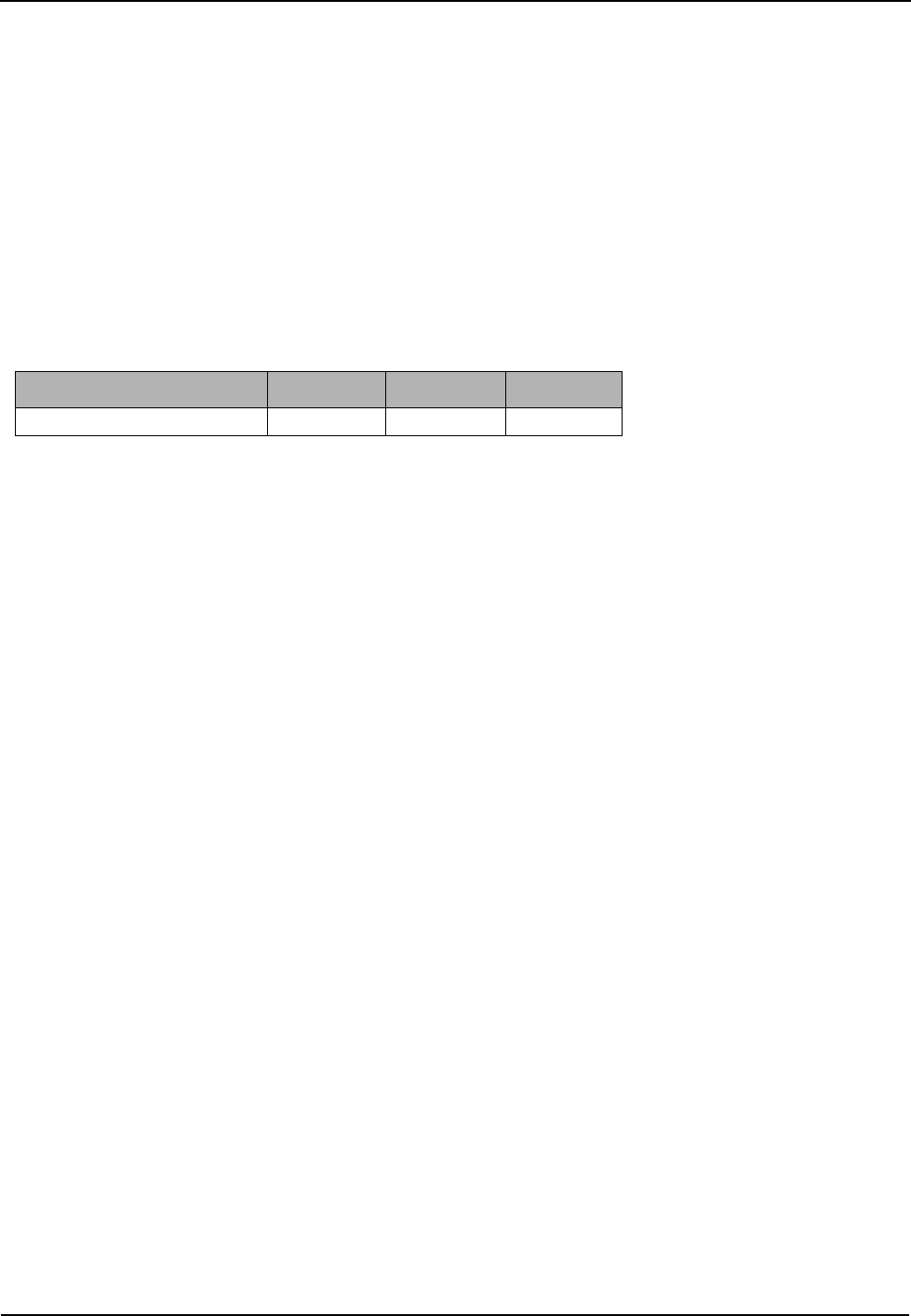
Ethernet Options Alarm Communicator Installlation Manual
18
[116] Ethernet Receiver 2 Domain Name
Default ( );
Programming this Section is not permitted on a UL/ULC listed system.
Enter the Domain Name as 32 Character ASCII.
ETHERNET OPTIONS
(TL255-SM-NA/TL2553G-SM only)
[124] Ethernet Test Transmission Time
Default (9999);
Enter a 4 digit number (0000-2359) using the 24-hour clock format (HHMM) to set the test transmission time of day. Valid range: 00 -
23 hours (HH) and 00 - 59 minutes (MM). Programming a value of (9999) will disable the test transmission time.
NOTE: The internal date and time will automatically be programmed when the unit communicates with the primary receiver.
[125] Ethernet Test Transmission Cycle
Default (000000);
This value represents the interval between test transmissions, in minutes. Valid range: 000000 - 999999 minutes. Once the unit has sent
the initial periodic test transmission, all future test transmissions will be offset by the programmed number of minutes. See Sections
[026-029].
NOTE: Minimum value is 000005 minutes. Programming intervals less than 5 minutes will disable test transmission.
CELLULAR RECEIVER 1 OPTIONS
(3G2055-SM/TL2553G-SM only)
[201] Cellular Receiver 1 Account Code
Default (0000000000);
The account code is used by the central station to distinguish between transmitters. This account code is used when transmitting heart-
beat signals to the central station receiver. Signals received from the control panel will use the control panel account number. Valid
range: 0000000001 - FFFFFFFFFE. Programming this Section as all 0 or all F will cause a Module Configuration Trouble (yellow LED
= 12 flashes).
[202] Cellular Receiver 1 DNIS
Default (000000);
The DNIS is used in addition to the account code to identify the Communicator module at the central station. Valid range: 000000 -
099999. Values are entered as leading 0 followed by five digits. Format is BCD.
NOTE: Each Ethernet/Cellular receiver must be programmed with a unique DNIS.
[203] Cellular Receiver 1 Address
Default (000.000.000.000)
Enter the Cellular Receiver 1 IP address. This information will be provided by your central station system administrator. Each 3 digit
segment of the address must be within a valid range of 000-255.
NOTE: When a valid IP address has been entered, the Cellular is enabled and will communicate events over the Cellular channel.
[204] Cellular Receiver 1 Port
Default (0BF5/3061);
This Section determines the port used by Cellular Receiver 1. Change the default value of this port when your installation is located
behind a firewall, and must be assigned a particular port number as determined by your central station system administrator. Valid
range: 0001 - FFFF.
NOTE: Programming a value of 0000 will disable the receiver.
[205] Cellular Receiver 1 APN
Default ( )
The Access Point Name (APN) determines the Cellular network that the Communicator will connect to. This information is available
from your network carrier. Program this Section as 32 ASCII characters.
NOTE: When a SIM card with a custom APN is used, the unit will not have access to the internet. DLS and remote flash can still be
done if Section [221] is programmed with a valid Public APN.
[206] Cellular Receiver 1 Domain Name
Default ( );
Programming this Section is not permitted on a UL/ULC listed system.
Enter the Domain Name as 32 ASCII characters. This information will be provided by your central station system administrator.
CELLULAR RECEIVER 2 OPTIONS
(3G2055-SM/TL2553G-SM only)
Table 10: Ethernet Test Transmission Interval
Test Transmission Interval Daily Weekly Monthly
Programmed Minutes 001440 010080 043200
DRAFT-02_by_MM
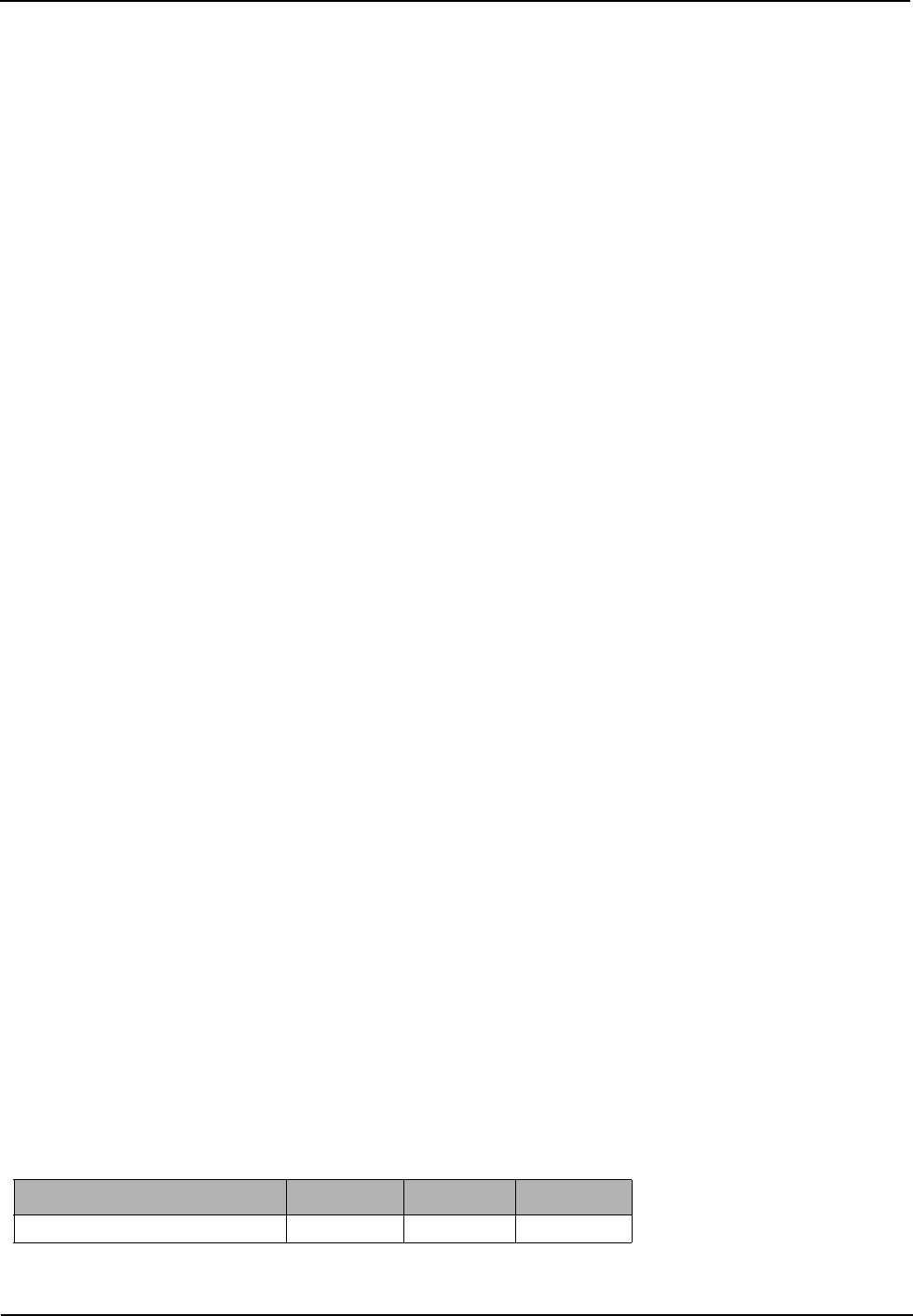
Alarm Communicator Installlation Manual Cellular Options
19
[211] Cellular Receiver 2 Account Code
Default (0000000000);
The account code is used by the central station to distinguish between different transmitters. This account code is used when transmit-
ting signals to the central station receiver. Signals received on the control panel will use the control panel account number. Valid range:
0000000001 - FFFFFFFFFE. Programming this Section as all 0 or all F will cause a Module Configuration Trouble (yellow LED = 12
flashes).
[212] Cellular Receiver 2 DNIS
Default (000000);
The DNIS is used in addition to the Account Code to identify the Communicator module at the central station. Valid range: 000000 -
099999. Values are entered as a 0 followed by the 5 digit DNIS value. Format is BCD.
NOTE: Each Ethernet/Cellular receiver must be programmed with a unique DNIS.
[213] Cellular Receiver 2 Address
Default (000.000.000.000);
Enter the Cellular Receiver 2 IP address. This IP address will be provided by your central station. Format is 4 fields, each field is 3 digit
decimal. Valid range: 000 - 255.
NOTE: When a valid address has been entered, Cellular Receiver 2 is enabled and will communicate events over the Cellular path.
[214] Cellular Receiver 2 Port
Default (0BF5/3061);
This Section defines the port of Cellular Receiver 2. Change the value of this port when your installation is located behind a firewall,
and must be assigned a particular port number, as determined by your central station system administrator. Valid range: 0000 - FFFF.
NOTE: Do not program Cellular Receiver 1 and Cellular Receiver 2 to communicate to the same receiver.
[215] Cellular Receiver 2 APN
Default ( );
The APN determines the Cellular network that the Communicator will connect to. This information is available from your network car-
rier. Program this Section with up to 32 ASCII characters.
NOTE: When a SIM card with a custom APN is used, the unit will not have access to the internet. DLS and remote flash can still be
done if Section [221] is programmed with a valid Public APN.
[216] Cellular Receiver 2 Domain Name
Default ( );
Programming this Section is not permitted on a UL/ULC listed system.
Enter the Cellular Receiver 2 Domain Name with up to 32 ASCII characters.
CELLULAR OPTIONS
(3G2055-SM/TL2553G-SM only)
[221] Cellular Public Access Point Name
Default ( );
When the Communicator is operating on a private APN, use this Section to select a public APN for DLS and Remote Firmware Update.
This information is available from your network carrier. The APN identifies public Cellular network that the Communicator will con-
nect to.
[222] Cellular Login User Name
Default ( );
Some network carriers require you to provide login credentials when connecting to an APN. Program your login User name here. For-
mat is up to 32 ASCII characters.
[223] Cellular Login Password
Default ( );
Some network carriers require you to provide login credentials when connecting to an APN. Program your login password here.
Format is up to 32 ASCII characters.
[224] Cellular Test Transmission Time of Day
Default (9999);
Enter a 4 digit value using the 24-hour clock format (HHMM) to set the test transmission time of day. Valid range: 00-23 for the hours
(HH) and 00-59 for the minutes (MM).
NOTE: To disable the test transmission time of day enter 9999 or FFFF in this Section.
The internal date and time will be automatically programmed by the primary receiver only.
[225] Cellular Test Transmission Cycle
Default (000000);
This value represents the interval in between test transmissions in minutes. Valid range: 000000 - 999999 minutes. Once the unit has
sent the initial periodic test transmission, all future test transmissions will be offset by the programmed number of minutes. See Sec-
tions [026 - 029].
NOTE: Minimum value is 000005 minutes. Programming an interval that is less than 5 minutes will disable test transmission.
Table 11: Cellular Test Transmission Interval
Test Transmission Interval Daily Weekly Monthly
Programmed Minutes 001440 010080 043200
DRAFT-02_by_MM
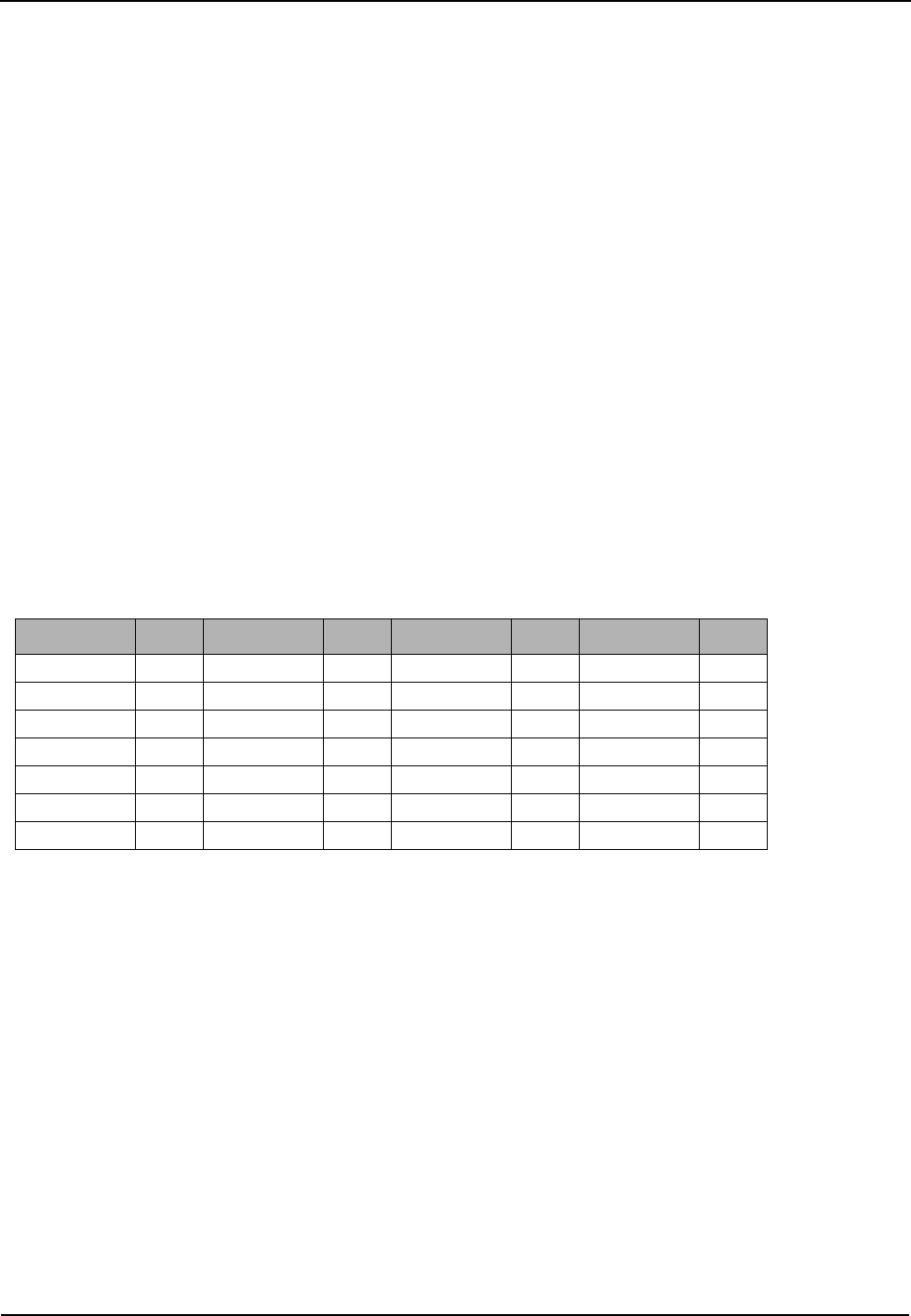
Event Notification and Interactive Options Alarm Communicator Installlation Manual
20
[226] Cellular Trouble Delay
Default (00);
This option is used to program the delay, in minutes, for reporting a Cellular Trouble Delay. Valid entries are 00 - FF.
(e.g., for a 10 minute Cellular Trouble Delay enter 0A). There is no delay if value is programmed as 00.
[227] Voice Call Timeout
Default (00);
This option sets the Voice Call Timeout, in minutes. Programming a value of 00 will disable timeout. Valid range is 00 to FF.
[228] Voice Call Back Time
Default (0A);
This option sets the Voice call back time, in minutes. When the Communicator requests Call Back from the receiver, it will answer
incoming calls during the programmed timeout period. If an incoming call is received after the timeout from requesting call back, the
Communicator will answer the call and immediately hang up. Programming a value of 00 will disable timeout (accept all incoming
calls). Default value is 0A/10 seconds. Valid range is 00 to FF.
[229] Voice Call Back Number
Default (SIM Telephone Number);
This option sets the Voice Call Back Telephone Number for the receiver. This number is used for Two Way calling. Current SIM tele-
phone number can be viewed in Section [996]. Valid entry is 32 character ASCII.
EVENT NOTIFICATION AND INTERACTIVE OPTIONS
[301] Command and Control Toggle Options
[1] SMS Notification Default (ON).
[2] Reserved Default (OFF).
[3] SMS Command and Control Default (ON).
[4] Interactive Default (ON).
[5] SMS Character Format Default (See Table 12 below for default by language selection).
ON: SMS Unicode, maximum message length is 70 characters.
OFF: 7 bit SMS, maximum message length is 160 characters.
[6] Long SMS Message Handling Default (OFF);
ON: If longer than maximum message length, it is split and sent as multiple SMS messages.
OFF: If longer than maximum message length. A single, truncated SMS message is sent.
[7-8]Reserved Default (OFF).
[311] - [318] SMS Phone Number 1 - 8
Default ( );
These Sections may be programmed through DLS IV or the keypad. Up to 8 SMS telephone numbers (4 - 32 digits) can be programmed
in Section [31x] Where x is an SMS telephone number from 1 to 8. Leaving programming blank for a telephone number will disable
that number. The User can program their own mobile telephone numbers at the keypad using
[*] [6] <> “SMS Programming”. The SMS Command and Control feature utilize the SMS messaging service provided by the Cellular
network and is subject to the limitations of SMS messaging. These limitations include delayed messages and lack of guaranteed deliv-
ery.
NOTE: SMS Command and Control (Sections [601] - [618] will only process messages from the mobile telephone numbers pro-
grammed in this Section if SMS Command and Control is enabled [301][ 3] ON. SMS responses are listed in Sections [621] -
[630]. A blank telephone number is disabled.
SMS NOTIFICATION
[321] - [328] SMS Phone Number 1 - 8 Toggle Options
The toggles in this Section determine the type of event message that will be sent to the SMS number programmed in
Sections [311] - [318].
[1] SMS Notification Alarm/Restore Default (ON).
[2] SMS Notification Tamper/Restore Default (ON).
[3] SMS Notification Opening/Closing Default (ON).
[4] SMS Notification System Maintenance Default (ON).
[5] SMS Notification System Test Default (ON).
[6] SMS Notification Internal Events Default (ON).
[7] SMS Notification Enabled Default (ON).
Table 12: Event Notification Language
Language Default Language Default Language Default Language Default
English OFF Czech ON Greek ON Latvian OFF
Spanish OFF Finnish OFF Turkish OFF Lithuanian OFF
Portuguese OFF German OFF Croatian ON Ukrainian ON
French OFF Swedish OFF Hungarian ON Slovakian OFF
Italian OFF Norwegian OFF Romanian OFF Serbian ON
Dutch OFF Danish OFF Russian ON Estonian OFF
Polish ON Hebrew ON Bulgarian ON Slovenian OFF
DRAFT-02_by_MM
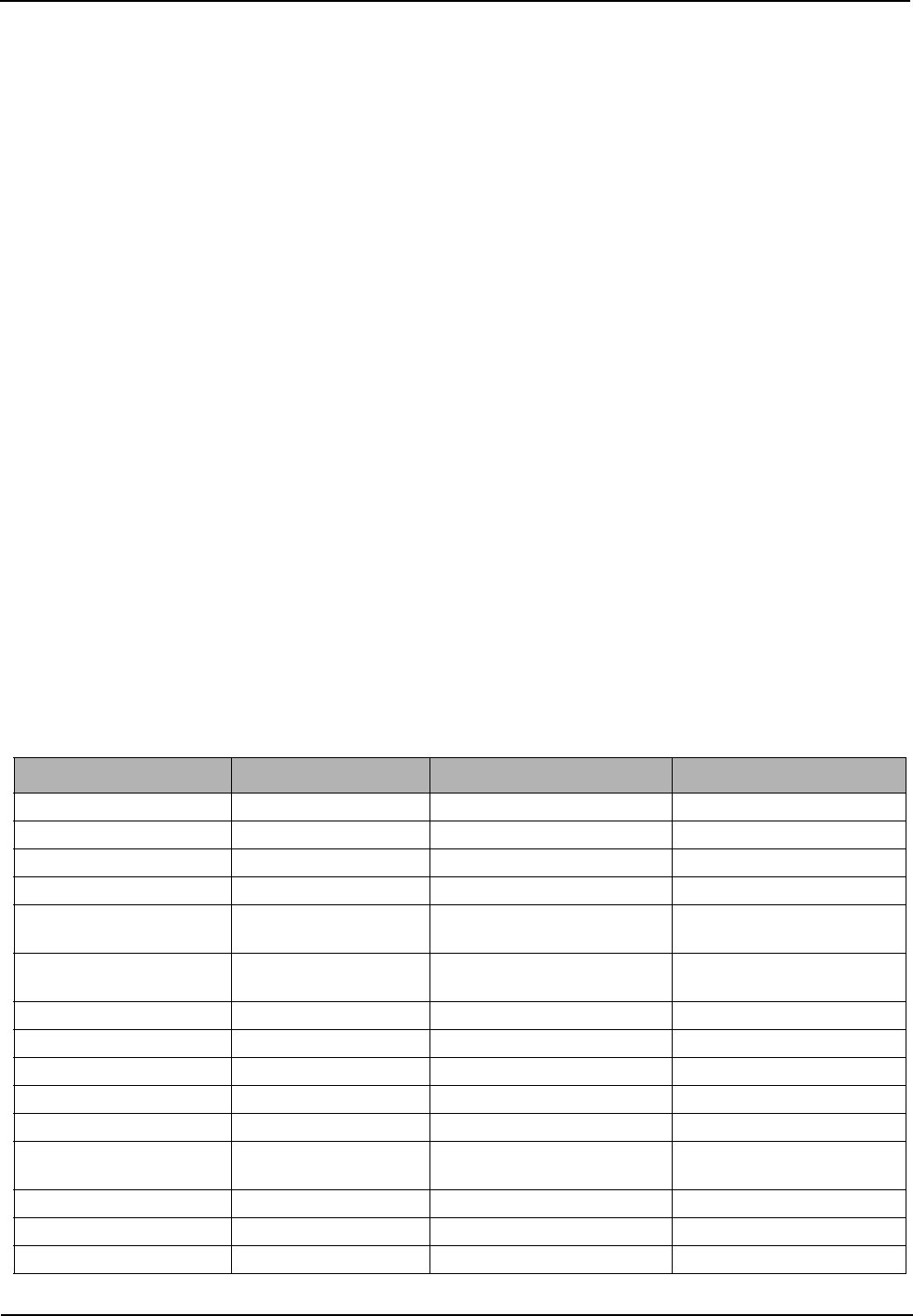
Alarm Communicator Installlation Manual Area Label Programming
21
[8] SMS Command and Control Enabled Default (ON).
NOTE: Each telephone number can be programmed to receive different event notifications. When more than 1 number receives the
event, the system will send the message to phone number 1 first. Only 1 send attempt is made for each programmed number.
Notification, for each programmed telephone number can be enabled/disabled with Toggle Option [7].
AREA LABEL PROGRAMMING
Each Area label is up to 32 ASCII characters, including spaces. The label language is specified in Section [009].
[351] Account Label
Default (Security System);
The Account Label is up to 32 ASCII characters. It is sent at the beginning of every SMS message originating from the Communicator
module.This label is used to identify the system to the recipient of the SMS message.
[352] System Label
Default (System Area);
The System Label is up to 32 ASCII characters. It is used for notification messages that apply to the system.
NOTE: On single partition systems the System Label may be used for all messages.
[353] - [360] Partition 1- 8 Label
Default (Partition x);
Where x is a partition number from 1 - 8. Partition Labels are up to 32 ASCII characters. Labels are used for SMS notification messages
that apply to a specific partition on the system.
USER LABEL PROGRAMMING
[361] - [400] User 1 - 40 Label
Default (User x);
Where x is the User number from 1 - 40. User labels are used to identify a User for SMS notification messages that apply to a specific
user. There are 40 programmable User Labels. Each label is up to 16 ASCII characters. The label language is specified in Section [009].
ZONE LABEL PROGRAMMING
[401] - [464] Zone 1 - 64 Label
Default (Zone n);
Where n is a Zone number from 1 - 64. Zone Labels are up to 32 ASCII characters. Labels are used to identify the Zone for notification
messages that apply to a specific Zone. The label language is specified in Section [009]. Zone labels are numbered 1 - 64 and Zones are
numbered 1-128. No labels are assigned to Zones 65-128.
PANEL EVENT LABEL PROGRAMMING
[501] - [580] Event Labels
Default (see Default Label in Table 13 );
There are 80 programmable Event labels. Each label is pre programmed with the default text shown in Table 13 .
Each label is up to 32 ASCII characters (including spaces). The language is specified in Section [009].
Table 13: Panel Event Labels
Event [Section] Label Default Label Event [Section] Label Default Label
[501] Burglary Alarm [Burglary Alarm] [502] Burglary Alarm Restore [Burglary Alarm Restore]
[503] Fire Alarm [Fire Alarm] [504] Fire Alarm Restore [Fire Alarm Restore]
[505] 24 Hour Alarm [24 Hour Alarm] [506] 24 Hour Alarm Restore [24 Hour Alarm Restore]
[507] Holdup Alarm [Holdup Alarm] [508] Holdup Alarm Restore [Holdup Alarm Restore]
[509] Gas Alarm [Gas / Carbon Monoxide
Alarm] [510] Gas Alarm Restore [Gas / Carbon Monoxide
Restore]
[511] Heat Alarm [High Temperature Alarm] [512] Heat Alarm Restore [High Temperature Alarm
Restore]
[513] Medical Alarm [Medical Alarm] [514] Medical Alarm Restore [Medical Alarm Restore]
[515] Panic Alarm [Panic Alarm] [516] Panic Alarm Restore [Panic Alarm Restore]
[517] Emergency Alarm [Emergency Alarm] [518] Emergency Alarm Restore [Emergency Alarm Restore]
[519] Sprinkler Alarm [Sprinkler Alarm] [520] Sprinkler Alarm Restore [Sprinkler Alarm Restore]
[521] Water Level Alarm [Water Level Alarm] [522] Water Level Alarm Restore [Water Level Alarm Restore]
[523] Freeze Alarm [Low Temperature Alarm] [524] Freeze Alarm Restore [Low Temperature
Alarm Restore]
[525] Fire Supervisory [Fire Supervisory] [526] Fire Supervisory Restore [Fire Supervisory Restore]
[527] Zone Tamper [Zone Tamper] [528] Zone Tamper Restore [Zone Tamper Restore]
[529] Zone Fault [Zone Fault] [530] Zone Fault Restore [Zone Fault Restore]
DRAFT-02_by_MM
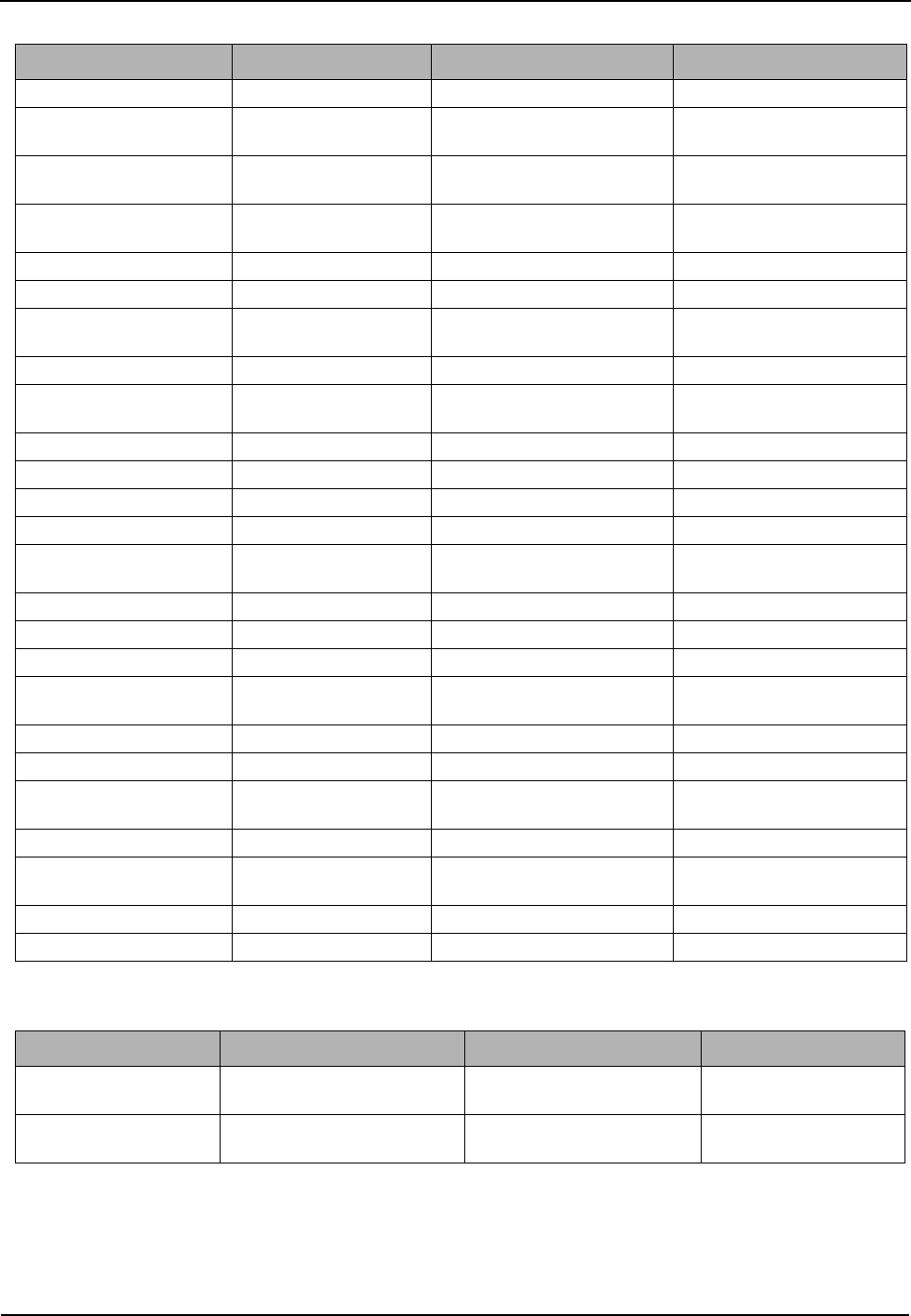
Communicator Event Label Programming Alarm Communicator Installlation Manual
22
COMMUNICATOR EVENT LABEL PROGRAMMING
SMS COMMAND AND CONTROL FUNCTIONS
Users can send SMS text messages from their mobile phone to the Cellular phone number assigned to their system. Commands are only
accepted from telephone numbers that have been programmed in Sections [311]-[318]. The system will reject messages sent from tele-
phone numbers that are not on the programmed list.
When the received SMS text matches a valid Section message, the function is performed on the control panel. Text messages are not
case sensitive and extra spaces are ignored. A User Access Code may be required for some SMS messages.
[531] Fire Trouble [Fire Trouble] [532] Fire Trouble Restore [Fire Trouble Restore]
[533] Module Supervisory [Module Supervisory
Trouble]
[534] Module Supervisory
Restore [Module Supervisory Restore]
[535] General System Tamper [General System Tamper] [536] General System Tamper
Restore
[General System Tamper
Restore]
[537] Wireless Device Low
Battery
[Wireless Device
Low Battery]
[538] Wireless Device Low Bat-
tery Restore
[Wireless Device Battery
Restore]
[539] Cross Zone/Police Code [Burglary Verified] [540] Burglary Not Verified [Burglary Not Verified]
[541] Duress Alarm [Duress Alarm] [542] Opening After Alarm [Disarmed After Alarm]
[543] Recent Closing [Alarm Occurred After
Arming] [544] Alarm Canceled [Alarm Canceled]
[545] Keypad Lockout [Keypad Lockout] [546] Exit Fault [Exit Fault]
[547] Partial Closing [Armed With Zones
Bypassed] [548] Zone Bypass [Zone Bypassed]
[549] Zone Unbypass [Zone Unbypassed] [550] Auto Arm Cancel [Automatic Arming Cancelled]
[551] Closing [Armed By] [552] Opening Label [Disarmed By]
[553] Special Closing [Armed] [554] Special Opening [Disarmed]
[555] Late to Open [Late to Open] [556] Delinquency [Delinquency]
[557] General System Trouble [General System Trouble] [558] General System Trouble
Restore
[General System Trouble
Restore]
[559] AC Line Trouble [AC Power Failure] [560] AC Line Trouble Restore [AC Power Restore]
[561] Battery Trouble [Battery Trouble] [562] Battery Trouble Restore [Battery Restore]
[563] Bell Circuit Trouble [Bell Circuit Trouble] [564] Bell Circuit Trouble Restore [Bell Circuit Restore]
[565] Auxiliary Power Trou-
ble [Auxiliary Power Trouble] [566] Auxiliary Power
Trouble Restore [Auxiliary Power Restore]
[567] Ground Fault [Ground Fault Trouble] [568] Ground Fault Restore [Ground Fault Restore]
[569] TLM Failure [Telephone Line Failure] [570] TLM Failure Restore [Telephone Line Restore]
[571] FTC Trouble [Fail To Communicate
Trouble] [572] FTC Restore [Fail To Communicate Restore]
[573] Event Buffer 75% Full [Event Buffer Near Full] [574] DLS Lead In [Remote Programming Begin]
[575] DLS Lead Out [Remote Programming
End] [576] Installer Lead In [Local Programming Begin]
[577] Installer Lead Out [Local Programming End] [578] Walk Test Lead In [Walk Test Begin]
[579] Walk Test Lead Out [Walk Test End] [580] System Test [System Test Message]
Table 14: Communicator Event Label
Event Section Label Default Label Event Section Label Default Label
[591] Panel Absent Trouble [Panel Communications Trouble] [592] Panel Absent
Trouble Restore
[Panel Communications
Restored]
[593] Module
Reprogramming
[Communicator Programming
Updated] [594] Firmware Update [Communicator Firmware
Updated]
Table 13: Panel Event Labels
Event [Section] Label Default Label Event [Section] Label Default Label
DRAFT-02_by_MM

Alarm Communicator Installlation Manual SMS Command and Control Functions
23
The User can send just the partition number or the complete label.(e.g., “Away arm Partition 2 1234” is treated the same as “away arm
2 1234 ”).
The SMS Message format is in 3 parts: Command, Partition Label (or only the partition number), and Access Code.
• If an Access Code is included in the message, it is sent to the control panel for validation, along with the requested function.
• If the panel is configured to require an Access Code and the code is not sent (or invalid) the panel will fail the function (unsuccess-
ful).
• If the panel fails the function, an SMS response message is sent to the user. The SMS response will echo the command sent, followed
by the label “unsuccessful”. (e.g., “night arm partition 2 1234 unsuccessful”).
• The partition label or partition number may be excluded from the SMS request in a single partition system (e.g., disarm 9123).
NOTE: The Cellular phone number can be viewed in Section [996] or by User entering *6 [<] [>] “Cellular Phone No.” at the keypad.
An Access Code is required for all SMS commands, except Help.
[601] Stay Arm
Default (Stay Arm);
Send this command to the system to stay arm. It may be followed by a Partition Label or partition number and Access Code.
[602] Away Arm
Default (Away Arm);
Send this command to the system to away arm. It may be followed by a Partition Label or partition number and Access Code.
[603] Night Arm
Default (Night Arm);
Send this command to the system to night arm. It may be followed by a Partition Label or partition number and Access Code.
[604] Disarm
Default (Disarm);
Send this command to the system to disarm. It may be followed by a Partition Label or partition number and Access Code.
[605] - [608] Activate Command Output 1 - 4
Default (Activate Command Output n);
Where n is a number from 1 - 4. Send this command to the system to activate a command output. It may be followed by a Partition
Label or partition number and Access Code.
[609] - [612] Deactivate Command Output 1 - 4
Default (Deactivate Command Output n);
Where n is a number from 1 - 4. Send this command to the system to deactivate a command output . This command may be followed by
a Partition Label or partition number and optional Access Code.
[613] Bypass
Default (Bypass);
Send this command to the system to bypass a Zone. This command should be followed by a Zone label or Zone number and Access
Code.
[614] Unbypass
Default (Unbypass);
Send this command to the system to unbypass a Zone. This command should be followed by the Zone label or Zone number and Access
Code.
[615] Status Request
Default (Status Request);
Send this command to request the status of the system. It may be followed by a partition label or partition number and Access Code. If
partition label is omitted, status of all enabled partitions will be sent. If there is a trouble on the system, the system label is sent, fol-
lowed by the trouble label, then the partition status.
NOTE: Status Request response may require more than 1 SMS message, depending on status of the system. There is a 10 second delay
between transmission of SMS messages.
[616] Alarm Memory Request
Default (Alarm Memory Request);
Send this command to the system to request the alarm memory from the system. This command may be followed by a Partition Label
or partition number, and Access Code. If partition label is omitted, alarm memory of all partitions will be sent. Alarm memory
responses will include Partition label and Zone label. Up to 8 partitions may be contained in 1 message.
NOTE: Alarm Memory Request response may require more than 1 SMS message, depending on alarm memory of the unit. There is a
10 second delay between transmission of SMS messages.
[617] Help
Default (Help);
When help is sent, the SMS response is a listing of all Interactive commands that can be sent to the module. Access Code is not
required.
[619] Keypad Message
Default (Keypad Message);
The response format is: [Account Label] [Date and Time] [SMS Function] [Response] [Message Text]. Fields are space delim-
ited.When Keypad Message is sent, the SMS response is the message displayed on the keypad. If the message is too long to display on
the keypad, only the portion displayed is sent in the response.
DRAFT-02_by_MM
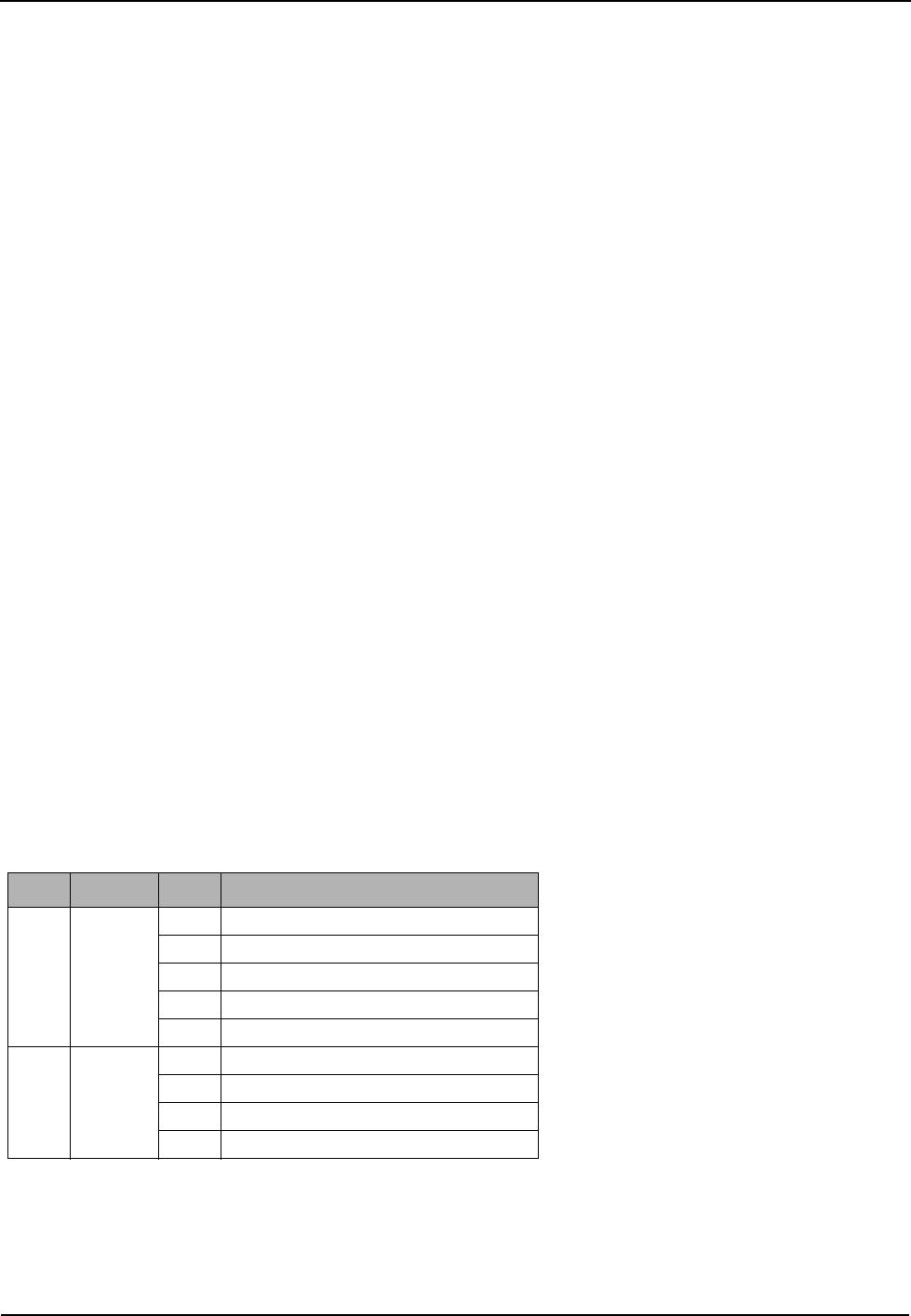
SMS Command and Control Response Alarm Communicator Installlation Manual
24
SMS COMMAND AND CONTROL RESPONSE
NOTE: SMS Command and Control Response messages are up to 32 ASCII characters (Maximum 160 characters per SMS message).
The message language is specified in Section [009]. SMS responses are sent to the phone that initiated the command.
[621] Function Successful
Default (Successful);
When an SMS Command and Control function is successfully performed by the panel, the successful label is included in the response
sent to the user, following the command requested. (e.g., if “stay armed” command is completed by the panel, SMS response is: “stay
armed successful”).
[622] Function Unsuccessful
Default (Unsuccessful);
When an SMS Command and Control function is not successfully performed by the panel, the command sent to the unit will be
included in the response sent to the user, followed by this label. (e.g., if “stay armed” command is not completed, SMS response is:
“stay armed unsuccessful”).
[623] Invalid Command
Default (Invalid Command);
This label will be included in the response message if the command was not accepted as a valid SMS command.
[624] System Stay Armed
Default (Stay Armed);
This label will be included in the response to a status request command if a partition is stay armed.
[625] System Away Armed
Default (Away Armed);
This label will be included in the response to a status request command if a partition is away armed.
[626] System Night Armed
Default (Night Armed);
This label will be included in the response to a status request command if a partition is night armed.
[627] System Disarmed Ready
Default (Disarmed Ready);
This label will be included in the response to a status request command if a partition is disarmed and is ready to arm.
[628] System Disarmed Not Ready
Default (Disarmed Not Ready);
This label will be included in the response to a status request command if a partition is disarmed and is not ready to arm.
[629] System is in Alarm
Default (is in Alarm);
This label will be included in the response to a status request command if a partition is in alarm.
[630] Trouble Label
Default (Service is Required);
This label will be included in the response to the Alarm Memory command if there are no alarms in memory.
[631] No Alarms in Memory
Default (No Alarm Memory);
This label will be included in the response to an Alarm Memory Request if there are no alarms on the system.
[634] Error Code
Default (Error Code);
When an SMS initiated function fails, the module will send an error code to the telephone number that was source of the
SMS request. Message format is:[Account Label] [Date and Time] [Error Code] [Error Type]. Fields are “space” delimited. .
DIAGNOSTIC TESTING
[901] Diagnostic Test Transmission
[1] Ethernet 1 (OFF).
[2] Ethernet 2 (OFF).
[3] Cellular 1 (OFF).
[4] Cellular 2 (OFF).
Table 15: Error Code Format
Class Definition Error Definition
01 DLS
01 Bad SMS format
02 Session failed due to local network issues
03 Unable to connect to remote server
04 Bad DLS access code
05 DLS lockout active
02 TFTP
01 Bad SMS format
02 Session failed due to local network issues
03 Unable to connect to remote server
04 File not found on TFTP server
DRAFT-02_by_MM

Alarm Communicator Installlation Manual System Information (Read Only)
25
[5],[6],[7],[8] Reserved(OFF).
This Section may be used by the installer to force the Communicator to send an immediate test transmission to specific receivers, to
verify that the communications paths are available. Diagnostic Test Transmission failure will indicate as FTC trouble (Yellow LED = 9
flashes). If an FTC error occurs when testing all receivers, select only one receiver and repeat test to isolate the receiver that is not com-
municating.
SYSTEM INFORMATION (READ ONLY)
NOTE: Sections [988] - [998] are provided for information (Read Only). Values can not be modified using these Sections.
[987] Language Version
This Section will display the current Language version of the Communicator. Currently this value is: 01.00.01.TT.
[988] DNS 1 IP Address
This Section will display the IP address of DNS Server 1. This is useful when the unit is configured for DHCP and you need to see the
IP address was assigned to the device by the DHCP Server. This value is programmed in Section [007] or assigned by DHCP.
[989] DNS 2 IP Address
This Section will display the IP address of DNS Server 2. This is useful when the unit is configured for DHCP and you need to see the
IP address that was assigned to the device by the DHCP Server. This value is programmed in Section [008] or assigned by DHCP.
[990] Boot Loader Version
This Section will display the current Boot Loader version of the Communicator. Currently this value is: 01.20.01.TT.
[991] Firmware Version
This Section will display the current firmware version of the device. Currently this value is 01.20.01.TT.
[992] Ethernet IP Address
This Section will display the IP address of the Ethernet connection.This value is programmed in Section [001] or assigned by DHCP.
[993] Ethernet Gateway Address
This Section will display the IP address of the Ethernet Gateway.This value is programmed in Section [003] or assigned by DHCP.
[994] Cellular IP Address
This Section will display the current dynamic IP address assigned by DHCP to the Cellular connection.
NOTE: Cellular uses DHCP (Dynamic IP) only. The Cellular IP address is always provided by the Cellular network (i.e., not program-
mable).
[995] SIM Number
This Section will display the Subscriber Identity Module (SIM) number of the SIM card installed in the Communicator. Format is:
Major Industry Identifier (2 digits) Mobile Country Code (2 or 3 digits); Mobile Network Code (2 - 3 digits); Unique Number (10 - 12
digits); and Checksum (1 digit). Valid SIM numbers range is: 18 - 21 numbers. This number is printed on SIM and the outside of the
Communicator carton.
NOTE: The Checksum digit is omitted on 19 digit SIM Card numbers.
[996] Cellular Telephone Number
NOTE: This Section will display the Cellular telephone number of the SIM.This telephone number is required by the Installer for DLS
and remote firmware (flash) update. User can access this telephone number using [*] [6] [<] [>] “Cellular Phone No.” to dis-
play the phone number used for SMS Command and Control functions.
[997] IMEI Number
This Section will display the unique 15 digit International Mobile Equipment Identity (IMEI) of the radio. Format is: Reporting Body
Identifier (2 digits), Allocation Number (4 digits); Final Assembly Code (2 digits); Serial Number (6 digits); and a check digit.
[998] MAC Address
This Section will display the unique12 digit, hexadecimal number assigned as the Media Access Control (MAC) address of the device.
SYSTEM RESET DEFAULTS
[999] Software Default
Default (99)
The Software default allows the installer to refresh the unit after changes and also return the Communicator to the default state.
00: Default Module. All programming Sections in module back to factory settings. This will erase all existing programming of the
unit.
11: Default Labels. All labels used for SMS Command and Control are reset to the default language programmed in Section [009].
55: Reset. The Communicator is reset. This option is equivalent to power cycling the Communicator.
66: Reactivate Module. The Communicator is reactivated. Upon reactivation, the first command received by the Communicator must
be an INIT command.
NOTE: The Communicator is not reactivated by performing a Power Cycle.
DRAFT-02_by_MM

System Reset Defaults Alarm Communicator Installlation Manual
26
DRAFT-02_by_MM
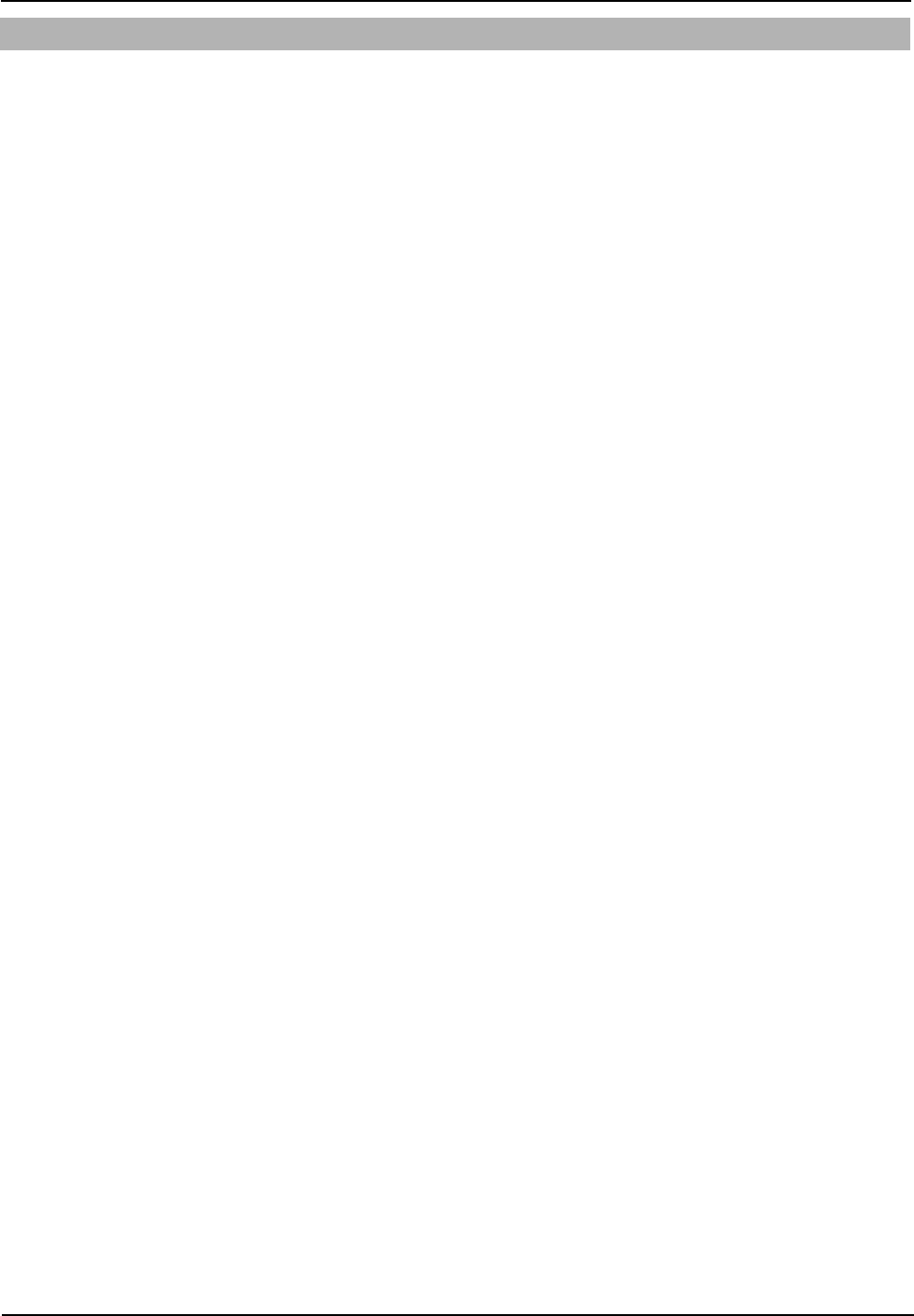
Alarm Communicator Installlation Manual System Options
27
SYSTEM OPTIONS
[001] Ethernet IP Address
Default (000.000.000.000); (TL255-SM/TL2553G-SM only)
|____|____|____||____|____|____||____|____|____|____|____|____
[002] Ethernet IP Subnet Mask
Default (255.255.255.000); (TL255-SM/TL2553G-SM only)
|____|____|____||____|____|____||____|____|____|____|____|____
[003] Ethernet Gateway IP Address
Default (000.000.000.000); (TL255-SM/TL2553G-SM only)
|____|____|____||____|____|____||____|____|____|____|____|____
[004] Receiver Supervision Interval
Default (0087/135); Valid range: 0000 - FFFF.
|____|____|____|____|
[005] System Toggle Options
|____| [1] Ethernet Receiver 1 Supervised Default (OFF).
|____| [2] Cellular Receiver 1 Supervised Default (OFF).
|____| [3] Supervision Type Default (OFF).
|____| [4] Primary Communications Path.
Default [OFF] TL260GS; [ON]GS2060.
|____| [5] Redundant Communications Default (OFF).
|____| [6] Remote Firmware Upgrade Default (ON).
|____| [7] Alternate Test Transmission Default (OFF).
[006] System Toggle Options 2
|____| [1] Ethernet Receiver 1 Enabled Default (ON).
|____| [2] Ethernet Receiver 2 Enabled Default (ON).
|____| [4] Cellular Receiver 1 Enabled Default (ON).
|____| [5] Cellular Receiver 2 Enabled Default (ON).
|____| [7] DLS Over Cellular Default (ON).
[007] DNS Server IP 1
Programming not permitted on UL/ULC listed system.
Default (000.000.000.000); (TL255-SM/TL2553G-SM only)
|____|____|____||____|____|____||____|____|____|____|____|____|
[008] DNS Server IP 2
Programming not permitted on UL/ULC listed system.
Default (000.000.000.000); (TL255-SM/TL2553G-SM only)
|____|____|____||____|____|____||____|____|____|____|____|____|
[009] Language
Default (01);
Program label language 01 -29. Valid range: See Table 12
|____|____|
[010] System Toggle Options 3
|____| [1] 2 Way Audio over Cellular. Default (OFF).|
PROGRAMMING OPTIONS
[011] Installer Code
Default (CAFE); Valid range: 0000 - FFFF.
|____|____|____|____|
[012] DLS Incoming Port
Default (0BF6/3062); Valid range: 0000 - FFFF.
|____|____|____|____|
[013] DLS Outgoing Port
Default (0BFA/3066); Valid range: 0000 - FFFF.
|____|____|____|____|
[020] Time Zone
Default (00) Valid range: 00 - FF.
|____|____|
[021] Account Code
Default (FFFFFF);
Valid range: 000001 - FFFFFE.
|____|____|____|____|____|____|
[022] Communications Format
Default (04); Program 03 (CID), 04 (SIA).
|____|____|
[023] Panel Absent Trouble
Default (FF); Program 00 disable or FF enable.
|____|____|
[024] Panel Absent Trouble Restore
Default (FF); Program 00 disable or FF enable.
|____|____|
[025] Radio Activation Restore
Default (FF); Program 00 disable or FF enable.
|____|____|
SYSTEM TEST OPTIONS [026 - 029]
[026] Ethernet 1 Transmission
Default (FF); Program 00 disable or FF enable.
|____|____|
[027] Ethernet 2 Transmission
Default (00); Program 00 disable or FF enable.
|____|____|
[028] Cellular 1 Transmission
Default (FF); Program 00 disable or FF enable.
|____|____|
[029] Cellular 2 Transmission
Default (00); Program 00 disable or FF enable.
|____|____|
[030] FTC Restore
Default (FF); Program 00 disable or FF enable.
|____|____|
[031] Panel Tamper Alarm
Default (FF); Program 00 disable or FF enable.
|____|____|
[032] Panel Tamper Alarm Restore
Default (FF); Program 00 disable or FF enable.
|____|____|
ETHERNET/Cellular Programming Worksheets
DRAFT-02_by_MM

Ethernet Receiver 1 Options Alarm Communicator Installlation Manual
28
ETHERNET RECEIVER 1 OPTIONS
[101] Ethernet Receiver 1 Account Code
Default (0000000000);
Valid range: 0000000001 - FFFFFFFFFE.
|____|____|____|____|____|____|____|____|____|____|
[102] Ethernet Receiver 1 DNIS
Default (000000); Valid range: 000000 - FFFFFF.
|____|____|____|____|____|____|
[103] Ethernet Receiver 1 Address
Default (127.000.000.001);
|____|____|____||____|____|____||____|____|____|____|____|____|
[104] Ethernet Receiver 1 Remote Port
Default (0BF5/3061); Valid range: 0000 - FFFF.
|____|____|____|____|
[105] Ethernet Receiver 1 Local Port
Default (0BF4/3060); Valid range: 0000 - FFFF.
|____|____|____|____|
[106] Ethernet Receiver 1 Domain Name
Default ( ); 32 ASCII characters.
Programming not permitted on UL/ULC listed system.
___________________________________________
ETHERNET RECEIVER 2 OPTIONS
[111] Ethernet Receiver 2 Account Code
Default (0000000000);
Valid range: 0000000001 - FFFFFFFFFE.
|____|____|____|____|____|____|____|____|____|____|
[112] Ethernet Receiver 2 DNIS
Default (000000);
Valid range: 000000 - 0FFFFF.
|____|____|____|____|____|____|
[113] Ethernet Receiver 2 Address
Default (000.000.000.000);
|____|____|____||____|____|____||____|____|____|____|____|____|
[114] Ethernet Receiver 2 Remote Port
Default (0BF5/3061); Valid range: 0000 - FFFF.
|____|____|____|____|
[115] Ethernet Receiver 2 Local Port
Default (0BF9/3065);
Valid range: 0000 -FFFF.
|____|____|____|____|
[116] Ethernet Receiver 2 Domain Name
Default ( );
Programming not permitted on UL/ULC listed system.
___________________________________________
ETHERNET OPTIONS
[124] Ethernet Test Transmission Time
Default (9999);
Valid: 00-23(HH) ; 00-59(MM).
|____|____|____|____|
[125] Ethernet Test Transmission Cycle
Default (000000);
Valid range: 000000 - 999999 minutes.
|____|____|____|____|____|____|
CELLULAR RECEIVER 1 OPTIONS
[201] Cellular Receiver 1 Account Code
Default (0000000000);
Valid range: 0000000001 - FFFFFFFFFE.
|____|____|____|____|____|____|____|____|____|____|
[202] Cellular Receiver 1 DNIS
Default (000000);
Valid range: 000000 - 0FFFFF.
|____|____|____|____|____|____|
[203] Cellular Receiver 1 Address
Default (000.000.000.000).
Valid range: 000-255.
|____|____|____||____|____|____||____|____|____|____|____|____|
[204] Cellular Receiver 1 Port
Default (0BF5/3061);
Valid range: 0000 - FFFF.
|____|____|____|____|
[205] Cellular Receiver 1 APN Default ( );
32 ASCII characters.
___________________________________________
[206] Cellular Receiver 1 Domain Name Default ( );
Programming not permitted on UL/ULC listed system.
32 Character ASCII characters.
___________________________________________
CELLULAR RECEIVER 2 OPTIONS
[211] Cellular Receiver 2 Account Code
Default (0000000000);
Valid range: 000000000
1
- FFFFFFFFF
E
.
|____|____|____|____|____|____|____|____|____|____|
[212] Cellular Receiver 2 DNIS
Default (000000);
Valid range: 000000 - 0FFFFF.
|____|____|____|____|____|____|
[213] Cellular Receiver 2 Address
Default (000.000.000.000);
Valid segment range: 000-255
|____|____|____||____|____|____||____|____|____|____|____|____|
[214] Cellular Receiver 2 Port
Default (0BF5/3061);
Valid range: 0000 - FFFF.
|____|____|____|____|
DRAFT-02_by_MM

Alarm Communicator Installlation Manual Cellular Options
29
[215] Cellular Receiver 2 APN
Default ( );
32 ASCII characters.
___________________________________________
[216] Cellular Receiver 2 Domain Name
Default ( );
Programming not permitted on UL/ULC listed system.
32 ASCII characters.
___________________________________________
CELLULAR OPTIONS
[221] Cellular Public Access Point Name
Default ( ); 32 ASCII characters
___________________________________________
[222] Cellular Login User Name
Default ( ); 32 ASCII characters.
___________________________________________
[223] Cellular Login Password
Default ( ); 32 ASCII characters.
___________________________________________
[224] Cellular Test Transmission Time of Day
Default (9999);
Valid range: 00 - 23 hrs(HH) 00 - 59 min (MM).
|____|____|____|____|
[225] Cellular Test Transmission Cycle
Default (000000);
Valid range: 000000 - 999999 minutes.
|____|____|____|____|____|____|
[226] Cellular Trouble Delay
Default (00);
Program 00 disable or FF enable.
|____|____|
[227] Voice Call Timeout
Default (00);
Program 00 disable or FF enable.
|____|____|
[228] Voice Call Back Time
Default (0A);
Program 00 disable or FF enable.
|____|____|
[229] Voice Call Back Number
Default (SIM Telephone Number);
32 character ASCII.
___________________________________________
EVENT NOTIFICATION AND INTERACTIVE OPTIONS
GS2060/TL260GS only
[301] Command and Control Toggle Options
|____| [3] SMS Command and Control Default (OFF).
|____| [3] Interactive Default (ON).
|____| [5] SMS Character Format Default (OFF).
|____| [6] Long SMS Message Handling Default (OFF).
[311] SMS Telephone Number 1
Default ( );
4 - 32 digit telephone number. Blank is disabled.
___________________________________________
[312] SMS Telephone Number 2
Default ( );
4 - 32 digit telephone number. Blank is disabled.
___________________________________________
[313] SMS Telephone Number 3
Default ( );
4 - 32 digit telephone number. Blank is disabled.
___________________________________________
[314] SMS Telephone Number 4
Default ( );
4 - 32 digit telephone number. Blank is disabled.
___________________________________________
[315] SMS Telephone Number 5
Default ( );
4 - 32 digit telephone number. Blank is disabled.
___________________________________________
[316] SMS Telephone Number 6
Default ( );
4 - 32 digit telephone number. Blank is disabled.
___________________________________________
[317] SMS Telephone Number 7
Default ( );
4 - 32 digit telephone number. Blank is disabled.
___________________________________________
[318] SMS Telephone Number 8
Default ( );
4 - 32 digit telephone number. Blank is disabled.
___________________________________________
AREA LABEL PROGRAMMING
GS2060/TL260GS only
[321] SMS Telephone Number 1 Toggle Options
|____| [1] SMS Notification Alarm/Restore Default (ON).
|____| [2] SMS Notification Tamper/Restore Default (ON).
|____| [3] SMS Notification Opening/Closing Default (ON).
|____| [4] SMS Notification System Maintenance Default (ON).
|____| [5] SMS Notification System Test Default (ON)
|____| [6] SMSNotification Communicator Events Default(ON).
|____| [7] SMS Notification Enabled Default (ON).
|____| [8] SMS Command and Control Enabled Default (ON).
[322] SMS Telephone Number 2 Toggle Options
|____| [1] SMS Notification Alarm/Restore Default (ON).
|____| [2] SMS Notification Tamper/Restore Default (ON).
|____| [3] SMS Notification Opening/Closing Default (ON).
|____| [4] SMS Notification System Maintenance Default (ON).
|____| [5] SMS Notification System Test Default (ON)
|____| [6] SMSNotification Communicator Events Default(ON).
|____| [7] SMS Notification Enabled Default (ON).
|____| [8] SMS Command and Control Enabled Default (ON).
[323] SMS Telephone Number 3 Toggle Options
|____| [1] SMS Notification Alarm/Restore Default (ON).
DRAFT-02_by_MM

Area Label Programming Alarm Communicator Installlation Manual
30
|____| [2] SMS Notification Tamper/Restore Default (ON).
|____| [3] SMS Notification Opening/Closing Default (ON).
|____| [4] SMS Notification System Maintenance Default (ON).
|____| [5] SMS Notification System Test Default (ON)
|____| [6] SMSNotification Communicator Events Default(ON).
|____| [7] SMS Notification Enabled Default (ON).
|____| [8] SMS Command and Control Enabled Default (ON).
[324] SMS Telephone Number 4 Toggle Options
|____| [1] SMS Notification Alarm/Restore Default (ON).
|____| [2] SMS Notification Tamper/Restore Default (ON).
|____| [3] SMS Notification Opening/Closing Default (ON).
|____| [4] SMS Notification System Maintenance Default (ON).
|____| [5] SMS Notification System Test Default (ON)
|____| [6] SMSNotification Communicator Events Default(ON).
|____| [7] SMS Notification Enabled Default (ON).
|____| [8] SMS Command and Control Enabled Default (ON).
[325] SMS Telephone Number 5 Toggle Options
|____| [1] SMS Notification Alarm/Restore Default (ON).
|____| [2] SMS Notification Tamper/Restore Default (ON).
|____| [3] SMS Notification Opening/Closing Default (ON).
|____| [4] SMS Notification System Maintenance Default (ON).
|____| [5] SMS Notification System Test Default (ON)
|____| [6] SMSNotification Communicator Events Default(ON).
|____| [7] SMS Notification Enabled Default (ON).
|____| [8] SMS Command and Control Enabled Default (ON).
[326] SMS Telephone Number 6 Toggle Options
|____| [1] SMS Notification Alarm/Restore Default (ON).
|____| [2] SMS Notification Tamper/Restore Default (ON).
|____| [3] SMS Notification Opening/Closing Default (ON).
|____| [4] SMS Notification System Maintenance Default (ON).
|____| [5] SMS Notification System Test Default (ON)
|____| [6] SMSNotification Communicator Events Default(ON).
|____| [7] SMS Notification Enabled Default (ON).
|____| [8] SMS Command and Control Enabled Default (ON).
[327] SMS Telephone Number 7 Toggle Options
|____| [1] SMS Notification Alarm/Restore Default (ON).
|____| [2] SMS Notification Tamper/Restore Default (ON).
|____| [3] SMS Notification Opening/Closing Default (ON).
|____| [4] SMS Notification System Maintenance Default (ON).
|____| [5] SMS Notification System Test Default (ON)
|____| [6] SMSNotification Communicator Events Default(ON).
|____| [7] SMS Notification Enabled Default (ON).
|____| [8] SMS Command and Control Enabled Default (ON).
[328] SMS Telephone Number 8 Toggle Options
|____| [1] SMS Notification Alarm/Restore Default (ON).
|____| [2] SMS Notification Tamper/Restore Default (ON).
|____| [3] SMS Notification Opening/Closing Default (ON).
|____| [4] SMS Notification System Maintenance Default (ON).
|____| [5] SMS Notification System Test Default (ON)
|____| [6] SMSNotification Communicator Events Default(ON).
|____| [7] SMS Notification Enabled Default (ON).
|____| [8] SMS Command and Control Enabled Default (ON).
AREA LABEL PROGRAMMING
[351] Account Label
Default (Security System);
___________________________________________
[352] System Label
Default (System Area);.
___________________________________________
[353] Partition 1 Label
Default [Partition 1].
___________________________________________
[354] Partition 2 Label
Default [Partition 2].
___________________________________________
[355] Partition 3 Label
Default [Partition 3].
___________________________________________
[356] Partition 4 Label
Default [Partition 4].
___________________________________________
[357] Partition 5 Label
Default [Partition 5].
___________________________________________
[358] Partition 6 Label
Default [Partition 6].
___________________________________________
[359] Partition 7 Label
Default [Partition 7].
___________________________________________
[360] Partition 8 Label
Default [Partition 8].
___________________________________________
USER LABEL PROGRAMMING
Programming is 16 character ASCII text
[361] User 1 Label
Default [User 1].
___________________________________________
[362] User 2 Label
Default [User 2].
___________________________________________
[363] User 3 Label
Default [User 3].
___________________________________________
[364] User 4 Label
Default [User 4].
___________________________________________
[365] User 5 Label
Default [User 5].
___________________________________________
[366] User 6 Label
Default [User 6].
___________________________________________
DRAFT-02_by_MM

Alarm Communicator Installlation Manual Zone Label Programming
31
[367] User 7 Label
Default [User 7].
___________________________________________
[368] User 8 Label
Default [User 8].
___________________________________________
[369] User 9 Label
Default [User 9].
___________________________________________
[370] User 10 Label
Default [User 10].
___________________________________________
[371] User 11 Label
Default [User 11].
___________________________________________
[372] User 12 Label
Default [User 12].
___________________________________________
[373] User 13 Label
Default [User 13].
___________________________________________
[374] User 14 Label
Default [User 14.]
___________________________________________
[375] User 15 Label
Default [User 15].
___________________________________________
[376] User 16 Label
Default [User 16].
___________________________________________
[377] User 17 Label
Default [User 17].
___________________________________________
[378] User 18 Label
Default [User 18].
___________________________________________
[379] User 19 Label
Default [User 19].
___________________________________________
[380] User 20 Label
Default [User 20].
___________________________________________
[381] User 21 Label
Default [User 21].
___________________________________________
[382] User 22 Label
Default [User 22].
___________________________________________
[383] User 23 Label
Default [User 23].
___________________________________________
[384] User 24 Label
Default [User 24].
___________________________________________
[385] User 25 Label
Default [User 25].
___________________________________________
[386] User 26 Label
Default [User 26].
___________________________________________
[387] User 27 Label
Default [User 27].
___________________________________________
[388] User 28 Label
Default [User 28].
___________________________________________
[389] User 29 Label
Default [User 29].
___________________________________________
[390] User 30 Label
Default [User 30].
___________________________________________
[391] User 31 Label
Default [User 31].
___________________________________________
[392] User 32 Label
Default [User 32].
___________________________________________
[393] User 33 Label
Default [User 33].
___________________________________________
[394] User 34 Label
Default [User 34].
___________________________________________
[395] User 35 Label
Default [User 35].
___________________________________________
[396] User 36 Label
Default [User 36].
___________________________________________
[397] User 37 Label
Default [User 37].
___________________________________________
[398] User 38 Label
Default [User 38].
___________________________________________
[399] User 39 Label
Default [User 39].
___________________________________________
[400] User 40 Label
Default [User 40].
___________________________________________
ZONE LABEL PROGRAMMING
[401] Zone 1 Label
Default [Zone 1].
___________________________________________
[402] Zone 2 Label
Default [Zone 2].
___________________________________________
DRAFT-02_by_MM

Zone Label Programming Alarm Communicator Installlation Manual
32
[403] Zone 3 Label
Default [Zone 3].
___________________________________________
[404] Zone 4 Label
Default [Zone 4].
___________________________________________
[405] Zone 5 Label
Default [Zone 5].
___________________________________________
[406] Zone 6 Label
Default [Zone 6].
___________________________________________
[407] Zone 7 Label
Default [Zone 7].
___________________________________________
[408] Zone 8 Label
Default [Zone 8].
___________________________________________
[409] Zone 9 Label
Default [Zone 9].
___________________________________________
[410] Zone 10 Label
Default [Zone 10].
___________________________________________
[411] Zone 11 Label
Default [Zone 11].
___________________________________________
[412] Zone 12 Label
Default [Zone 12].
___________________________________________
[413] Zone 13 Label
Default [Zone 13].
___________________________________________
[414] Zone 14 Label
Default [Zone 14].
___________________________________________
[415] Zone 15 Label
Default [Zone 15].
___________________________________________
[416] Zone 16 Label
Default [Zone 16].
___________________________________________
[417] Zone 17 Label
Default [Zone 17].
___________________________________________
[418] Zone 18 Label
Default [Zone 18].
___________________________________________
[419] Zone 19 Label
Default [Zone 19].
___________________________________________
[420] Zone 20 Label
Default [Zone 20].
___________________________________________
[421] Zone 21 Label
Default [Zone 21].
___________________________________________
[422] Zone 22 Label
Default [Zone 22].
___________________________________________
[423] Zone 23 Label
Default [Zone 23].
___________________________________________
[424] Zone 24 Label
Default [Zone 24].
___________________________________________
[425] Zone 25 Label
Default [Zone 25].
___________________________________________
[426] Zone 26 Label
Default [Zone 26].
___________________________________________
[427] Zone 27 Label
Default [Zone 27].
___________________________________________
[428] Zone 28 Label
Default [Zone 28].
___________________________________________
[429] Zone 29 Label
Default [Zone 29].
___________________________________________
[430] Zone 30 Label
Default [Zone 30].
___________________________________________
[431] Zone 31 Label
Default [Zone 31].
___________________________________________
[432] Zone 32 Label
Default [Zone 32].
___________________________________________
[433] Zone 33 Label
Default [Zone 33].
___________________________________________
[434] Zone 34 Label
Default [Zone 34].
___________________________________________
[435] Zone 35 Label
Default [Zone 35].
___________________________________________
[436] Zone 36 Label
Default [Zone 36].
___________________________________________
[437] Zone 37 Label
Default [Zone 37].
___________________________________________
[438] Zone 38 Label
Default [Zone 38].
___________________________________________
[439] Zone 39 Label
Default [Zone 39].
___________________________________________
[440] Zone 40 Label
Default [Zone 40].
___________________________________________
DRAFT-02_by_MM

Alarm Communicator Installlation Manual Panel Event Label Programming
33
[441] Zone 41 Label
Default [Zone 41].
___________________________________________
[442] Zone 42 Label
Default [Zone 42].
___________________________________________
[443] Zone 43 Label
Default [Zone 43].
___________________________________________
[444] Zone 44 Label
Default [Zone 44].
___________________________________________
[445] Zone 45 Label
Default [Zone 45] .
___________________________________________
[446] Zone 46 Label
Default [Zone 46].
___________________________________________
[447] Zone 47 Label
Default [Zone 47].
___________________________________________
[448] Zone 48 Label
Default [Zone 48].
___________________________________________
[449] Zone 49 Label
Default [Zone 49]
___________________________________________
[450] Zone 50 Label
Default [Zone 50].
___________________________________________
[451] Zone 51 Label
Default [Zone 51].
___________________________________________
[452] Zone 52 Label
Default [Zone 52].
___________________________________________
[453] Zone 53 Label
Default [Zone 53].
___________________________________________
[454] Zone 54 Label
Default [Zone 54].
___________________________________________
[455] Zone 55 Label
Default [Zone 55].
___________________________________________
[456] Zone 56 Label
Default [Zone 56] .
___________________________________________
[457] Zone 57 Label
Default [Zone 57].
___________________________________________
[458] Zone 58 Label
Default [Zone 58].
___________________________________________
[459] Zone 59 Label
Default [Zone 59].
___________________________________________
[460] Zone 60 Label
Default [Zone 60].
___________________________________________
[461] Zone 61 Label
Default [Zone 61].
___________________________________________
[462] Zone 62 Label
Default [Zone 62].
___________________________________________
[463] Zone 63 Label
Default [Zone 63].
___________________________________________
[464] Zone 64 Label
Default [Zone 64].
___________________________________________
PANEL EVENT LABEL PROGRAMMING
[501] Burglary Alarm
Default [Burglary Alarm].
___________________________________________
[502] Burglary Alarm Restore
Default [Burglary Alarm Restore].
___________________________________________
[503] Fire Alarm
Default [Fire Alarm].
___________________________________________
[504] Fire Alarm Restore
Default [Fire Alarm Restore].
___________________________________________
[505] 24 Hour Alarm
Default [24 Hour Alarm].
___________________________________________
[506] 24 Hour Alarm Restore
Default [24 Hour Alarm Restore].
___________________________________________
[507] Holdup Alarm
Default [Holdup Alarm].
___________________________________________
[508] Holdup Alarm Restore
Default [Holdup Alarm Restore].
___________________________________________
[509] Gas Alarm
Default [Gas / Carbon Monoxide Alarm].
___________________________________________
[510] Gas Alarm Restore
Default [Gas / Carbon Monoxide Restore].
___________________________________________
[511] Heat Alarm
Default [High Temperature Alarm].
___________________________________________
[512] Heat Alarm Restore
Default [High Temperature Alarm Restore].
___________________________________________
DRAFT-02_by_MM

Panel Event Label Programming Alarm Communicator Installlation Manual
34
[513] Medical Alarm
Default [Medical Alarm].
___________________________________________
[514] Medical Alarm Restore
Default [Medical Alarm Restore].
___________________________________________
[515] Panic Alarm
Default [Panic Alarm].
___________________________________________
[516] Panic Alarm Restore
Default [Panic Alarm Restore].
___________________________________________
[517] Emergency Alarm
Default [Emergency Alarm].
___________________________________________
[518] Emergency Alarm Restore
Default [Emergency Alarm Restore].
___________________________________________
[519] Sprinkler Alarm
Default [Sprinkler Alarm].
___________________________________________
[520] Sprinkler Alarm Restore
Default [Sprinkler Alarm Restore].
___________________________________________
[521] Water Level Alarm
Default [Water Level Alarm].
___________________________________________
[522] Water Level Alarm Restore
Default [Water Level Alarm Restore].
___________________________________________
[523] Freeze Alarm
Default [Low Temperature Alarm].
___________________________________________
[524] Freeze Alarm Restore
Default [Low Temperature Alarm Restore].
___________________________________________
[525] Fire Supervisory
Default [Fire Supervisory].
___________________________________________
[526] Fire Supervisory Restore
Default [Fire Supervisory Restore].
___________________________________________
[527] Zone Tamper
Default [Zone Tamper].
___________________________________________
[528] Zone Tamper Restore
Default [Zone Tamper Restore].
___________________________________________
[529] Zone Fault
Default [Zone Fault].
___________________________________________
[530] Zone Fault Restore
Default [Zone Fault Restore].
___________________________________________
[531] Fire Trouble
Default [Fire Trouble].
___________________________________________
[532] Fire Trouble Restore
Default [Fire Trouble Restore].
___________________________________________
[533] Module Supervisory
Default [Module Supervisory Trouble].
___________________________________________
[534] Module Supervisory Restore
Default [Module Supervisory Restore].
___________________________________________
[535] General System Tamper
Default [General System Tamper].
___________________________________________
[536] General System Tamper Restore
Default [General System Tamper Restore].
___________________________________________
[537] Wireless Device Low Battery
Default [Wireless Device Low Battery].
___________________________________________
[538] Wireless Device Low Battery Restore
Default [Wireless Device Battery Restore].
___________________________________________
[539] Cross Zone/Police Code
Default [Burglary Verified].
___________________________________________
[540] Burglary Not Verified
Default [Burglary Not Verified].
___________________________________________
[541] Duress Alarm
Default [Duress Alarm].
___________________________________________
[542] Opening After Alarm
Default [Disarmed After Alarm].
___________________________________________
[543] Recent Closing
Default [Alarm Occurred After Arming].
___________________________________________
[544] Alarm Canceled
Default [Alarm Canceled].
___________________________________________
[545] Keypad Lockout
Default [Keypad Lockout].
___________________________________________
[546] Exit Fault
Default [Exit Fault].
___________________________________________
[547] Partial Closing
Default [Armed With Zones Bypassed].
___________________________________________
[548] Zone Bypass
Default [Zone Bypassed].
___________________________________________
DRAFT-02_by_MM

Alarm Communicator Installlation Manual Communicator Event Label Programming
35
[549] Zone Unbypass
Default [Zone Unbypassed].
___________________________________________
[550] Auto Arm Cancel
Default [Automatic Arming Cancelled].
___________________________________________
[551] Closing
Default [Armed By].
___________________________________________
[552] Opening Label
Default [Disarmed By].
___________________________________________
[553] Special Closing
Default [Armed].
___________________________________________
[554] Special Opening
Default [Disarmed].
___________________________________________
[555] Late to Open
Default [Late to Open].
___________________________________________
[556] Delinquency
Default [Delinquency].
___________________________________________
[557] General System Trouble
Default [General System Trouble].
___________________________________________
[558] General System Trouble Restore
Default [General System Trouble Restore].
___________________________________________
[559] AC Line Trouble
Default [AC Power Failure].
___________________________________________
[560] AC Line Trouble Restore
Default [AC Power Restore].
___________________________________________
[561] Battery Trouble
Default [Battery Trouble].
___________________________________________
[562] Battery Trouble Restore
Default [Battery Restore].
___________________________________________
[563] Bell Circuit Trouble
Default [Bell Circuit Trouble].
___________________________________________
[564] Bell Circuit Trouble Restore
Default [Bell Circuit Restore].
___________________________________________
[565] Auxiliary Power Trouble
Default [Auxiliary Power Trouble].
___________________________________________
[566] Auxiliary Power Trouble Restore
Default [Auxiliary Power Restore].
___________________________________________
[567] Ground Fault
Default [Ground Fault Trouble].
___________________________________________
[568] Ground Fault Restore
Default [Ground Fault Restore].
___________________________________________
[569] TLM Failure
Default [Telephone Line Failure].
___________________________________________
[570] TLM Failure Restore
Default [Telephone Line Restore].
___________________________________________
[571] FTC Trouble
Default [Fail To Communicate Trouble].
___________________________________________
[572] FTC Restore
Default [Fail To Communicate Restore].
___________________________________________
[573] Event Buffer 75% Full
Default [Event Buffer Near Full].
___________________________________________
[574] DLS Lead In
Default [Remote Programming Begin].
___________________________________________
[575] DLS Lead Out
Default [Remote Programming End].
___________________________________________
[576] Installer Lead In
Default [Local Programming Begin].
___________________________________________
[577] Installer Lead Out
Default [Local Programming End].
___________________________________________
[578] Walk Test Lead In
Default [Walk Test Begin].
___________________________________________
[579] Walk Test Lead Out
Default [Walk Test End].
___________________________________________
[580] System Test
Default [System Test Message].
___________________________________________
COMMUNICATOR EVENT LABEL PROGRAMMING
[591] Panel Absent Trouble
Default [Panel Communications Trouble].
___________________________________________
[592] Panel Absent Trouble Restore
Default [Panel Communications Restored].
___________________________________________
[593] Module Reprogramming
Default [Communicator Programming Updated].
___________________________________________
[594] Firmware Update
Default [Communicator Firmware Updated].
___________________________________________
DRAFT-02_by_MM

SMS Command and Control Functions Alarm Communicator Installlation Manual
36
SMS COMMAND AND CONTROL FUNCTIONS
[601] Stay Arm
Default (Stay Arm);
___________________________________________
[602] Away Arm
Default (Away Arm);
___________________________________________
[603] Night Arm
Default (Night Arm);
___________________________________________
[604] Disarm
Default (Disarm);
___________________________________________
[605] Activate Command Output 1
Default [Activate Command Output 1].
___________________________________________
[606] Activate Command Output 2
Default [Activate Command Output 2].
___________________________________________
[607] Activate Command Output 3
Default [Activate Command Output 3].
___________________________________________
[608] Activate Command Output 4
Default [Activate Command Output 4].
___________________________________________
[609] Deactivate Command Output 1
Default [Deactivate Command Output 1].
___________________________________________
[610] Deactivate Command Output 2
Default [deactivate command output 2].
___________________________________________
[611] Deactivate Command Output 3
Default [Deactivate Command Output 3].
___________________________________________
[612] Deactivate Command Output 4
Default [Deactivate Command Output 4].
___________________________________________
[613] Bypass
Default (Bypass);
___________________________________________
[614] Unbypass
Default (Unbypass);
___________________________________________
[615] Status Request
Default (Status Request);.
___________________________________________
[616] Alarm Memory Request
Default (Alarm Memory Request);
___________________________________________
[617] Help
Default (Help);
___________________________________________
[619] Keypad Message
Default (Keypad Message);
___________________________________________
SMS COMMAND AND CONTROL RESPONSE
[621] Function Successful
Default (Successful);
___________________________________________
[622] Function Unsuccessful
Default (Unsuccessful);
___________________________________________
[623] Invalid Command
Default (Invalid Command);
___________________________________________
[624] System Stay Armed
Default (Stay Armed);
___________________________________________
[625] System Away Armed
Default (Away Armed);
___________________________________________
[626] System Night Armed
Default (Night Armed);
___________________________________________
[627] System Disarmed Ready
Default (Disarmed Ready);
___________________________________________
[628] System Disarmed Not Ready
Default (Disarmed Not Ready);
___________________________________________
[629] System is in Alarm
Default (is in Alarm);
___________________________________________
[630] Trouble Label
Default (Service is Required);
___________________________________________
[631] No Alarms in Memory
Default (No Alarm Memory);
___________________________________________
[634] Error Code
Default (Error Code);
___________________________________________
DIAGNOSTIC TESTING
[901] Diagnostic Test Transmission
|___| [1] Ethernet 1 Default (OFF).
|___| [2] Ethernet 2 Default (OFF).
|___| [3] Cellular 1 Default (OFF).
|___| [4] Cellular 2 Default (OFF).
SYSTEM INFORMATION (READ ONLY)
[988] DNS 1 IP Address
|____|____|____||____|____|____||____|____|____|____|____|____|
[989] DNS 2 IP Address
|____|____|____||____|____|____||____|____|____|____|____|____|
DRAFT-02_by_MM

Alarm Communicator Installlation Manual System Reset Defaults
37
[991] Firmware Version
|____|____|____|____|____|____|____|____|
[992] Ethernet IP Address
|____|____|____||____|____|____||____|____|____|____|____|____|
[993] Ethernet Gateway Address
|____|____|____||____|____|____||____|____|____|____|____|____|
[994] Cellular IP Address
|____|____|____||____|____|____||____|____|____|____|____|____|
[995] SIM Number
___________________________________________
[996] Cellular Telephone Number
This number is required for SMS, DLS, and Firmware upgrades.
___________________________________________
[997] IMEI Number
___________________________________________
[998] MAC Address
|____|____|____|____|____|____| |____|____|____|____|____|____|
SYSTEM RESET DEFAULTS
[999] Software Default
Default (99) Valid entries are 00; 11; 55; 66.
|____|____|
DRAFT-02_by_MM

End User Licence Agreement Alarm Communicator Installlation Manual
38
END USER LICENCE AGREEMENT
IMPORTANT - READ CAREFULLY: DSC Software purchased with or without Products and Components is Copyrighted and is pur-
chased under the following license terms:
This End-User License Agreement (EULA) is a legal agreement between
You (the company, individual or entity who acquired the SOFTWARE and
any related HARDWARE) and Digital Security Controls (DSC), a division of
Tyco Safety Products Canada Ltd., the manufacturer of the integrated
security systems and the developer of the software and any related prod-
ucts or components (‘HARDWARE’) which you acquired.
If the DSC software product (‘SOFTWARE PRODUCT’ or ‘SOFTWARE’) is
intended to be accompanied by HARDWARE, and is NOT accompanied by
new HARDWARE, You may not use, copy or install the SOFTWARE
PRODUCT. The SOFTWARE PRODUCT includes computer software, and
may include associated media, printed materials, and ‘online’ or electronic
documentation.
Any software provided along with the SOFTWARE PRODUCT that is asso-
ciated with a separate EULA is licensed to You under the terms of that
license agreement.
By installing, copying, downloading, storing, accessing, or otherwise using
the SOFTWARE PRODUCT, You agree unconditionally to be bound by the
terms of this EULA, even if this EULA is deemed to be a modification of any
previous arrangement or contract. If You do not agree to the terms of this
EULA, DSC is unwilling to license the SOFTWARE PRODUCT to You, and
You have no right to use it.
SOFTWARE PRODUCT LICENSE
The SOFTWARE PRODUCT is protected by copyright laws and interna-
tional copyright treaties, as well as other intellectual property laws and trea-
ties. The SOFTWARE PRODUCT is licensed, not sold, under the following
terms:.
GRANT OF LICENSE This EULA grants You the following rights:
Software Installation and Use - For each license You acquire, You may
have only one copy of the SOFTWARE PRODUCT installed.
Storage/Network Use - The SOFTWARE PRODUCT may not be installed,
accessed, displayed, run, shared or used concurrently on or from different
computers, including a workstation, terminal or other digital electronic
device (‘Device’). In other words, if You have several workstations, You will
have to acquire a license for each workstation where the SOFTWARE will
be used.
Backup Copy - You may make back-up copies of the SOFTWARE PROD-
UCT, but You may only have one copy per license installed at any given
time. You may use the back-up copy solely for archival purposes. Except
as expressly provided in this EULA, You may not otherwise make copies of
the SOFTWARE PRODUCT, including the printed materials accompanying
the SOFTWARE.
DESCRIPTION OF OTHER RIGHTS AND LIMITATIONS
Limitations on Reverse Engineering, Decompilation and Disassembly - You
may not reverse engineer, decompile, or disassemble the SOFTWARE
PRODUCT, except and only to the extent that such activity is expressly
permitted by applicable law notwithstanding this limitation. You may not
make any changes or modifications to the Software, without the written per-
mission of an officer of DSC. You may not remove any proprietary notices,
marks or labels from the Software Product. You shall institute reasonable
measures to ensure compliance with the terms and conditions of this
EULA.
Separation of Components - The SOFTWARE PRODUCT is licensed as a
single product. Its component parts may not be separated for use on more
than one HARDWARE unit.
Single INTEGRATED PRODUCT - If You acquired this SOFTWARE with
HARDWARE, then the SOFTWARE PRODUCT is licensed with the
HARDWARE as a single integrated product. In this case, the SOFTWARE
PRODUCT may only be used with the HARDWARE as set forth in this
EULA.
Rental - You may not rent, lease or lend the SOFTWARE PRODUCT. You
may not make it available to others or post it on a server or web site.
Software Product Transfer - You may transfer all of Your rights under this
EULA only as part of a permanent sale or transfer of the HARDWARE, pro-
vided You retain no copies, You transfer all of the SOFTWARE PRODUCT
(including all component parts, the media and printed materials, any
upgrades and this EULA), and provided the recipient agrees to the terms of
this EULA. If the SOFTWARE PRODUCT is an upgrade, any transfer must
also include all prior versions of the SOFTWARE PRODUCT.
Termination - Without prejudice to any other rights, DSC may terminate this
EULA if You fail to comply with the terms and conditions of this EULA. In
such event, You must destroy all copies of the SOFTWARE PRODUCT
and all of its component parts.
Trademarks - This EULA does not grant You any rights in connection with
any trademarks or service marks of DSC or its suppliers.
COPYRIGHT - All title and intellectual property rights in and to the SOFT-
WARE PRODUCT (including but not limited to any images, photographs,
and text incorporated into the SOFTWARE PRODUCT), the accompanying
printed materials, and any copies of the SOFTWARE PRODUCT, are
owned by DSC or its suppliers. You may not copy the printed materials
accompanying the SOFTWARE PRODUCT. All title and intellectual prop-
erty rights in and to the content which may be accessed through use of the
SOFTWARE PRODUCT are the property of the respective content owner
and may be protected by applicable copyright or other intellectual property
laws and treaties. This EULA grants You no rights to use such content. All
rights not expressly granted under this EULA are reserved by DSC and its
suppliers.
EXPORT RESTRICTIONS - You agree that You will not export or reexport
the SOFTWARE PRODUCT to any country, person, or entity subject to
Canadian export restrictions.
CHOICE OF LAW - This Software License Agreement is governed by the
laws of the Province of Ontario, Canada.
ARBITRATION - All disputes arising in connection with this Agreement
shall be determined by final and binding arbitration in accordance with the
Arbitration Act, and the parties agree to be bound by the arbitrator’s deci-
sion. The place of arbitration shall be Toronto, Canada, and the language
of the arbitration shall be English.
7. LIMITED WARRANTY
NO WARRANTY - DSC provides the SOFTWARE ‘as is’ without warranty.
DSC does not warrant that the SOFTWARE will meet your requirements or
that operation of the SOFTWARE will be uninterrupted or error free.
CHANGES IN OPERATING ENVIRONMENT - DSC shall not be responsi-
ble for problems caused by changes in the operating characteristics of the
hardware, or for problems in the interaction of the SOFTWARE with non
DSC software or hardware products.
LIMITATION OF LIABILITY; WARRANTY REFLECTS ALLOCATION OF
RISK -In any event, if any statute implies warranties or conditions not
stated in this license agreement, entire liability under any provision of this
license agreement shall be limited to the greater of the amount actually paid
by you to license the SOFTWARE and five Canadian dollars (CAD$5.00).
because some jurisdictions do not allow the exclusion or limitation of liability
for consequential or incidental damages, the above limitation may not apply
to you.
DISCLAIMER OF WARRANTIES - This warranty contains the entire war-
ranty and shall be in lieu of any and all other warranties, whether expressed
or implied (including all implied warranties of merchantability or fitness for a
particular purpose) and of all other obligations or liabilities on the part of
DSC. DSC makes no other warranties. DSC neither assumes nor autho-
rizes any other person purporting to act on its behalf to modify or to change
this warranty, nor to assume for it any other warranty or liability concerning
this SOFTWARE PRODUCT.
EXCLUSIVE REMEDY AND LIMITATION OF WARRANTY - Under no cir-
cumstances shall DSC be liable for any special, incidental, consequential or
indirect damages based upon breach of warranty, breach of contract, negli-
gence, strict liability, or any other legal theory. such damages include, but
are not limited to, loss of profits, loss of the SOFTWARE or any associated
equipment, cost of capital, cost of substitute or replacement equipment,
facilities or services, down time, purchasers time, the claims of third parties,
including customers, and injury to property.
DSC recommends that the entire system be completely tested on a regular
basis. However, despite frequent testing, and due to, but not limited to,
criminal tampering or electrical disruption, it is possible for this Software
Product to fail to perform as expected.
DRAFT-02_by_MM

Alarm Communicator Installlation Manual Limited Warranty
39
LIMITED WARRANTY
Digital Security Controls (DSC) warrants the original purchaser
that for a period of twelve (12) months from the date of purchase,
the product shall be free of defects in materials and workmanship
under normal use. During the warranty period, Digital Security
Controls shall, at its option, repair or replace any defective product
upon return of the product to its factory, at no charge for labour
and materials. Any replacement and/or repaired parts are war-
ranted for the remainder of the original warranty or ninety (90)
days, whichever is longer. The original purchaser must promptly
notify Digital Security Controls in writing that there is defect in
material or workmanship, such written notice to be received in all
events prior to expiration of the warranty period. There is abso-
lutely no warranty on software and all software products are sold
as a user license under the terms of the software license agreement
included with the product. The Customer assumes all responsibil-
ity for the proper selection, installation, operation and mainte-
nance of any products purchased from DSC. Custom products are
only warranted to the extent that they do not function upon deliv-
ery. In such cases, DSC can replace or credit at its option.
International Warranty
The warranty for international customers is the same as for any
customer within Canada and the United States, with the exception
that Digital Security Controls shall not be responsible for any cus-
toms fees, taxes, or VAT that may be due.
Warranty Procedure
To obtain service under this warranty, please return the item(s) in
question to the point of purchase. All authorized distributors and
dealers have a warranty program. Anyone returning goods to Dig-
ital Security Controls must first obtain an authorization number.
Digital Security Controls will not accept any shipment whatsoever
for which prior authorization has not been obtained.
Conditions to Void Warranty
This warranty applies only to defects in parts and workmanship
relating to normal use. It does not cover:
• damage incurred in shipping or handling;
• damage caused by disaster such as fire, flood, wind, earthquake
or lightning;
• damage due to causes beyond the control of Digital Security
Controls such as excessive voltage, mechanical shock or water
damage;
• damage caused by unauthorized attachment, alterations, modifi-
cations, or foreign objects;
• damage caused by peripherals (unless such peripherals were
supplied by Digital Security Controls);
• defects caused by failure to provide a suitable installation envi-
ronment for the products;
• damage caused by use of the products for purposes other than
those for which it was designed;
• damage from improper maintenance; or
• damage arising out of any other abuse, mishandling or improper
application of the products.
Items Not Covered by Warranty
In addition to the items which void the Warranty, the following
items shall not be covered by Warranty:
freight cost to the repair centre;
products which are not identified with DSC's product label and lot
number or serial number; or
products disassembled or repaired in such a manner as to
adversely affect performance or prevent adequate inspection or
testing to verify any warranty claim.
Access cards or tags returned for replacement under warranty will
be credited or replaced at DSC's option. Products not covered by
this warranty, or otherwise out of warranty due to age, misuse, or
damage shall be evaluated, and a repair estimate shall be provided.
No repair work will be performed until a valid purchase order is
received from the Customer and a Return Merchandise Authorisa-
tion number (RMA) is issued by DSC's Customer Service.
Digital Security Controls’ liability for failure to repair the product
under this warranty after a reasonable number of attempts will be
limited to a replacement of the product, as the exclusive remedy
for breach of warranty. Under no circumstances shall Digital
Security Controls be liable for any special, incidental, or conse-
quential damages based upon breach of warranty, breach of con-
tract, negligence, strict liability, or any other legal theory. Such
damages include, but are not limited to, loss of profits, loss of the
product or any associated equipment, cost of capital, cost of sub-
stitute or replacement equipment, facilities or services, down time,
purchaser’s time, the claims of third parties, including customers,
and injury to property. The laws of some jurisdictions limit or do
not allow the disclaimer of consequential damages. If the laws of
such a jurisdiction apply to any claim by or against DSC, the limi-
tations and disclaimers contained here shall be to the greatest
extent permitted by law. Some states do not allow the exclusion or
limitation of incidental or consequential damages, so that the
above may not apply to you.
Disclaimer of Warranties
This warranty contains the entire warranty and shall be in lieu of
any and all other warranties, whether expressed or implied
(including all implied warranties of merchantability or fitness for a
particular purpose) and of all other obligations or liabilities on the
part of Digital Security Controls Digital Security Controls neither
assumes responsibility for nor authorizes any other person pur-
porting to act on its behalf to modify or to change this warranty,
nor to assume for it any other warranty or liability concerning this
product.
This disclaimer of warranties and limited warranty are governed
by the laws of the province of Ontario, Canada.
Digital Security Controls recommends that the entire system be
completely tested on a regular basis. However, despite frequent
testing, and due to, but not limited to, criminal tampering or elec-
trical disruption, it is possible for this product to fail to perform as
expected.
Out of Warranty Repairs
Digital Security Controls will at its option repair or replace out-of-
warranty products which are returned to its factory according to
the following conditions. Anyone returning goods to Digital Secu-
rity Controls must first obtain an authorization number. Digital
Security Controls will not accept any shipment whatsoever for
which prior authorization has not been obtained.
Products which Digital Security Controls determines to be repair-
able will be repaired and returned. A set fee which Digital Secu-
rity Controls has predetermined and which may be revised from
time to time, will be charged for each unit repaired.
DRAFT-02_by_MM

FCC Compliance Statement
CAUTION: Changes or modifications not expressly approved by the Digital Security Controls could void
your authority to use this equipment.
This equipment has been tested and found to comply with the limits for a Class B digital device, pursuant to Part 15 of the FCC Rules.
These limits are designed to provide reasonable protection against harmful interference in a residential installation. This equipment
generates, uses and can radiate radio frequency energy and, if not installed and used in accordance with the instructions, may cause
harmful interference to radio communications. However, there is no guarantee that interference will not occur in a particular installa-
tion. If this equipment does cause harmful interference to radio or television reception, which can be determined by turning the equip-
ment off and on, the user is encouraged to try to correct the interference by one or more of the following measures:
- Re-orient the receiving antenna.
- Increase the separation between the equipment and receiver.
- Connect the equipment into an outlet on a circuit different from that to which the receiver is connected.
- Consult the dealer or an experienced radio/television technician for help.
The user may find the following booklet prepared by the FCC useful: ‘How to Identify and Resolve Radio/Television Interference
Problems’. This booklet is available from the U.S. Government Printing Office, Washington D.C. 20402, Stock # 004-000-00345-4.
WARNING: TO SATISFY FCC RF EXPOSURE REQUIREMENTS FOR MOBILE TRANSMITTING DEVICES, A SEPARATION DIS-
TANCE OF 20CM OR MORE MUST BE MAINTAINED BETWEEN THE ANTENNA OF THIS DEVICE AND PERSONS DURING DEVICE
OPERATION.
Industry Canada Statement
The prefix ‘IC:’ in front of the radio certification number signifies only that Industry Canada technical specifications were met.
Certification Number IC: 160A-3G255SM
This Class B digital apparatus complies with Canadian ICES-003.
Cet appareil est conforme avec Industrie Canada exempts de licence standard RSS (s). Le fonctionnement est soumis aux deux condi-
tions suivantes: (1) cet appareil ne peut pas provoquer d'interférences et (2) cet appareil doit accepter toute interférence, y compris les
interferences qui peuvent causer un mauvais fonctionnement de l'appareil.
This Class B digital apparatus complies with Canadian ICES-003.
Cet appareil numérique de la classe B est conforme à la norme NMB-003 du Canada.
DRAFT-02_by_MM
File Name: 29007848R001_Draft_updated_by_MM_DRAFT_02
Changes Log:
0711-3:47P - Updated 38 comments from approvals and 2 comments from safety. Emailed: mm2: DN, c/c: HA, FS, HK on 7/11 @ 4:38P.
0711-1542 - Pending comments verification from Farhad. FUp.
0716-1253 - Updated with Stephan’s comments that apply from pub request 8259, -NA manual.
0716-1253 - cw: -to review against all comments from Aun made about pub request 8259 on 07/14 @1545 and
- to update with those that are applicable. DONE. FEW QUESTIONS (SPOTS TO WATCH) IDENTIFIED
Q-1: For Aun. Do you want in Table 4, same change in this manual as the one requested on -NA manual on Pg-6 table 5. It was in Description column. The NEW text reads:
SG-System IV (SG-DRL3IP) V2.21, and newer instead of original text on line-3. And line-4? Or do you want to keep it as originally left in this manual?
Q-2: SOLVED: UA580 placed in the place holder instead of original diagram.
Q-3: For Stephan, Original text GPRS was replaced with Cellular (106 changes) as requested by Aun about pub rqst 8259, -NA manual on 07/14 @15:45. Is it OK?
Q-4: For Stephan, Original text GSM was replaced with Cellular (19 changes) as requested by Aun about pub rqst 8259, -NA manual on 07/14 @15:45. Is it OK?
Q-5: For Aun - Page-5 of this manual: [005] System Toggle Options. Do wee need any updates here about flashes? (Like you asked in -NA manual on 07/14 @15:45).
NOTES ARE FOR CONVENIENCE ONLY AND WILL BE REMOVED FROM FINAL VERSION.
© 2011 Tyco International Ltd. and its Respective Companies. All Rights Reserved.
Toronto, Canada · www.dsc.com
Tech Support : 1-800-387-3630 (CA, US), 905-760-3000
Printed in Canada
DRAFT-02_by_MM